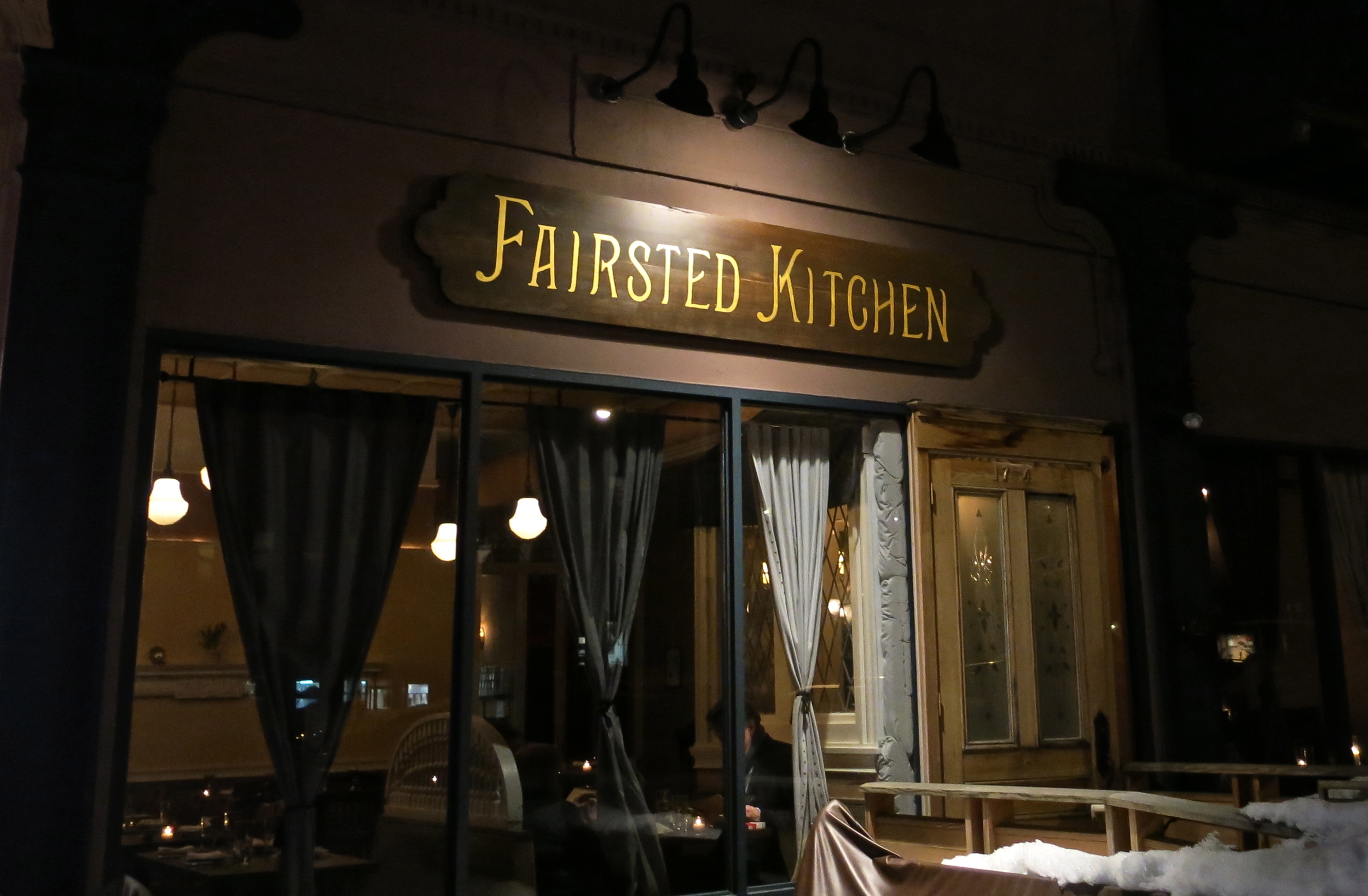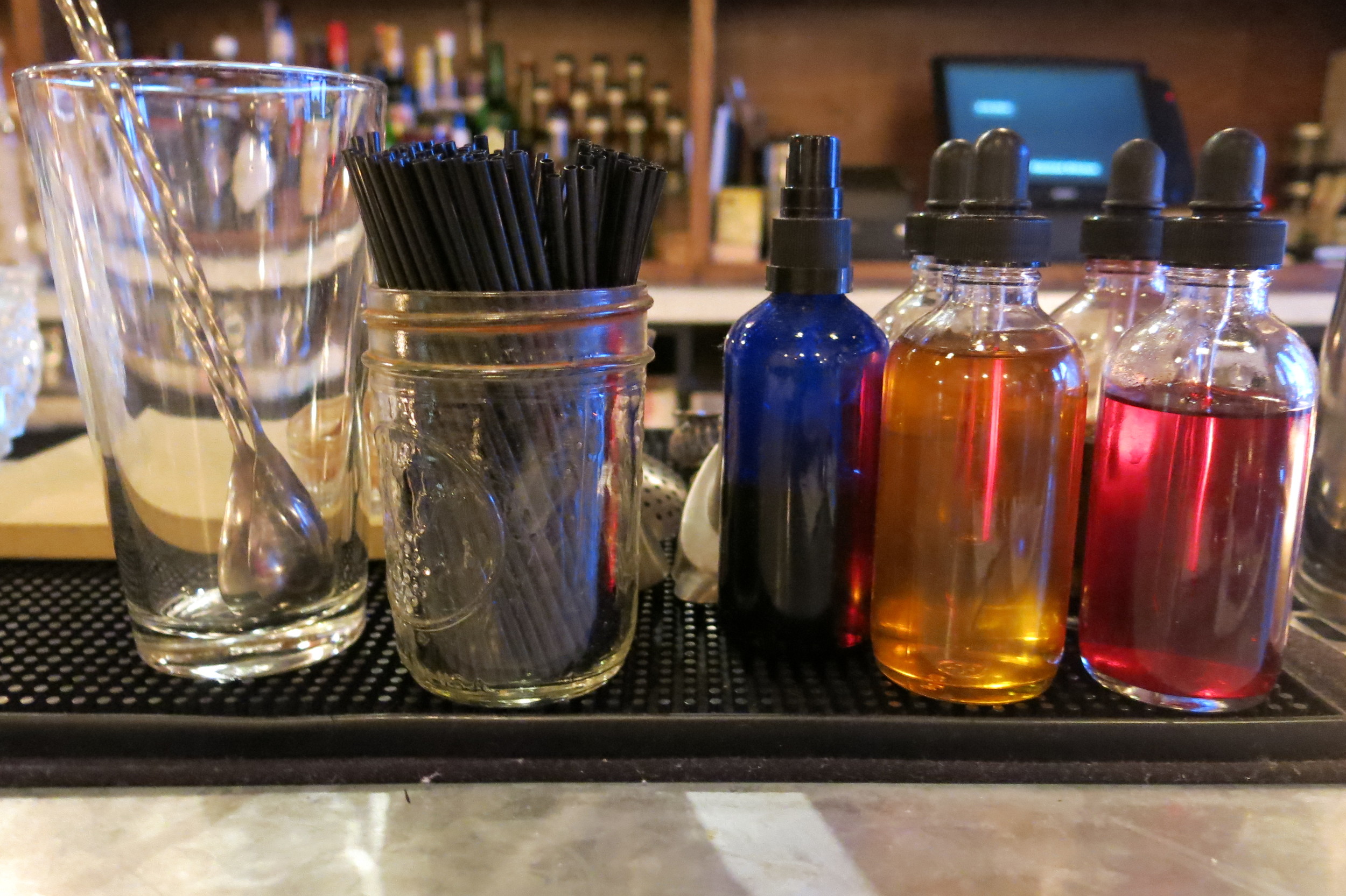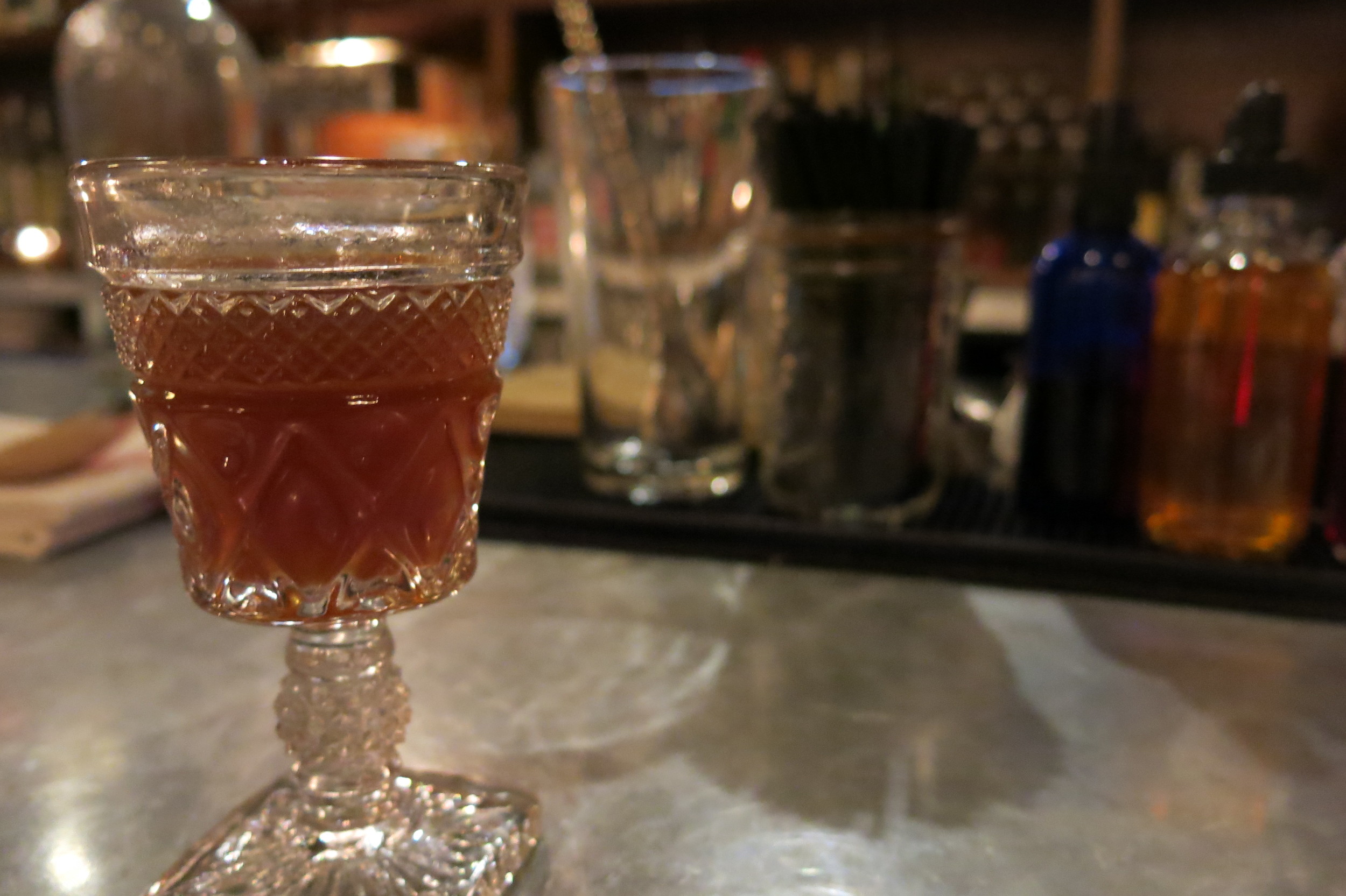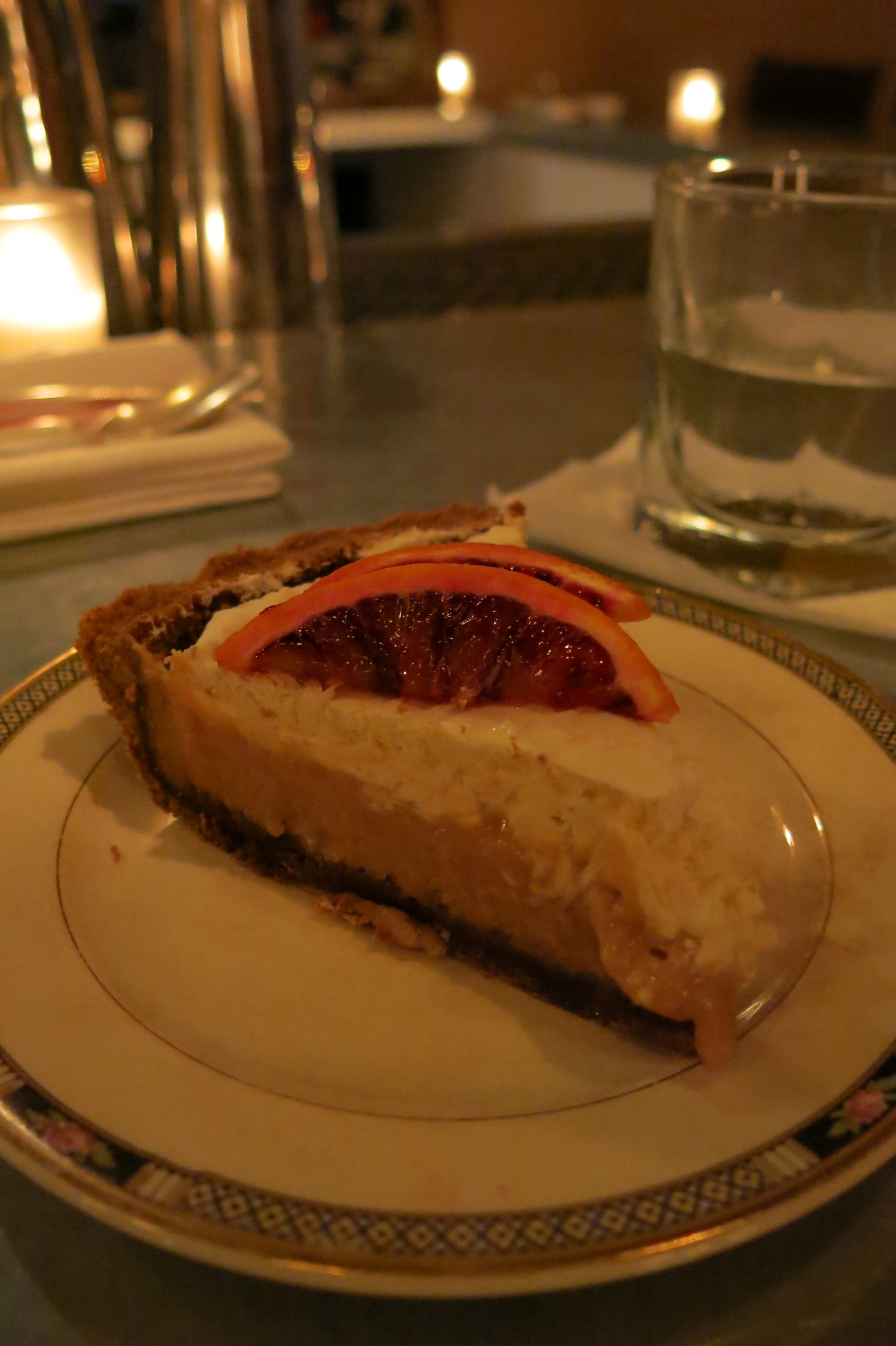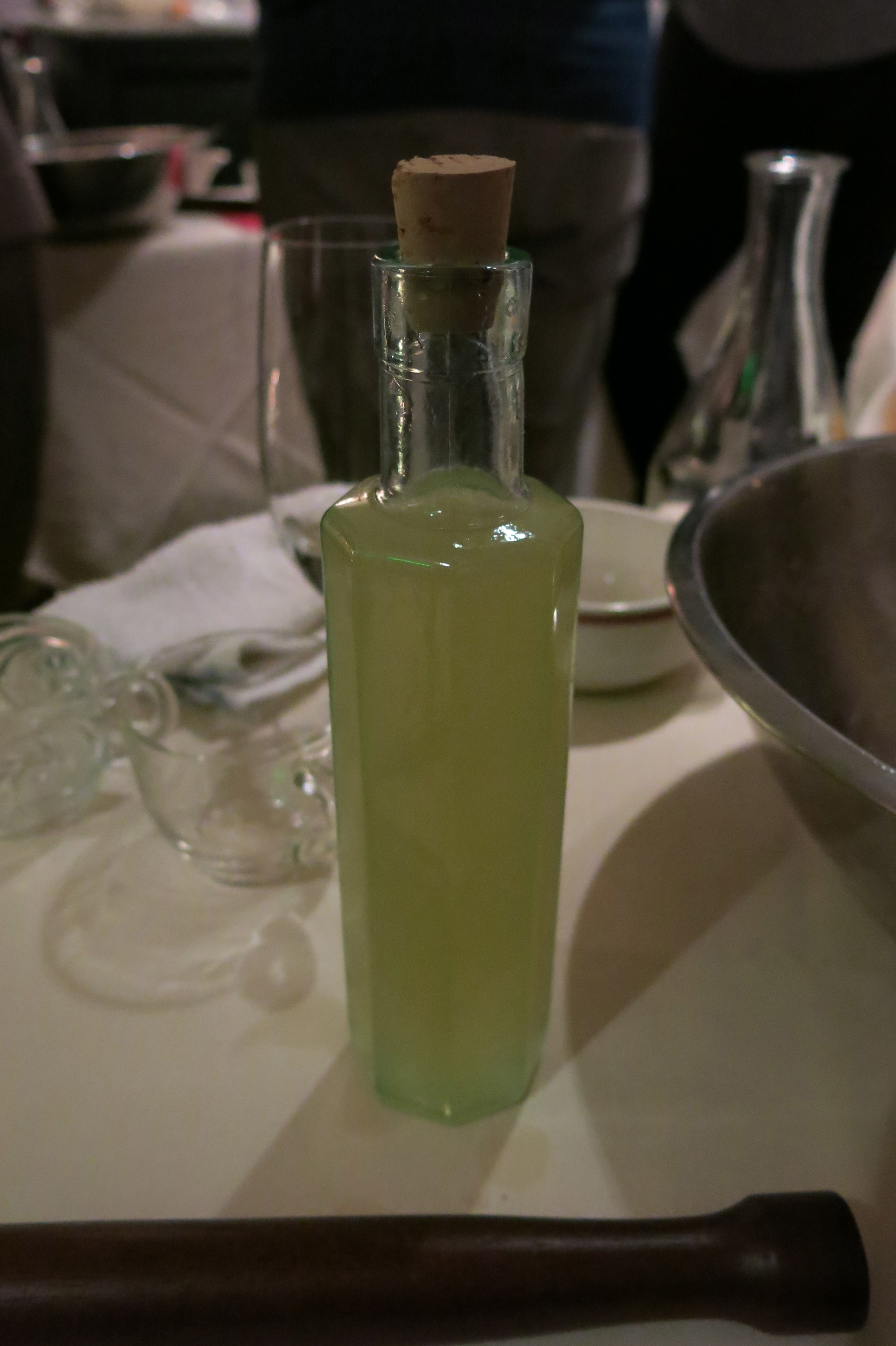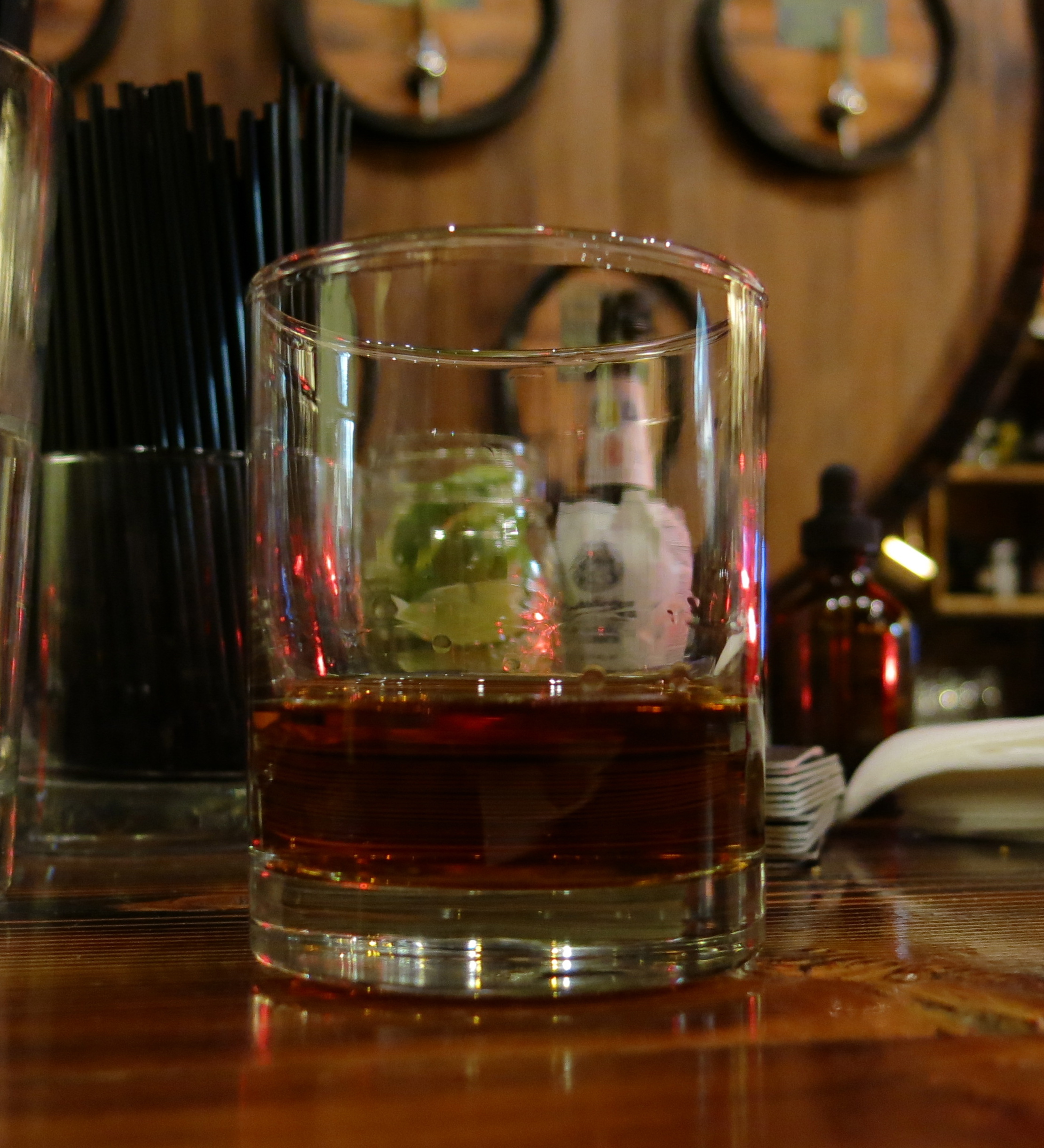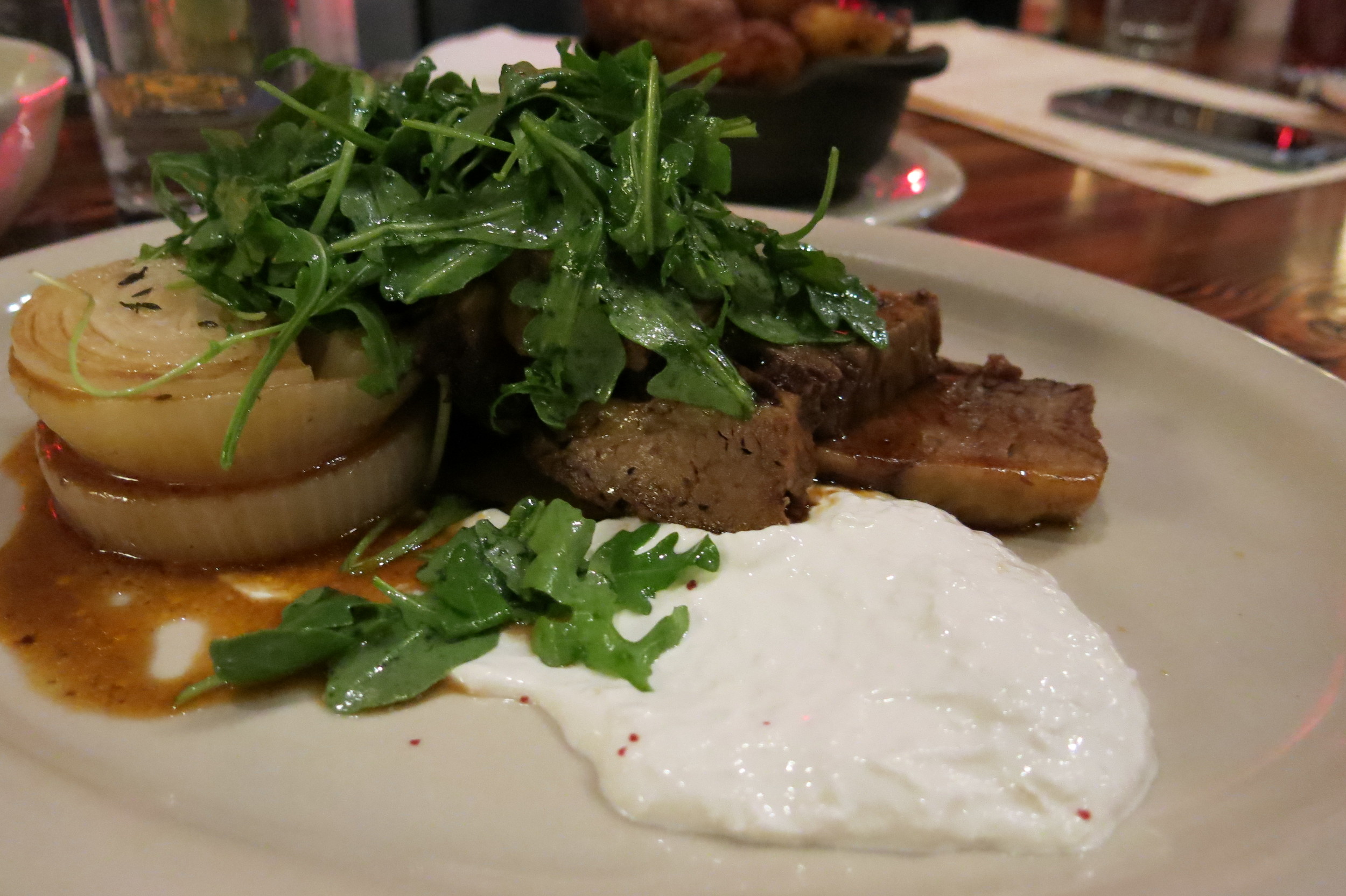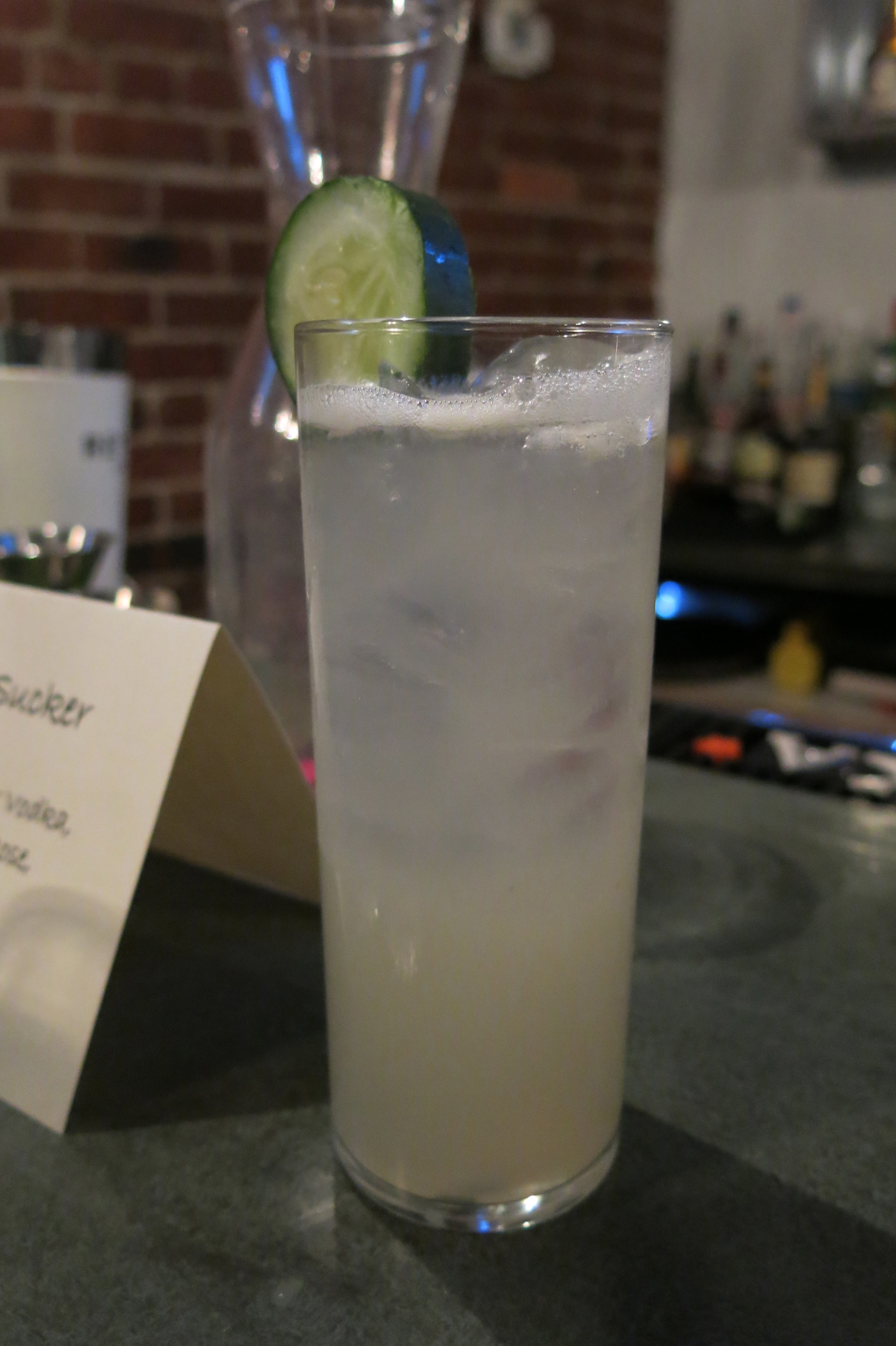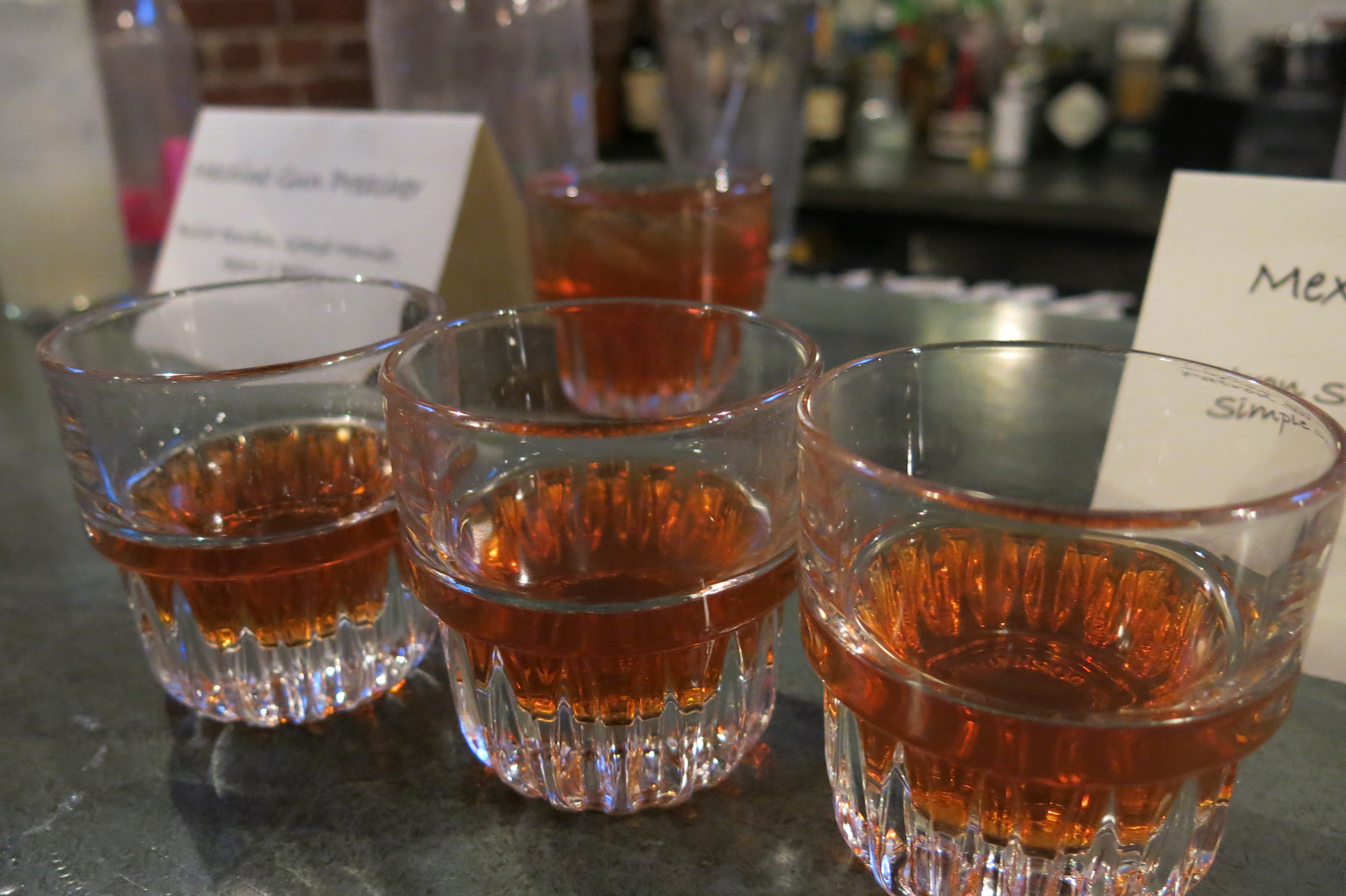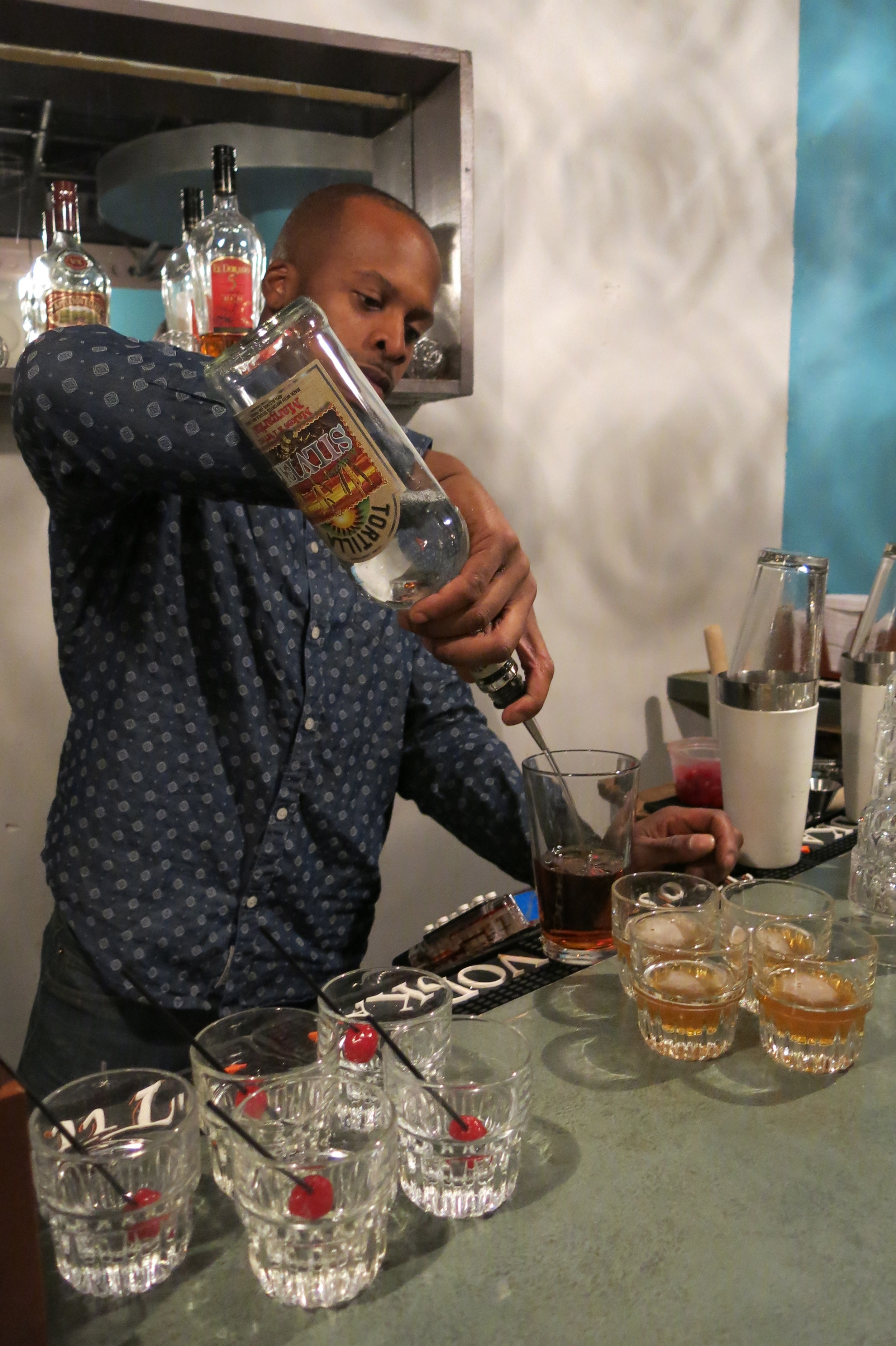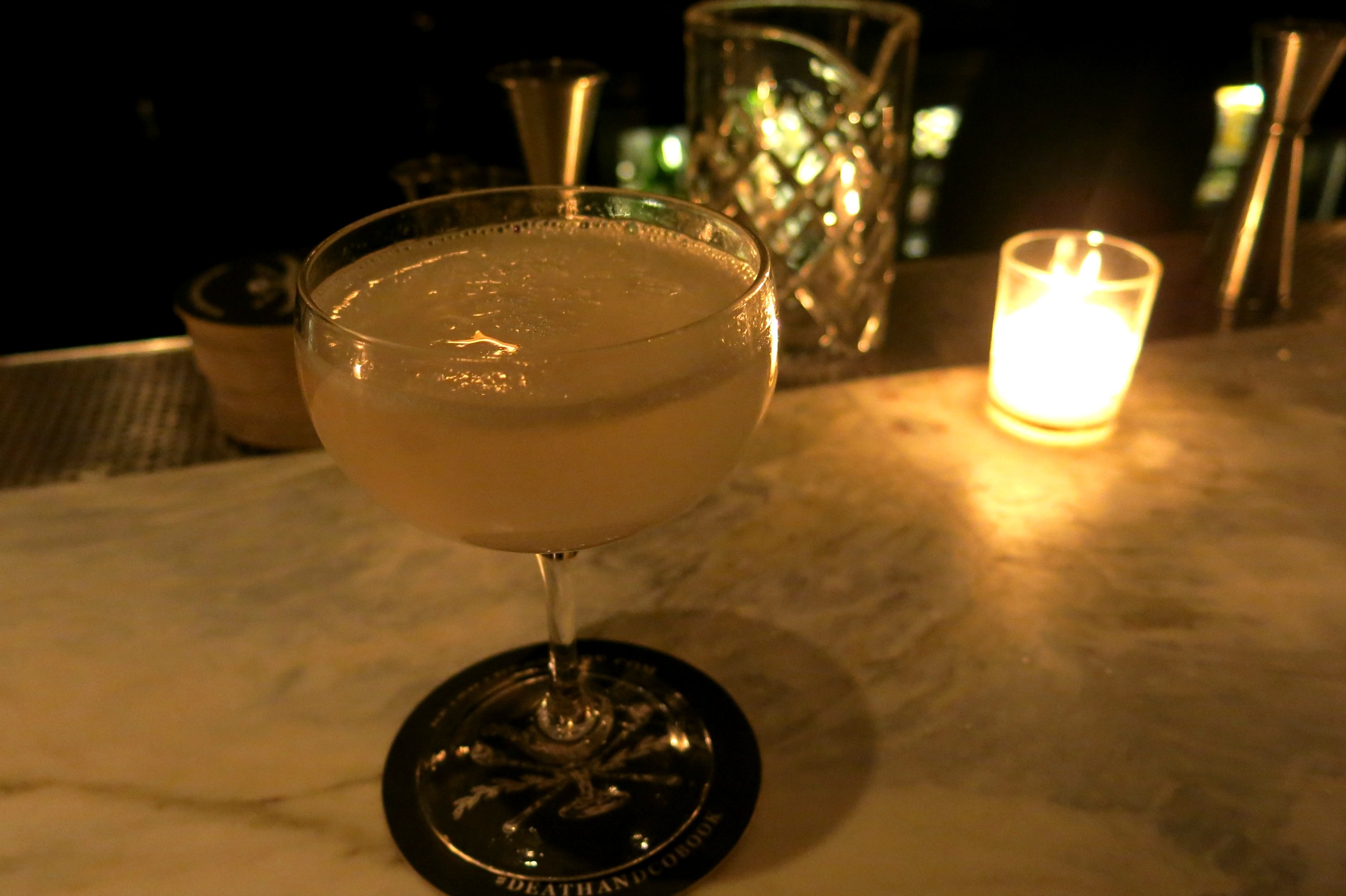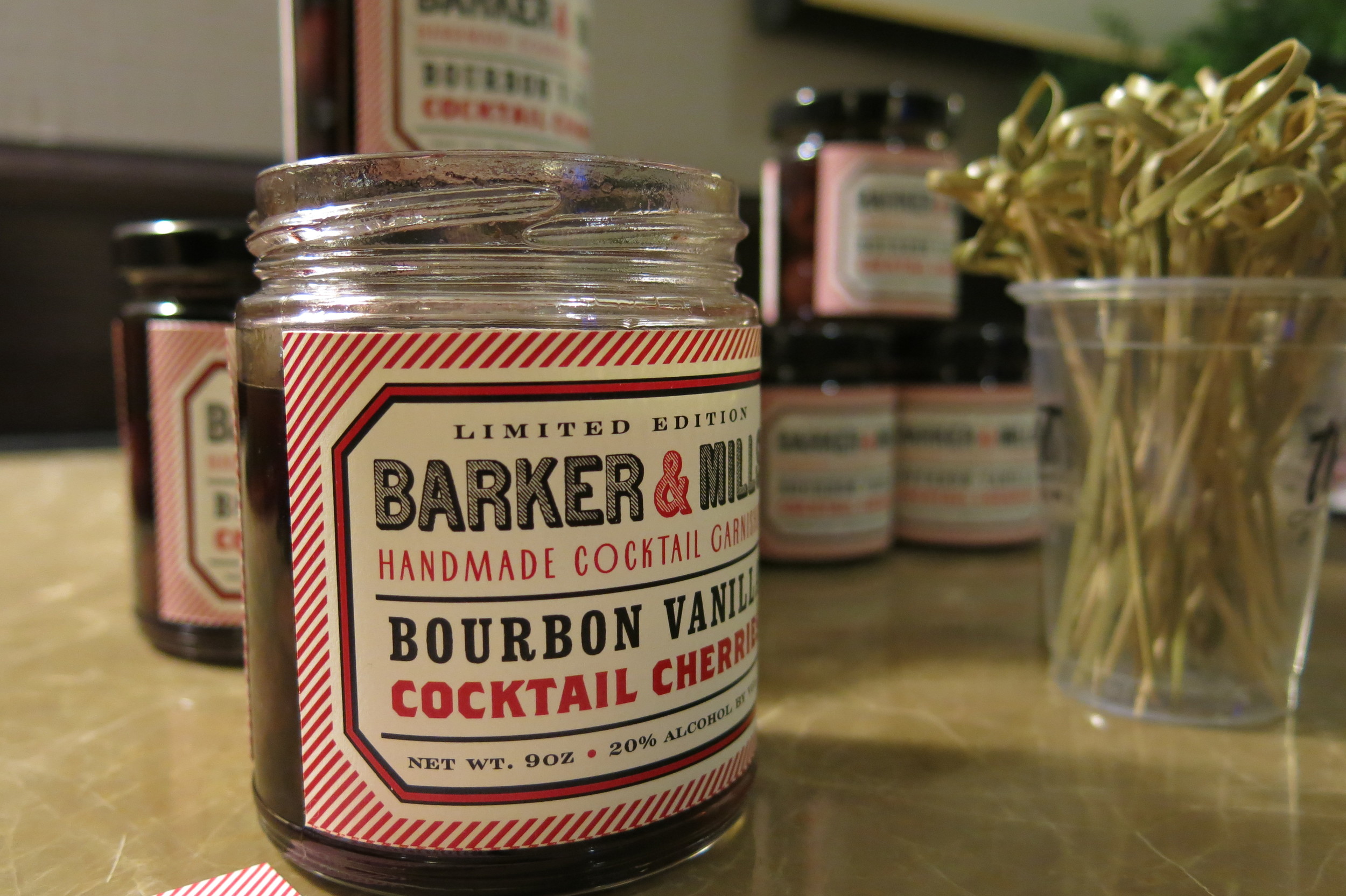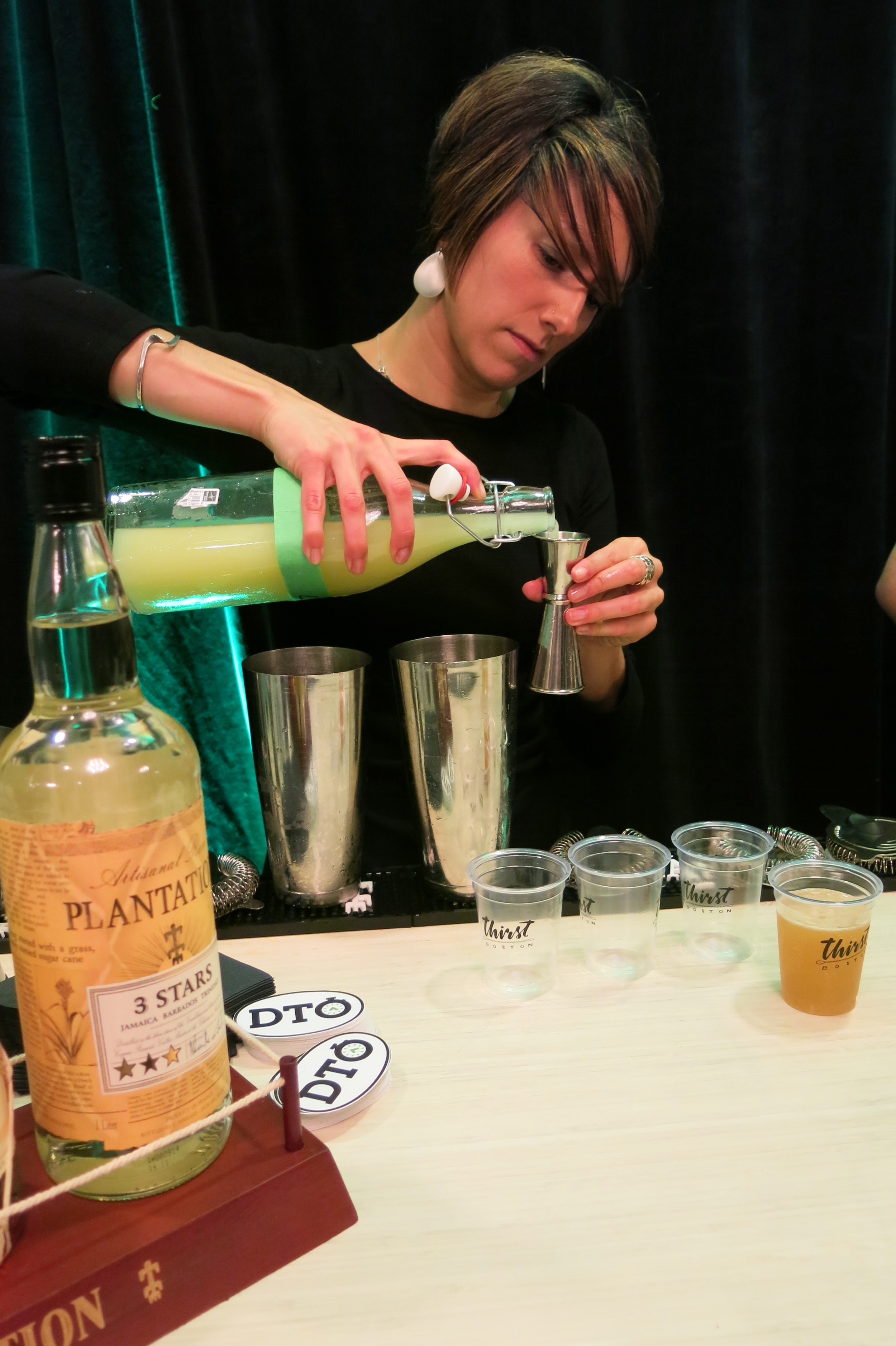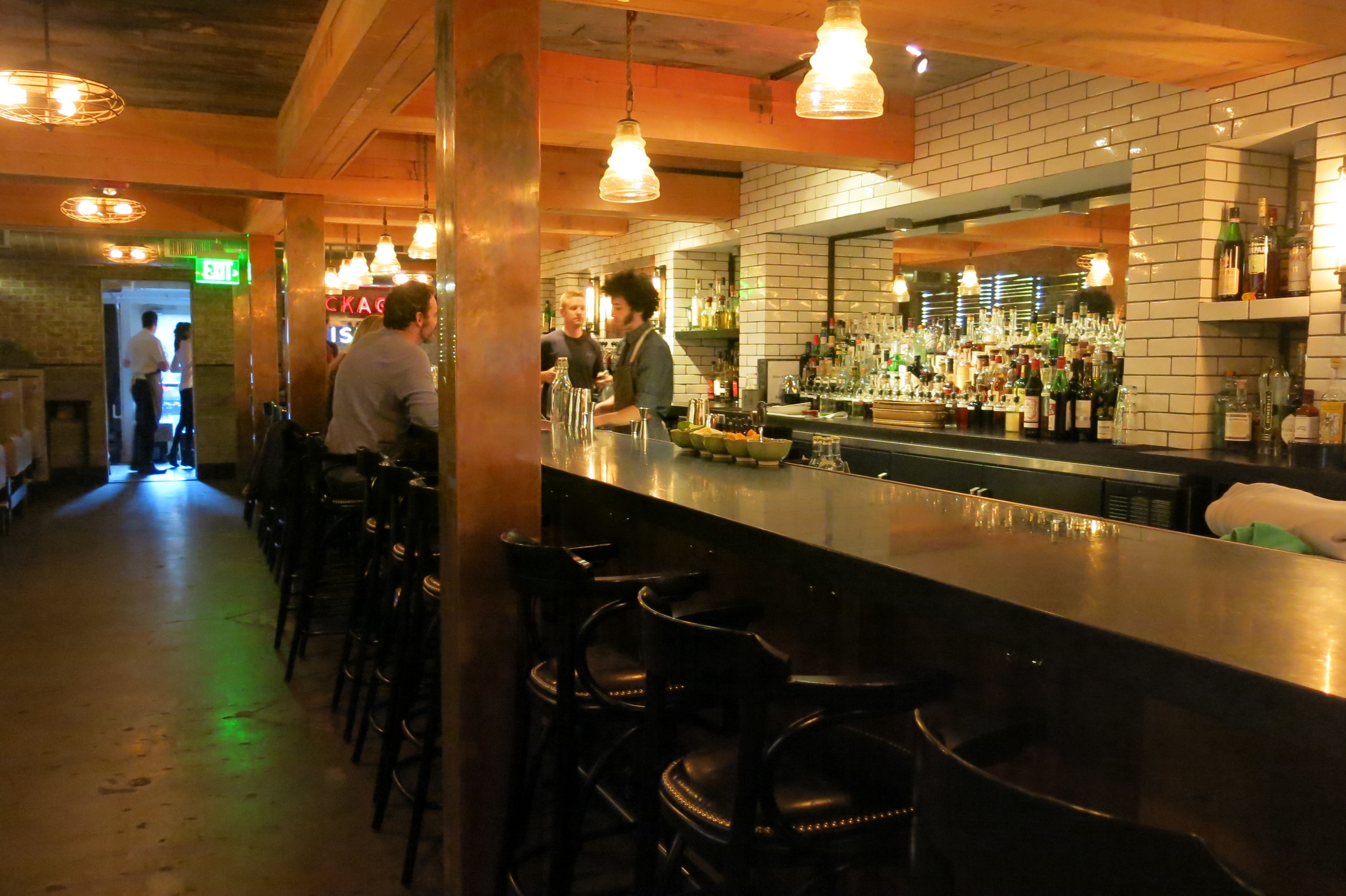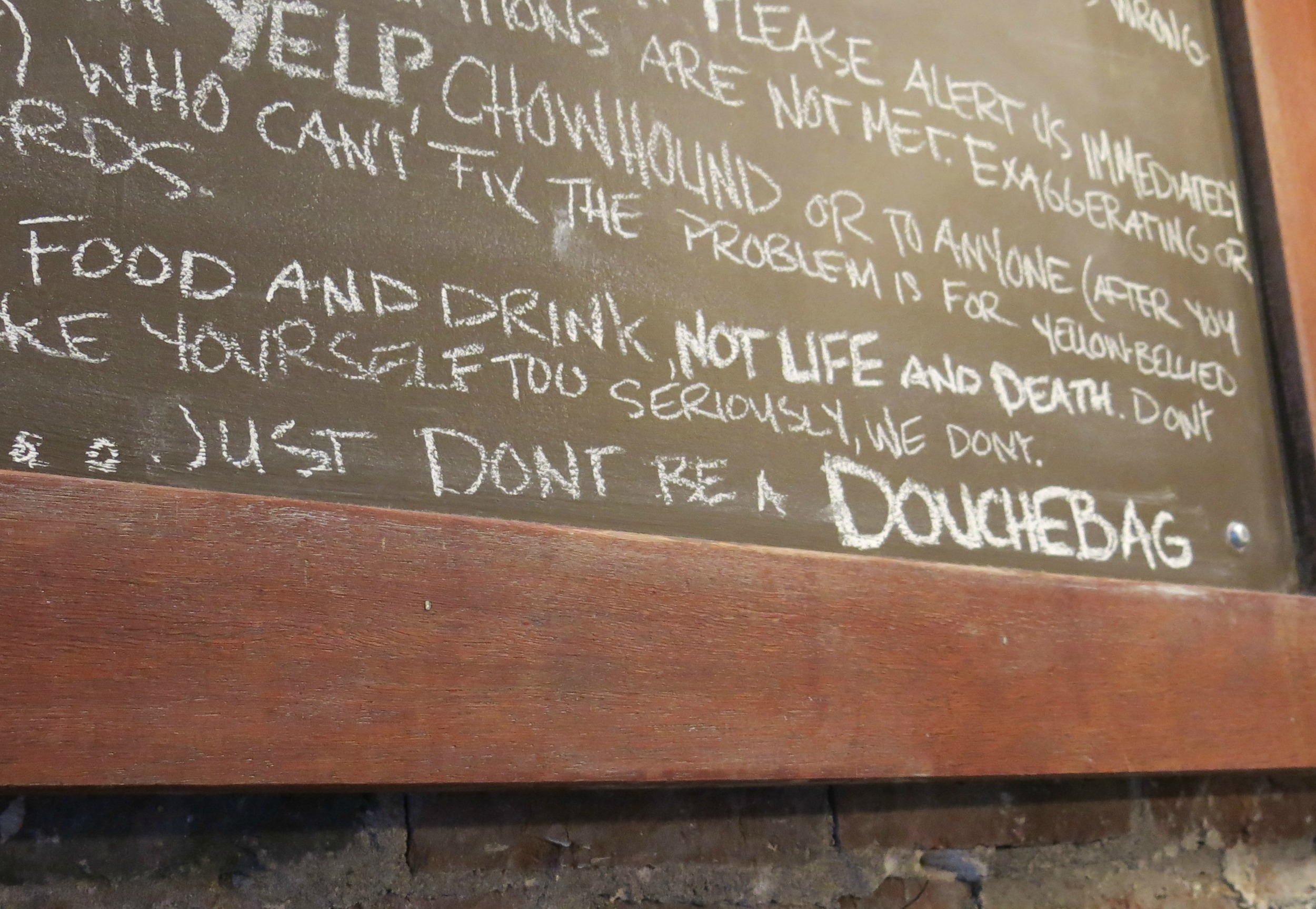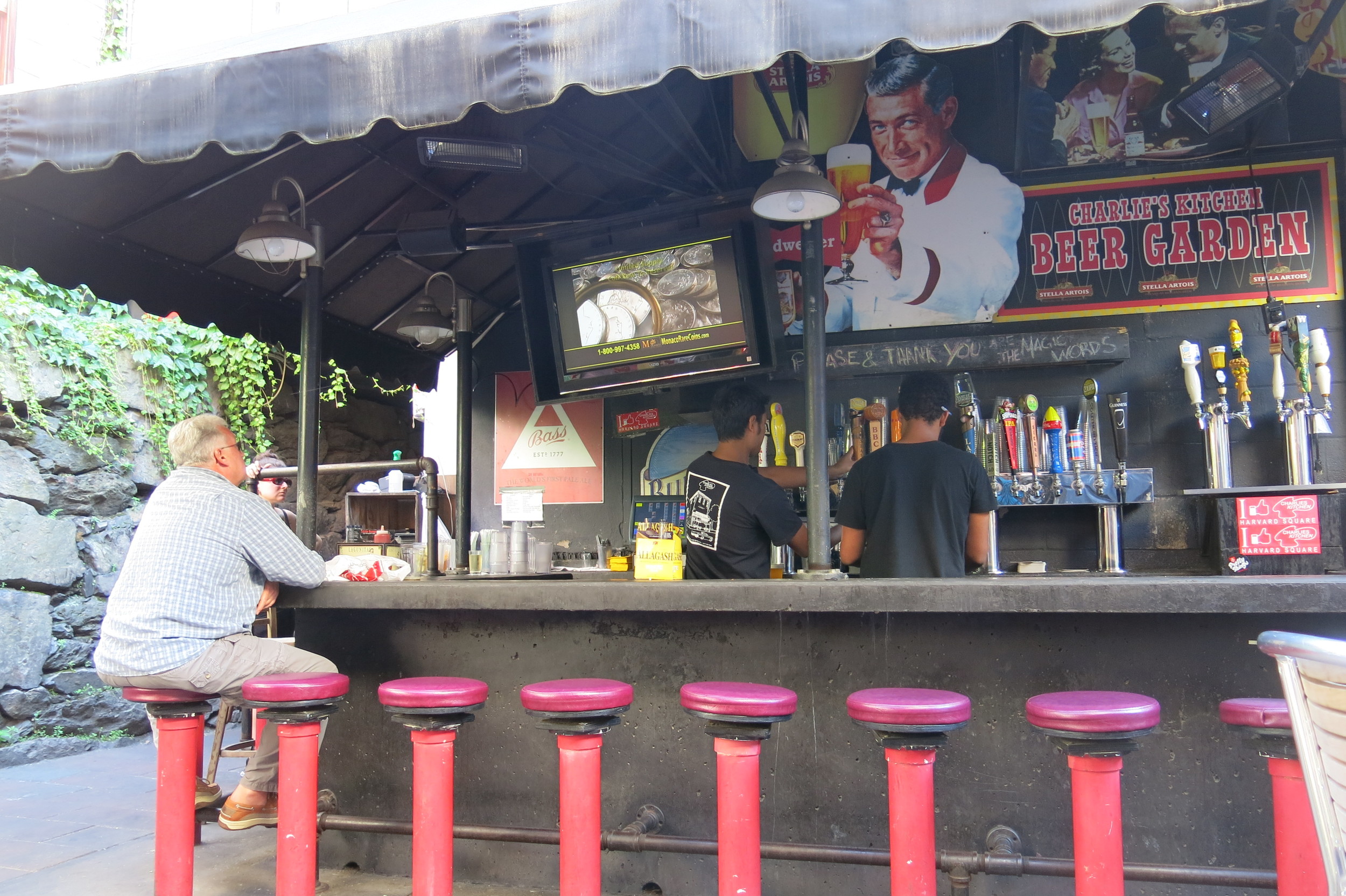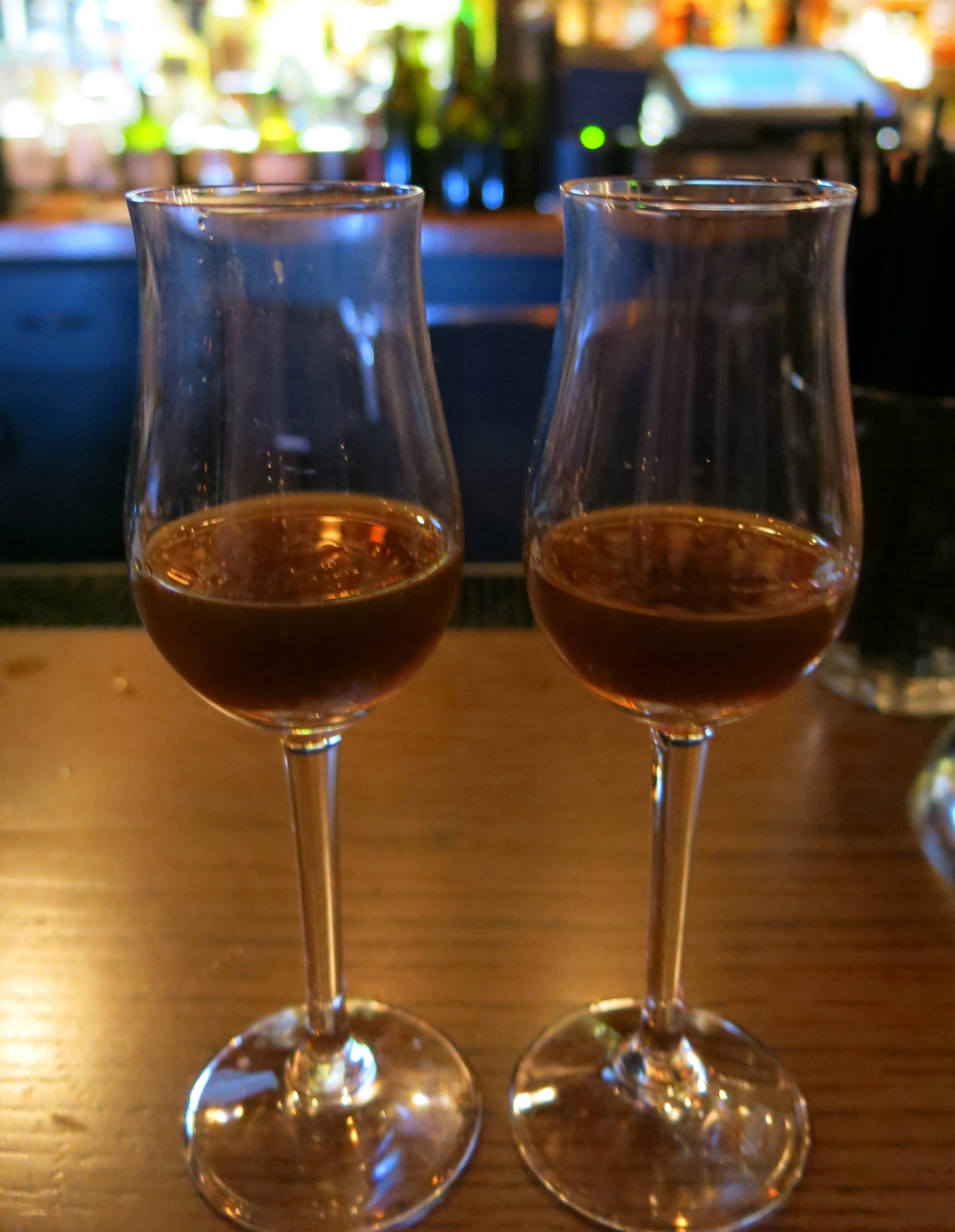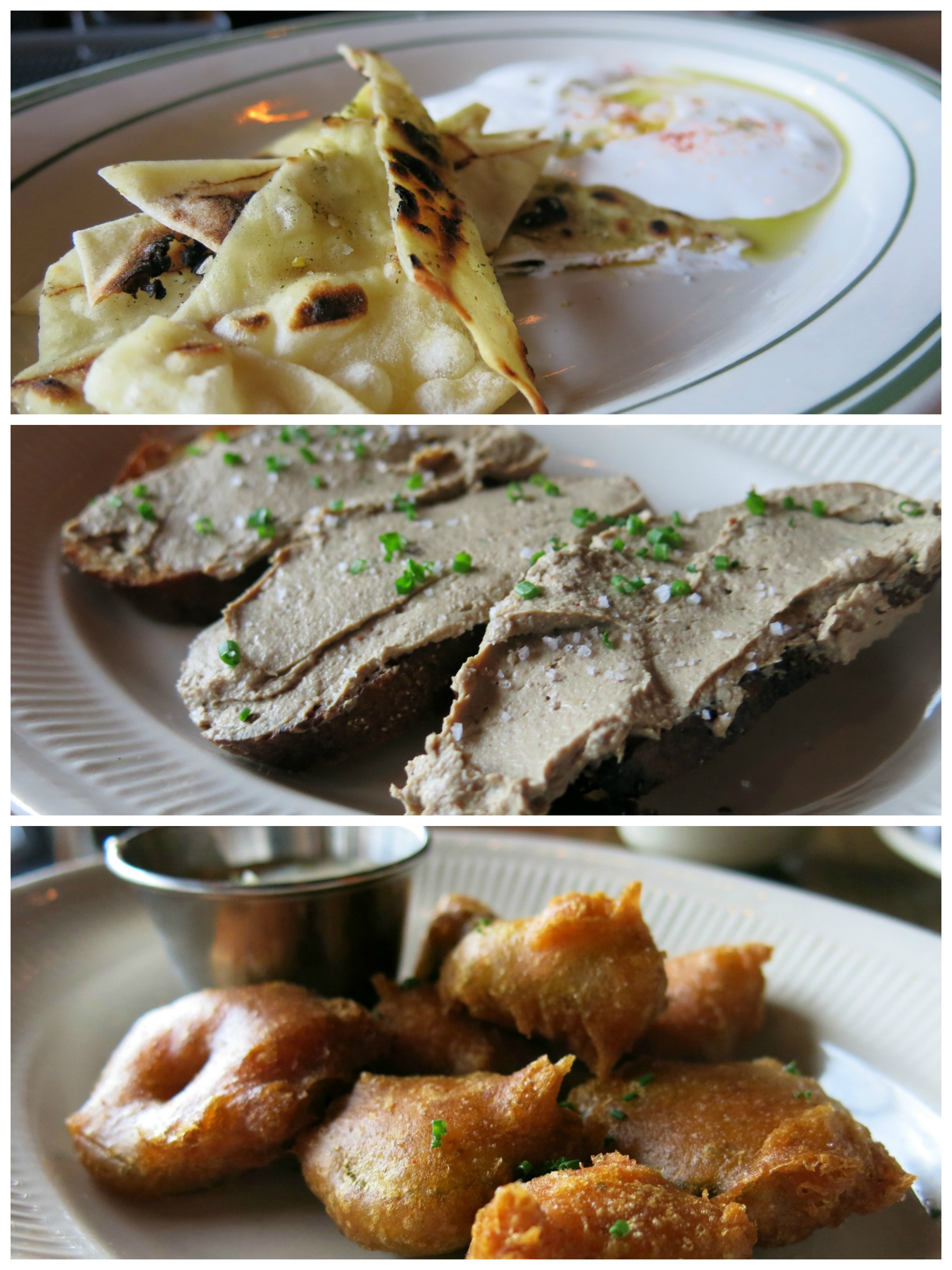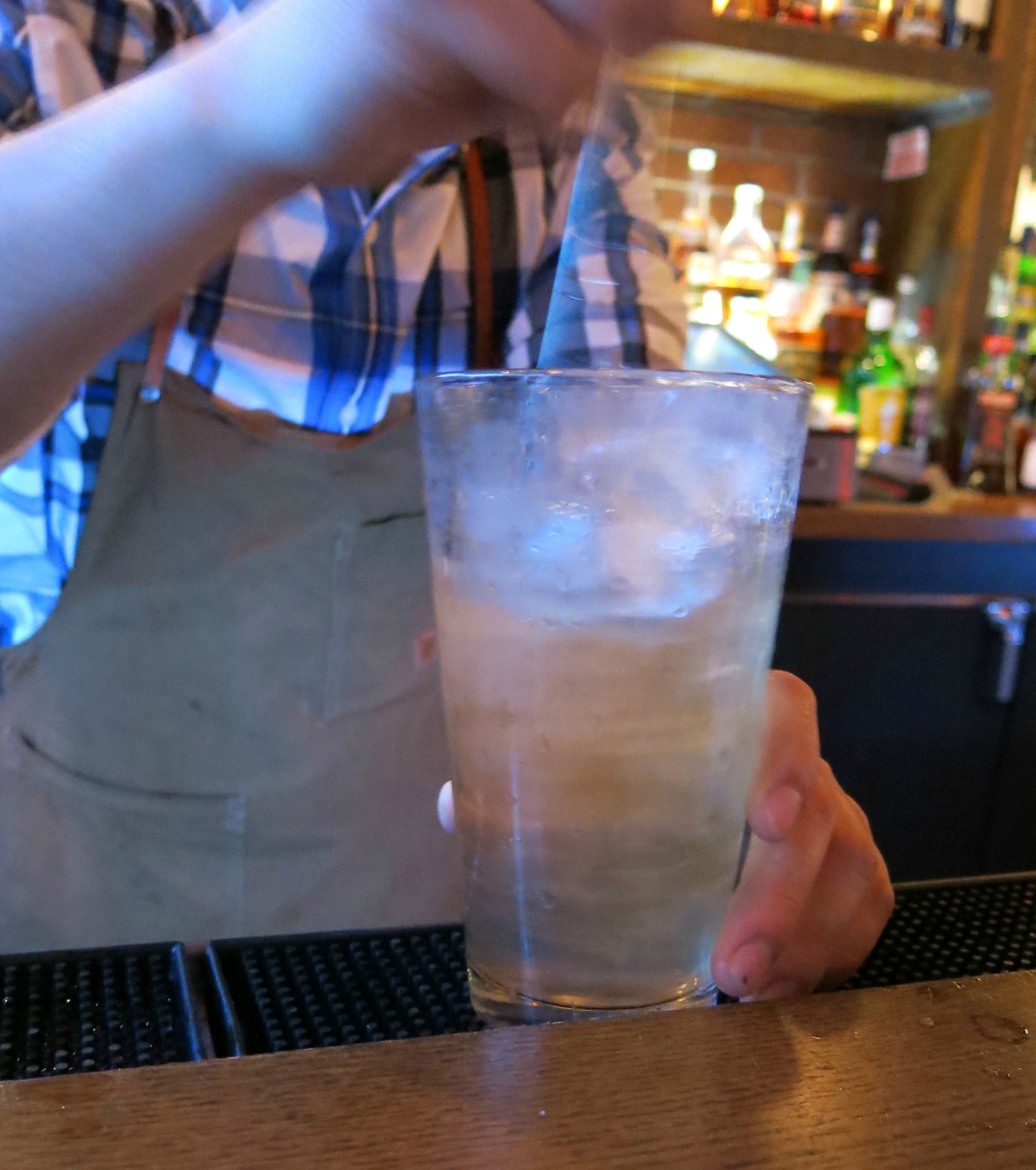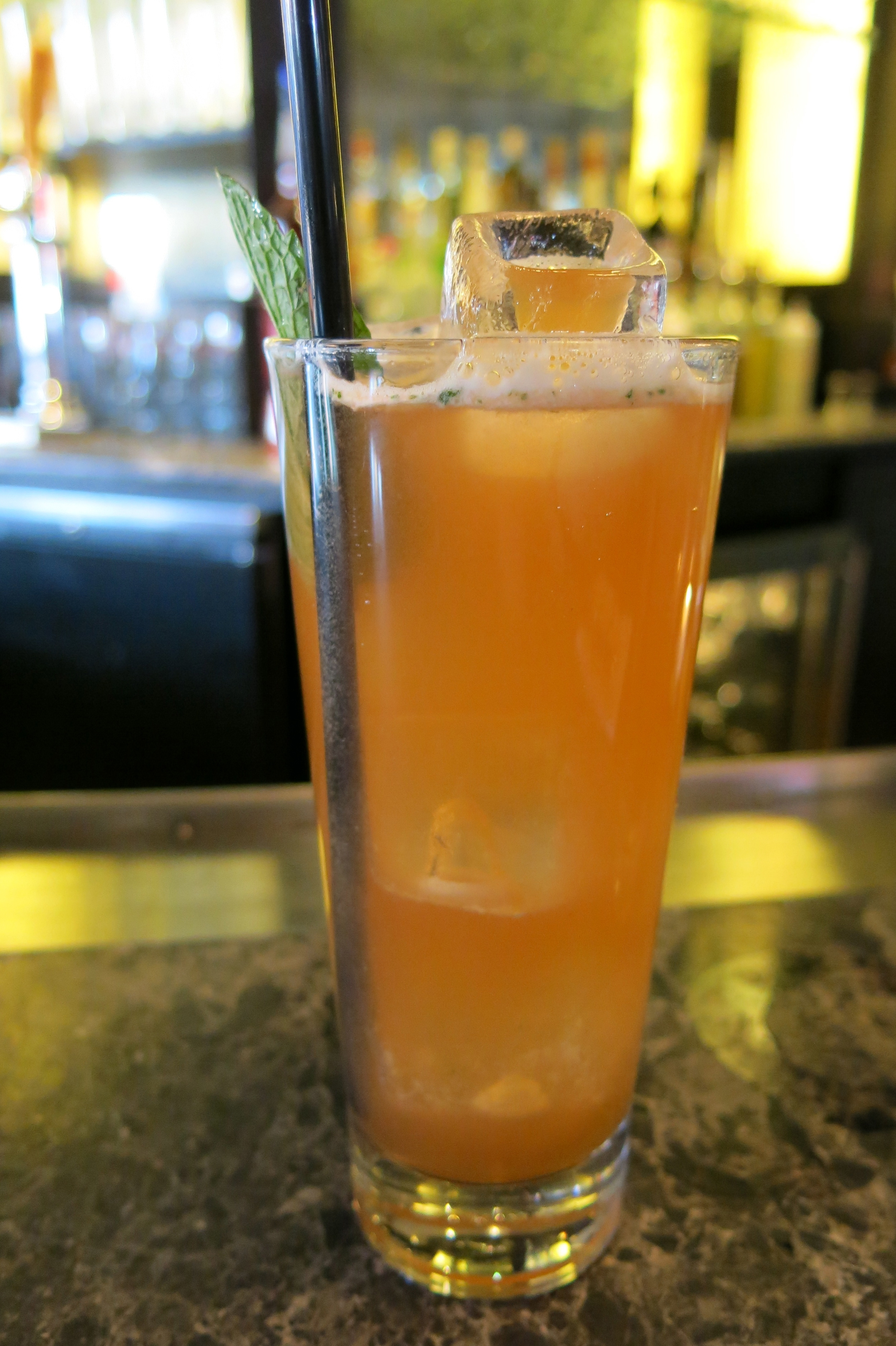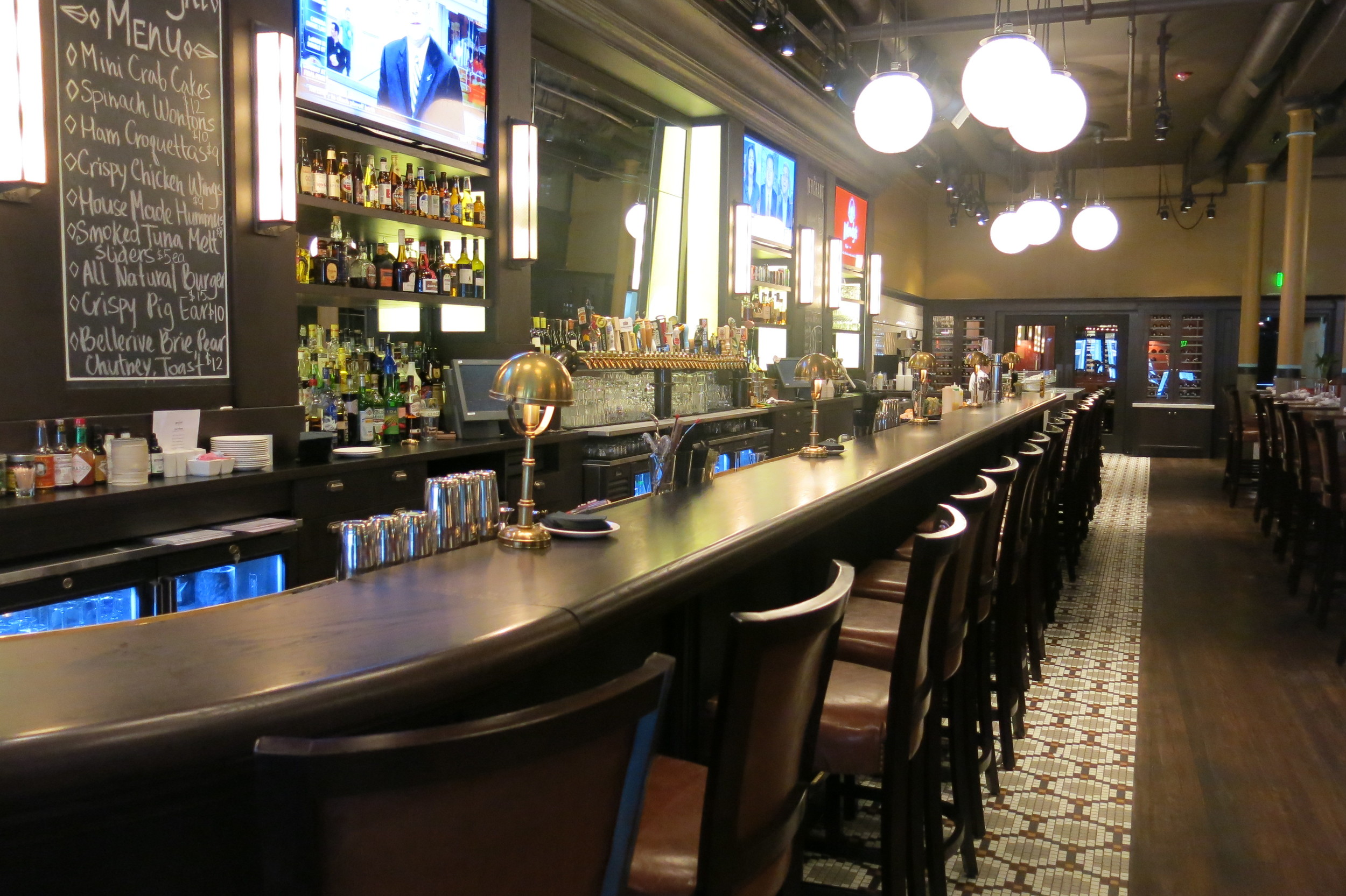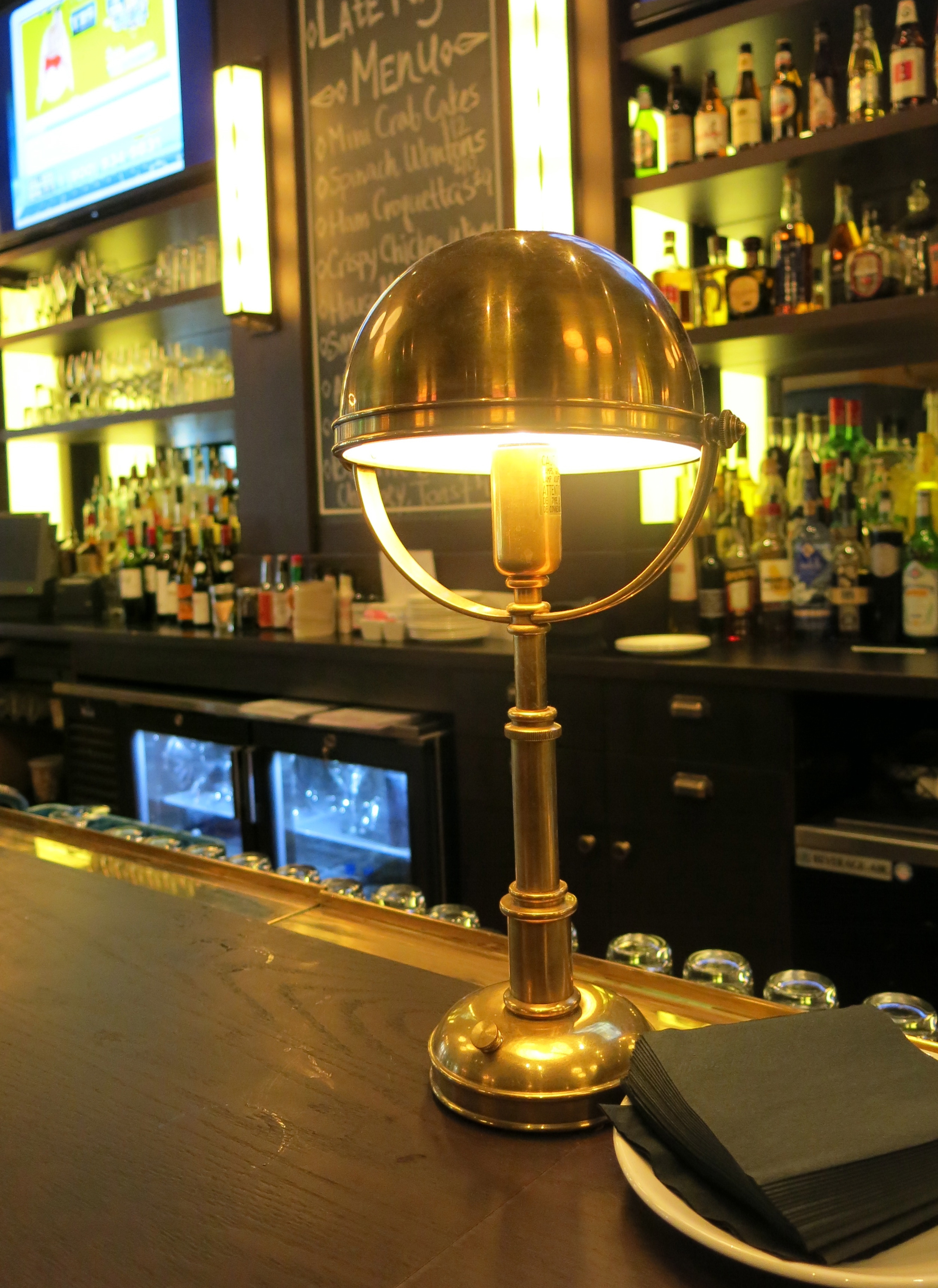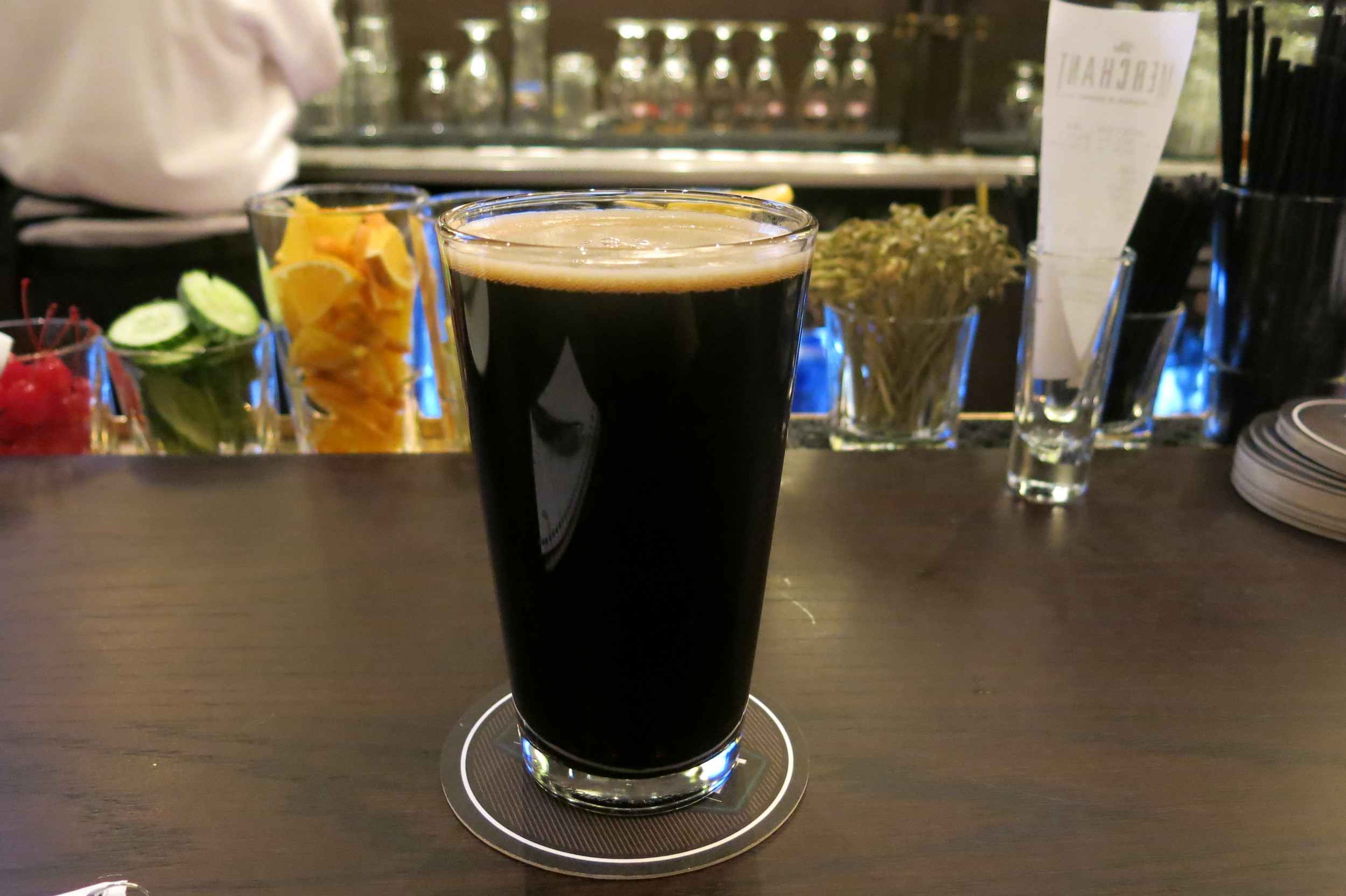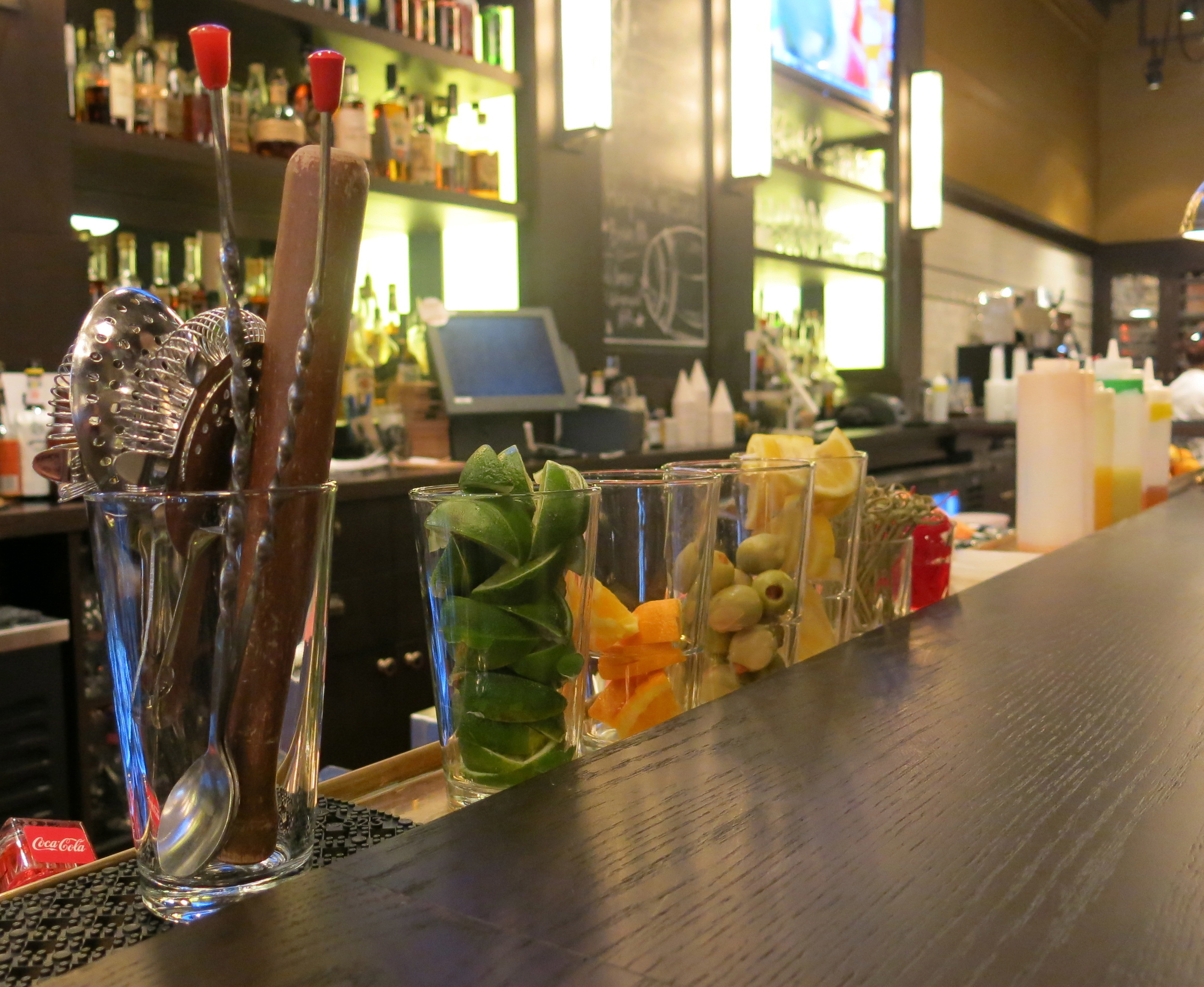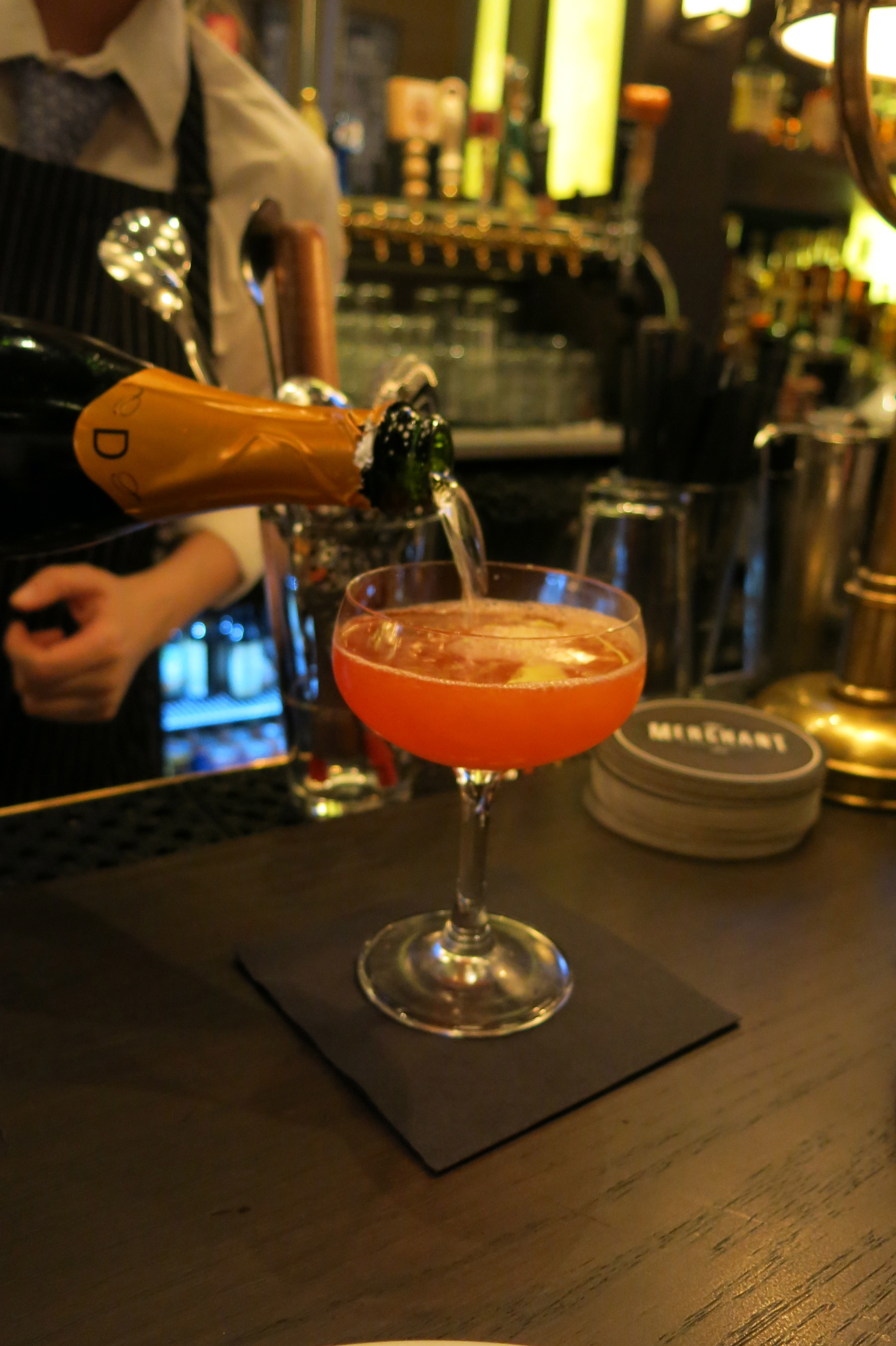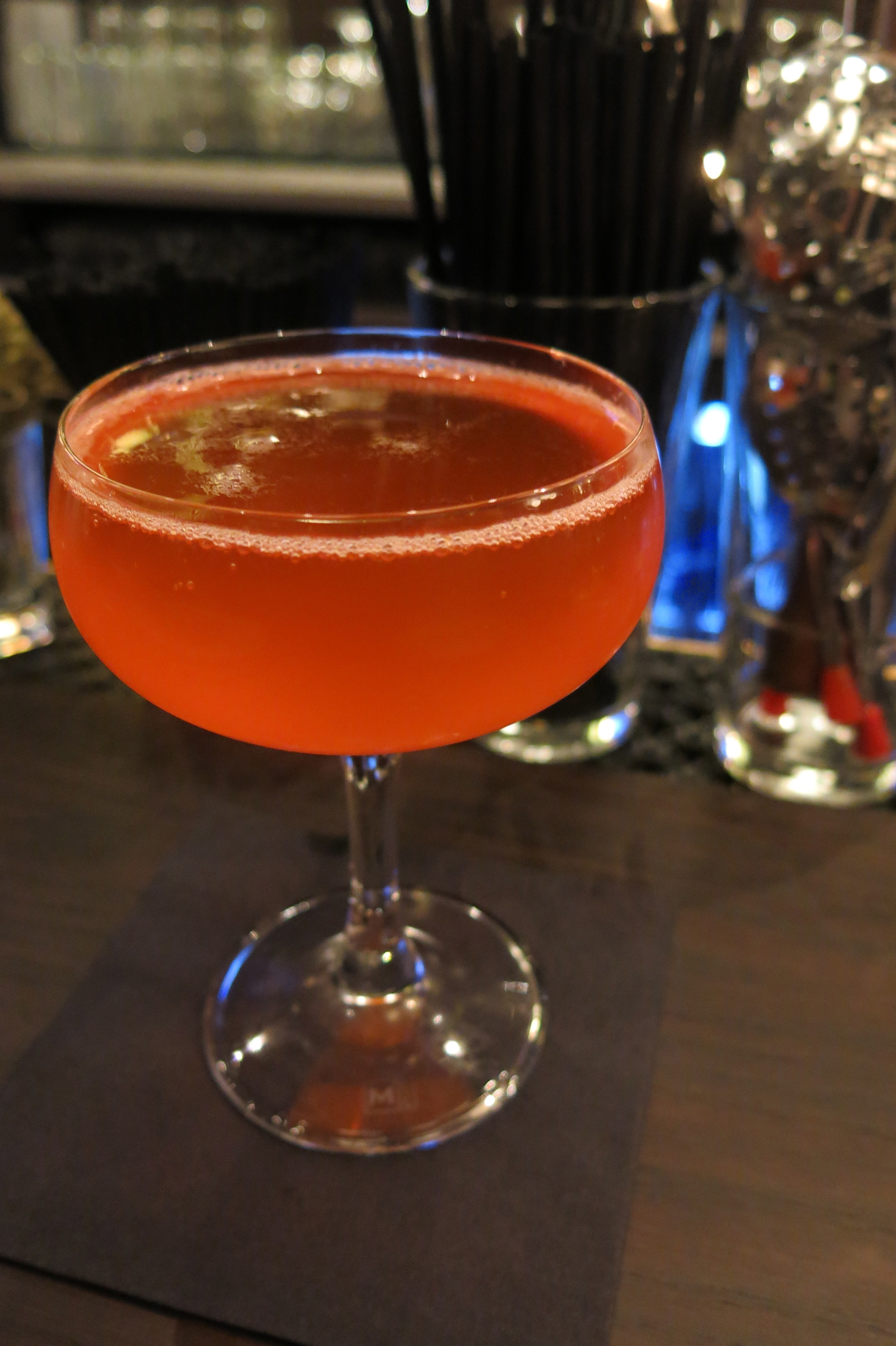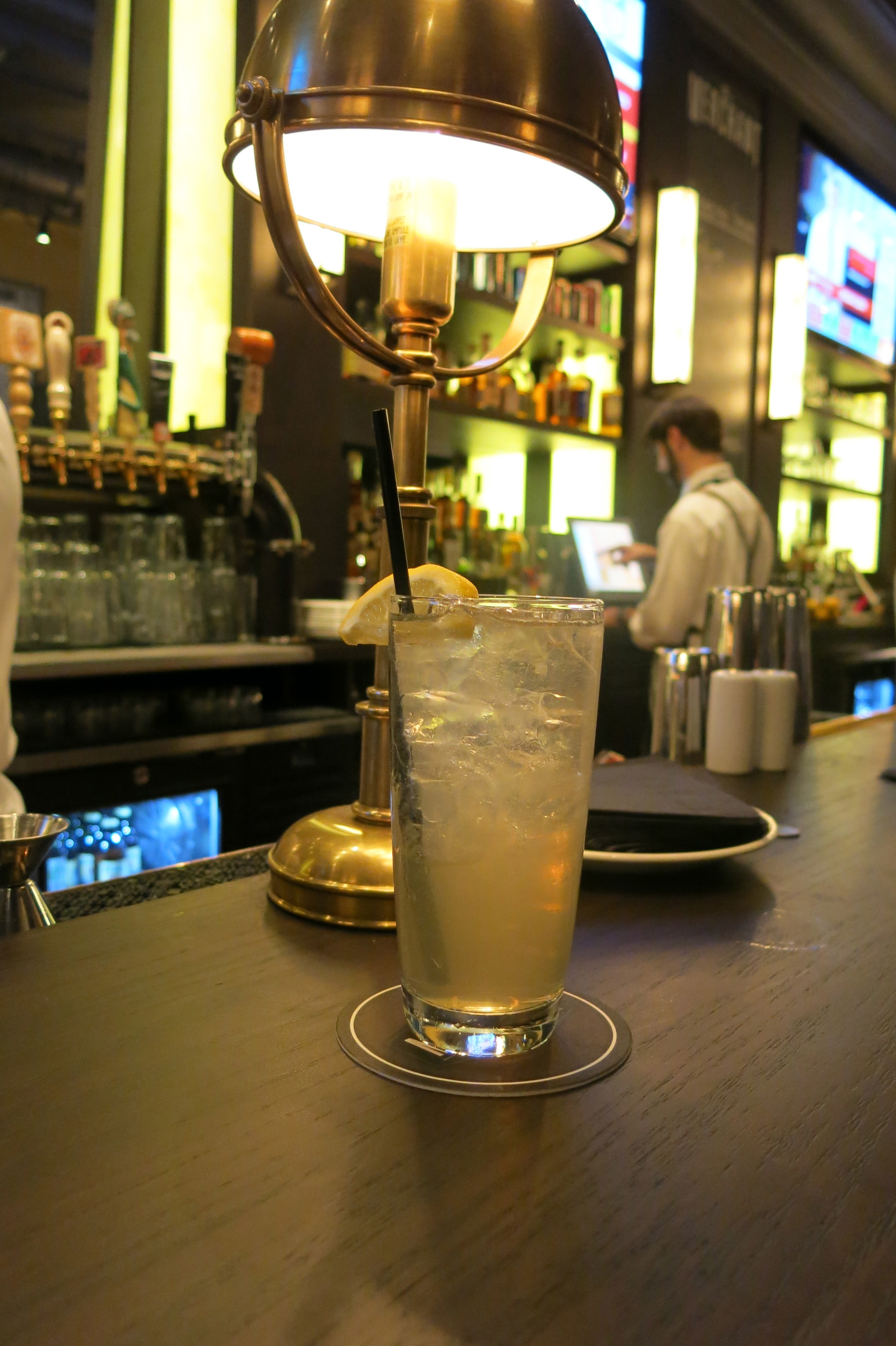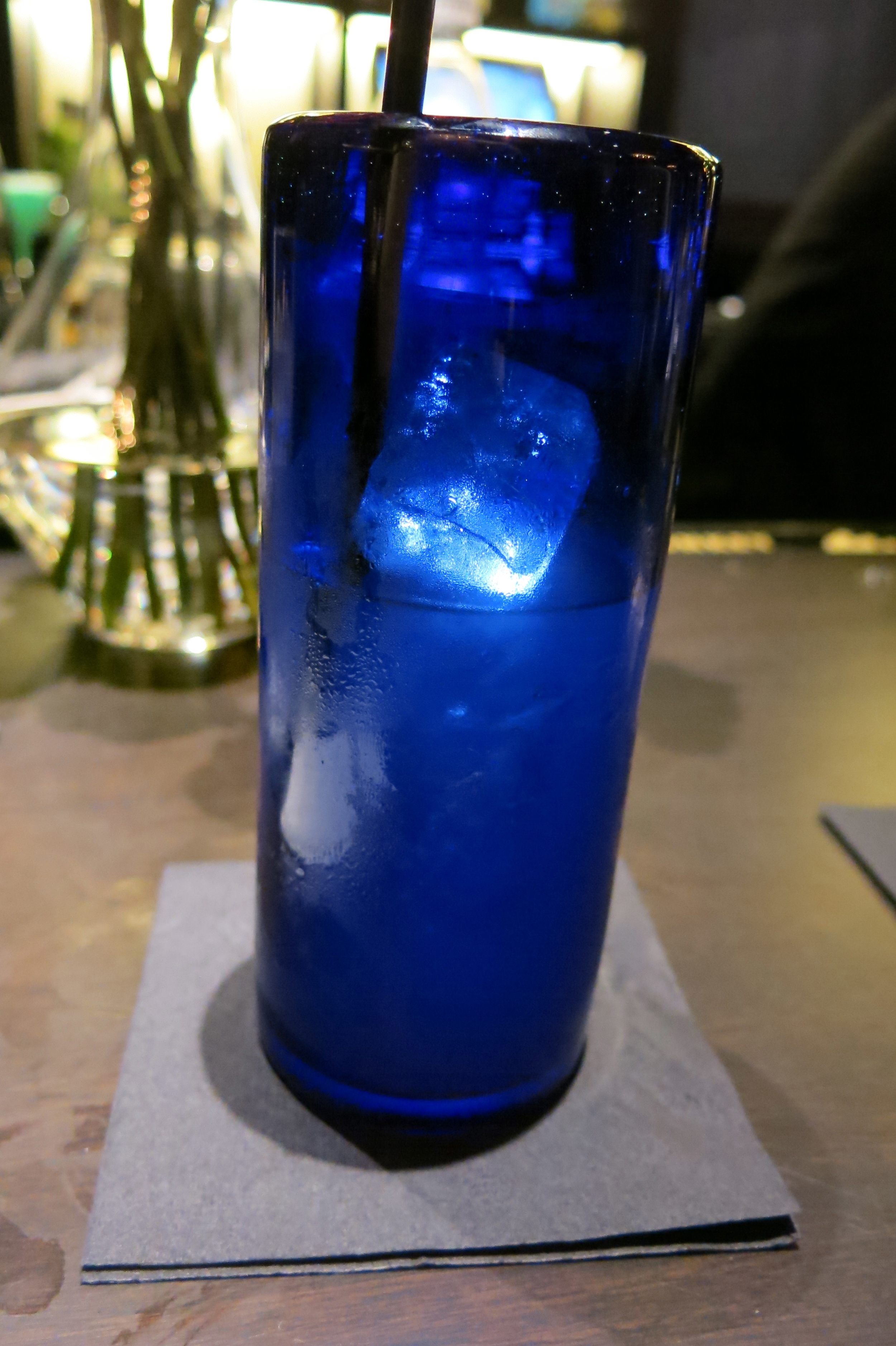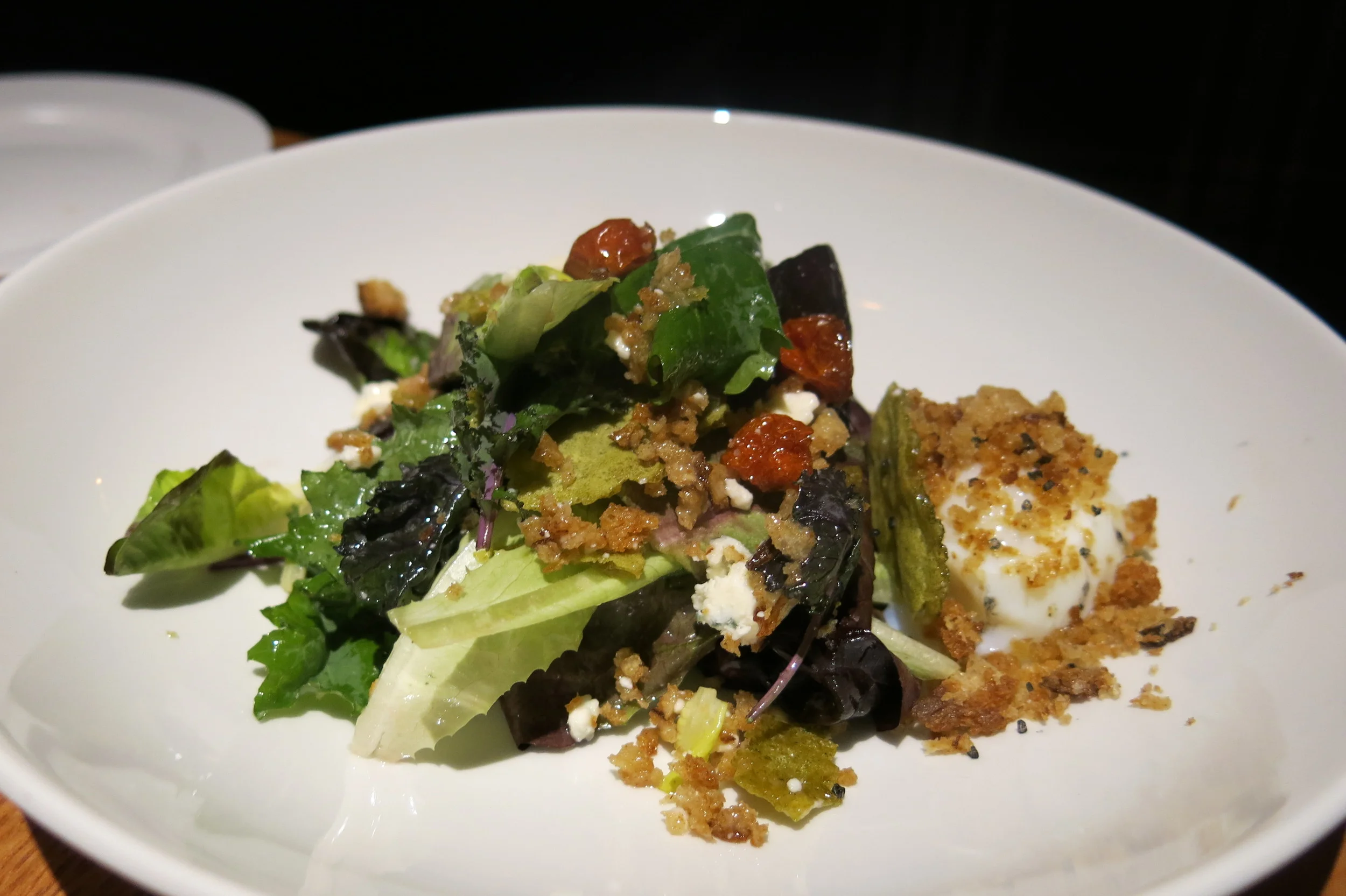Brassica Kitchen + Café
Lion's Tail
The GrandTen Bar
Fairsted Kitchen
Even if you aren’t familiar with the name Frederick Law Olmsted, chances are you’re acquainted with his work.
Olmsted is widely regarded as the godfather of American landscape architecture. In the latter half of the 19th century, Olmsted devoted his career to the design of urban parks and green spaces. Among the highlights of his spectacular resume are New York’s Central Park and, closer to home, Boston’s Emerald Necklace, the parkway that stretches from Back Bay to Dorchester and includes such tranquil sanctuaries as the Public Garden and the Arnold Arboretum. Olmsted moved to Brookline in 1883 and did much of his design work from his home office, which also served as the nation’s first full-time landscape architecture firm. He called his estate “Fairsted.”
More than a century later, Olmsted’s adopted hometown still bears his imprint. And on Beacon Street, a thoroughfare that would look unfathomably different without Olmsted’s influence, Fairsted Kitchen offers a nod to the famous landscape architect.
“We always tell people that Fairsted [Kitchen] could only exist in Washington Square, nowhere else,” bartender Will Isaza says while expounding upon the spirit of the neighborhood’s chief designer and onetime resident. “He made Beacon Street what it is today.”
The restaurant honors Olmsted not only nominally but aesthetically as well, capturing the essence of a Victorian-era home with its antique accessories, vintage-style wallpaper, and long curtains clasped behind floor-to-ceiling windows. A long table in the dining room and a menu teeming with small plates recall the sense of community that Olmsted promoted with his public parks.
But if the work of a 19th century urban planner doesn’t particularly resonate with you, Fairsted also evokes an atmosphere that may have a more sentimental appeal. “The owners wanted it to feel like grandma’s living room,” Will says. And that may be an even better way to describe the space.
Despite having opened its doors just over a year ago, Fairsted has the appearance and character of an old-fashioned, well-maintained home. Hardwood floors and wooden tables, glowing candles, polished silver, and sconce lighting give it a sense of timelessness.
And as you might expect of a beloved grandparent’s house, Fairsted is neat and tidy but dotted with conversation pieces. Behind the 12-seat bar, with its stainless steel surface, is a collection of odds and ends such as books, toy dinosaurs, and a globe. None of the plates, silverware, or glassware are coordinated, giving the impression that they’d belonged to disparate collections that have lost pieces over the years.
Taken together, the subtle touches serve to make Fairsted feel cozy and lived-in, like a home that’s been blessed with a steady stream of occupants and visitors over the years.
Of course, your grandparents probably never made the sort of drinks you’ll find here.
Fairsted Kichen stands out in a neighborhood that isn’t known for its variety of craft cocktail bars. Fairsted’s beverage program, designed collectively by the staff, is highly original but approachable. There’s a deliberate effort to “keep it light,” as Will says, particularly with drinks named for movies (Days of Future Past Punch) and songs. With a nod to both the Beastie Boys and the town Fairsted resides in, No Sleep Til Brookline combines bourbon, Amaro Montenegro, lemon, and Angostura bitters.
The Fresh Tracks, made with vodka, thyme, lemon, and Chartreuse, is surprising. With strong flavors like thyme and Chartreuse, I was expecting something bold and intensely herbal. Instead it’s light, refreshing, and well balanced, with a mild bitterness. Will explains that Fresh Tracks is made with a thyme- and tarragon-infused vodka, as opposed to a syrup, which seems to soften the flavor somewhat.
There’s nothing soft about the Foreign Legion, though, with its mix of mezcal, sherry, Ancho Reyes, and Punt e Mes. Mezcal’s distinctive smoky character is a natural partner for Ancho Reyes, a spicy ancho chile liqueur, and the Punt e Mes adds its trademark bitterness. The sherry contributes a rich, nutty flavor and keeps the whole affair pretty balanced.
Much like the bar’s menagerie of mismatched oddities, Fairsted’s drinks are intended to spark conversation. On that note, few drinks command more attention than the Black Sails, with its unexpected display of pyrotechnics. This blend of rum, lime, Cappelletti, and cacao garners oohs and ahhhs when a dusting of cinnamon is ignited while being sprinkled over the top of the drink (an event I most assuredly would have photographed had I known it was coming). The cocktail itself lives up to its fiery presentation, with bold notes of chocolate and cinnamon.
A cascade of sparks might be an obvious conversation starter, but many of the drinks are intended to prompt a question or two on account of their sometimes unusual composition. “Count Me In!” is a crisp, bitter cocktail made with fresh orange, Becherovka, Campari, and soda. You’re far more knowledgeable than I am if you know what Becherovka is without having to look it up.
The Southern Cross is made with cognac, clove, Amaro Meletti, and bubbles. The source of the up-front clove flavor is mysterious – is it a liqueur? a syrup? an infused spirit?
You can pull out your phone and discover that Becherovka is an herbal liqueur made in the Czech Republic (and that their website is maddening to navigate). You can speculate about the source of the clove flavor in the Southern Cross. Then again, why not just ask?
“We keep the lines of communication open,” Will says. “We don’t want to scare anyone away.” And he acknowledges that something like “clove” is deliberately vague. “We try to keep it simple in terms of the flavor components. If people want to ask about the ingredients, we can tell them. If not, at least they know the flavors.” (I did ask – it’s a clove and cardamom syrup.)
If any of Fairsted’s drinks demand a little interrogation, it’s the rotating selection of draft and bottled offerings. Among local establishments, Fairsted has been at the forefront of this still emerging trend. Will acknowledges that the decision to offer pre-made craft cocktails has its roots in efficiency, a means of minimizing customer wait time and speeding up the production of some labor-intensive drinks. “But after that, it became ‘let’s see how weird we can get’,” he says.
There’s plenty of weirdness coming through those draft lines. The herbal Doctor’s Orders is an unusual cocktail made with rye whiskey, cherry, fenugreek, and Punt e Mes. The name is appropriate; fenugreek is a plant often used for medicinal purposes.
The Katsura is a draft aperitif that combines sherry and a scotch infused with capers and apricot. It’s a variation of a Bamboo cocktail and named for the signature work of a famous bamboo artist. The flavor is utterly unique; I mean, who infuses scotch with anything, let alone capers and apricot?
Will says the staff thrives on devising creative combinations like that, although there are limits to which ingredients can be served in draft form. Citrus and fruit juices, with their acidic content, would tear up the draft lines. But when it comes to bottling cocktails, pretty much anything goes. Will explains that the biggest challenges with creating a good bottled cocktail is making something that’s spirit-forward, fresh, and can be carbonated.
The bottled Chasing Daylight combines aged gin with spiced pear and apple, with a twist of lemon over the top. Fruity but not sweet, it’s a crisp drink with a natural pear flavor and a little spice.
Beyond the twin challenges of being as weird as possible and approachable as possible, Fairsted’s cocktail program tries to make season-appropriate drinks that complement the food menu. This is a “kitchen,” after all. There’s an emphasis on sharing, with a diverse offering of snacks and small plates. Like the drink program, the food selection balances accessibility with creativity.
And yes, there’s a little “weirdness,” too.
It’s not every day you see a pig head lettuce wrap, but it’s something of a signature item at Fairsted. The meat is indeed from a pig's head that’s braised overnight and crusted in panko. Served with carrot, daikon, cilantro, and chile pepper, it’s a crunchy, smoky, spicy bar snack.
Deviled eggs, topped with scallions and a sweet sauce, were on special during one of my visits. They were a little too chilled, but satisfying nonetheless.
Seasonal ingredients and clever flavor combinations infuse the rest of the regular menu. Potato latkes are served with a sweet saffron apple butter and scallion cream. Gnocchi is made with crosnes (a Chinese artichoke), walnut, roasted garlic, and Parmesan cheese. Cauliflower and Brussels sprouts are savory and vibrant, while the hazelnut spaetzle has a warm, nutty flavor.
The Turkish meatballs, though, are a true standout. Made with lamb, seasoned with allspice, and served with Greek yogurt, these flaky, spicy meatballs pretty much melt in your mouth.
Thinking back to Will’s remark about Fairsted’s cocktails complementing the seasonal cuisine, it’s easy to see some thoughtful parallels among the winter vegetables, savory ingredients, and sweet flavors that can warm your bones on a chilly night. But I think the most effective pairing I encountered came during dessert. It’s rare to see a carefully thought out menu of dessert cocktails; I feel like after-dinner drinks are often limited to some combination of coffee, cream, chocolate, whiskey, and Baileys. But Fairsted offers a rotating list of dessert drinks that are as imaginative as their regular libations.
The Armchair Sailor combines rum, vermouth, and homemade orgeat syrup for a rich, sweet cocktail served in a perfectly sized glass. It pairs beautifully with a slice of blood orange pie.
Topped with two thin slices of blood orange, the spices in this custard-like pie complement the sweetness of the rum and the almond flavor in the syrup. With decadent pairings like this, you’d be wise to save room for dessert.
Just like grandma would have suggested.
Address: 1704 Beacon Street, Brookline
Website:http://fairstedkitchen.com/
* * * * * * * * * * * * *
Copyright © Boston BarHopper. All Rights Reserved.
Standard Education – It’s All in the Details
It would be difficult to overstate Eastern Standard’s contributions to Boston’s drinking culture. Since its opening nearly 10 years ago, the Kenmore Square bar and restaurant has helped set the tone for craft cocktails in the city by reinterpreting classic drinks through a modern lens, unearthing age-old recipes and techniques, and of course, creating innovative original cocktails with a broad array of quality spirits and fresh ingredients. The bar attracts top talent, serves as a launch pad for respected mixologists who go on to open their own bars, and remains a cocktail destination in a neighborhood better known for baseball and beer. So when Eastern Standard offers a day’s worth of seminars on topics like how to create original cocktails, make French pastries, and identify subtle aromas in wine, you’d be wise not to miss class.
Now in its second year, “Standard Education” is a chance for food and drink lovers to go behind the scenes at Eastern Standard and pick up a few tips from the pros. Those looking to beef up their personal hospitality game had a series of four 60-minute interactive classes, appropriately subtitled “It’s All in the Details,” to choose from. The day began with a lesson on how to make “flawless” French macarons, taught by Eastern Standard pastry chef Lauren Kroesser, and continued with a class on creating original cocktails, led by beverage programs liaison Bob McCoy.
Figuring that drinking and learning isn’t a bad way to spend a day, I attended a couple of afternoon and evening classes and was happy to pick up a few pointers from some of the best in the business.
“Scents” Memory: Bridging the Gap Between Wine Aromatics and Grape Varietals Through Olfactory Exploration
I experience the most remarkable phenomenon every time I smell rosemary. One whiff of this fragrant herb, and suddenly I’m a kid again, standing on my cousins’ front doorstep on Christmas morning. My aunt opens the door, and the first thing I’m aware of is the unmistakable aroma of my uncle’s cooking. My uncle was a fantastic cook, and if there was anything that could compare with the thrill of tearing open presents and emptying stockings in front of the fireplace, it was my uncle’s Christmas dinner. The feast would be in the works when I arrived, and despite the countless aromas that must have been wafting out from the kitchen, the one that always stood out for me was rosemary.
As a child, I can’t say I had any particular knowledge or affection for rosemary; it was only as an adult, when I got into cooking, that I began to associate the herb’s aroma with a specific, vivid memory. But the scent of that herb, and the personal experiences that accompany it, are embedded deep in my psyche, and with just one sniff, I can summon the warmth of my aunt and uncle’s home, the unbridled excitement of Christmas morning, and the joy of spending the holiday with my family.
That’s what Colleen Hein, Eastern Standard’s wine director, calls “scents” memory – the power of a certain aroma to transport you to a time, place, or episode from your past. Her class was geared toward teaching us to appreciate the power and sensitivity of our sense of smell, build a “memory database” of different aromas, and learn to identify those scents and flavors in wine.
Before class began, attendees had a chance to peruse an aroma kit arranged on a table at the front of the room. This collection is meant to help isolate certain scents and create a language for discussing and enjoying wine. The items range from the aromatic, like lavender; to nostalgic, like apple pie; to the unexpected – like a boot and a glue stick.
After sniffing around the menagerie of aromatic articles, we moved on to the wine. Set before each attendee was a series of five glasses of wine – three whites, two reds, but no other identifying features. Colleen asked us to sniff each wine and jot down our impressions of the aromas. The goal wasn’t necessarily to pinpoint every flavor in the glass or try to guess what kind of wine it was, but more to respond to the aromas, identify what we could, and see whether the aromas triggered any images or memories for us.
I can’t say I had any revelations, but I did manage to pick out a few scents among the wines, like apricot, pear, and tobacco. Given how animated some of my classmates got over their discoveries, though, I was beginning to question my nose’s effectiveness.
The second exercise served only to confirm my fears.
Colleen passed around a series of five kitchen shakers, each filled with an aromatic substance that we were supposed to identify. I struggled to figure out the first scent, finally settling on “chocolate cake mix.” Turned out to be toasted brioche. For a shaker that contained lime, I offered the incisive comment “some fruit.” At least I was in the ballpark with that one, which is more than I can say for the container filled with green pepper and pencil shavings. My interpretation? “Wet something.”
There was one shaker for which I couldn’t even hazard a guess, but since it turned out to be black olives, I’ll give myself a pass; I detest olives and rarely have occasion to smell them. I did manage to correctly recognize the smell of honey, but it’s safe to say I won’t have any winemakers asking me to help them pen descriptions for their labels anytime soon.
Despite my olfactory inadequacy, I found some measure of redemption in the third exercise, going three for five when asked to match the aromas in the canisters to the grape varietals in the wine. And when Colleen unveiled the mystery wines we’d been sampling, I realized I’d correctly identified one of them as a Sauvignon Blanc. (That doesn’t exactly make me the Sherlock Holmes of wines, since Sauvignon Blanc is my favorite type, but I’ll settle for a moral victory.)
So a career as a sommelier probably isn’t in my future, but my takeaway from Colleen’s class is that a wine’s aroma can be as important as its taste, and it’s worth paying attention to. Every person perceives aromas differently, but having a common language to discuss a wine’s character and complexity offers another way to truly share a bottle.
Before moving onto the second class, I suppose I should attach a brief postscript to the aforementioned anecdote about my “scents memory” of rosemary. My uncle passed away about six years ago, but before he did, I made a point of telling him that his use of rosemary in his cooking triggered the warmest, most profound memory for me. And you know what he told me?
That he rarely, if ever, cooked with rosemary.
Maybe I was smelling the Christmas tree.
* * * * * * * * * * * * *
Punches for Parties
Making a punch is an efficient way to serve drinks to your guests. Of course, punch has different connotations depending on your age and maturity level. There’s the kind of punch you see at kids’ birthday parties, a sugary mix of fruit juices and sherbet. Punches for the college sect are similar – just swap out the sherbet for a handle of vodka. Then there’s the traditional definition of a punch – a five-component beverage dating back to 17th century, when sailors in the British East India Company brought the concept back from India. You can probably guess which version you’ll find at Eastern Standard. (No, not the second one.)
“Punches for Parties,” led by Eastern Standard bar manager Naomi Levy and held in the comfortable confines of the adjacent Hawthorne bar, offered a brief history of punch and a hands-on lesson in how to make a couple of recipes used at the bar.
Dating back nearly four centuries, punch is a communal drink that pre-dates the standalone cocktail and requires five ingredients: booze, citrus, spice, sugar, and water. That’s a basic recipe with a lot of flexibility, and punch has been subject to near-infinite variations in its long history.
One creative and effective way to get two of those ingredients in there is by making oleo-saccharum. It’s fairly straightforward – according to Eastern Standard’s recipe, peel three lemons and one orange, and combine with six ounces of sugar in large bowl. With a muddler, you mash the peels into the sugar until the sugar is damp with the oil from the fruit. Then you let it sit for anywhere from 30 minutes to a few hours.
While our oleo-saccharum rested for a bit, we watched while Naomi demonstrated the rediscovered art of making a clarified milk punch. Milk punch is an Eastern Standard specialty that has its roots in the 18th century and has enjoyed a surge of popularity in recent years. In the most basic terms, making a milk punch involves heating milk to 180 degrees; combining it with a mixture of booze, citrus, and simple syrup; letting it curdle; and then straining it until the punch is clear. Then it’s just a matter of convincing people who aren’t accustomed to hearing the words “milk” and “punch” used in the same phrase that it’s actually much better than it sounds.
That shouldn’t be too hard with this recipe. While the process of making a milk punch can occupy an entire day (the straining takes a while), Naomi managed to speed things up for demonstration purposes. After lots of heating, pouring, and straining, this bourbon-based milk punch was astonishingly clear, with a silky texture and a remarkable blend of rich, sweet, and spicy flavors. A maple-thyme simple syrup added an especially nice touch. And since milk does a body good, you can always justify a second glass.
After polishing off some milk punch, it was time to revisit our oleo-saccharum. Having sat for a half-hour, it yielded a sweet, citrusy oil, to which we added six ounces of fresh lemon juice. After stirring to dissolve the remaining sugar and removing the peels, we had a sweet mixture that would factor into the Eastern Standard Tea Punch (actually, we got to bottle ours and take it home while Naomi did the heavy lifting).
This punch is a lot less labor-intensive than the milk punch and probably a little more approachable. It involves combining VSOP brandy, Appleton Reserve rum, Rooibos tea, the lemon juice and oleo-saccharum mix, and water.
If you have any huge, industrial-cut, perfectly clear ice cubes kicking around, adding them to the punch bowl will impress your guests (and chill the punch, of course).
There was plenty of both punches to go around, so we all helped ourselves to a second glass while chatting among ourselves and pelting Naomi with questions. And I realized that this traditionally communal drink was doing exactly what it was intended to do – foster a convivial atmosphere and promote conversation among a group of strangers. Even after 300+ years, a good punch still does the trick.
* * * * * * * * * * * * *
Approachability has long been one of Eastern Standard’s hallmarks. Its beverage program attracts plenty of cocktail connoisseurs with adventurous palates, while its proximity to Fenway Park draws game-day crowds that probably aren’t coming in for the milk punch. I imagine it’s a bit of a balancing act, but Eastern Standard maintains the broad appeal of a neighborhood bar and restaurant.
The staff’s willingness to interact with customers and share their expertise serves as another example of that accessibility. For now, Standard Education remains a one-day annual event, so class won’t be in session again until next winter. But you can discover something new anytime you visit.
* * * * * * * * * * * * *
Copyright © Boston BarHopper. All Rights Reserved.
Cocktails in Seattle
A few years ago, I visited Seattle for work, and while I was only there for a few days, I quickly became enamored of the city. Sandwiched between Puget Sound and Lake Washington, with snowcapped mountains gracing the horizon, Seattle is surrounded by natural beauty.
Like Boston, it’s a walkable city that offers plenty of fascinating sightseeing opportunities for visitors. Sure, the Space Needle may be a tourist attraction, but it’s one of the most iconic structures in the country. And you’d be hard-pressed to find a more breathtaking view than from atop its 520-foot-high observation deck.
Pike Place Market draws its share of visitors as well, but it’s no mere tourist attraction. This nine-acre district is home to one of the oldest farmers’ markets in the country, offering the ripest, most colorful produce and flowers I’ve ever seen, along with fishmongers, quirky specialty shops, and more than a few cool restaurants.
Despite the crowds of gawking, picture-snapping out-of-towners who descend upon Pike Place every year, this beloved landmark holds a special spot in Seattle’s culture and maintains credibility among locals.
Yes, it rains a lot, and often. And I’ve observed an interesting phenomenon – plenty of locals gripe about the weather, but if you say anything about it, they get a little defensive and tell you that it actually rains less in Seattle than in Boston, New York, and other major U.S. cities. Regardless of your opinion or perception of the weather, Seattle’s got plenty of hearty beverages to help get you through a misty day. I’ve heard that more coffee gets consumed in this city than anywhere else in the world, and considering the number of coffee shops I’ve walked by, I believe it. Seattle is, after all, the home of the largest coffeehouse chain on the planet.
And like other cities in the Pacific Northwest, Seattle is known for its enviable craft beer scene. An impressive array of breweries, brewpubs, and beer-centric bars offer a chance to sample dozens of local and regional microbrews.
I was sure to avail myself of java and hops on my first trip to the Jet City. But when I returned last month, I was in search of top-notch cocktails, local spirits, and a chance to get Seattle’s take on the craft cocktail renaissance.
Once again, this splendid city did not disappoint.
Radiator Whiskey
Fresh veggies, colorful flowers, and guys throwing fish have made Pike Place Market a must-see destination for anyone visiting Seattle.
Of course, no one’s stuffing those things into a suitcase to bring home as souvenirs (I hope), so the market is also host to a cottage industry of vendors selling keepsakes, t-shirts, and Seattle-themed memorabilia. It’s the sort of situation that could lead Seattleites to avoid the area entirely, preferring to get their produce from somewhere with less fanfare. But while tourists are lining up outside Starbucks or taking selfies with dead fish, those in the know are enjoying hidden gems like Radiator Whiskey.
It may be in the heart of a major city in the Pacific Northwest, but Radiator Whiskey captures the rustic charm of a historic southern distillery. Dark and cozy, with a small, eight-seat bar, hardwood floors, and an enormous whiskey barrel façade, this could just as easily be a tasting room somewhere along the Bourbon Trail.
There’s no whiskey made at Radiator Whiskey, which draws its name from a slang term for moonshine, but they do put their own spin on brown liquor. That massive barrel behind the bar actually holds seven smaller barrels of aging whiskey, some of which is made for Radiator by a local distillery called 2bar Spirits. And with taps affixed to the barrels, you’re pretty much getting your whiskey straight from the source.
Those house-aged spirits add a unique dimension to Radiator Whiskey’s cocktail program, which balances original concoctions with creative twists on the classics. The Smoked Maple Old Fashioned is made with a house-smoked rye, maple syrup, angostura bitters, and an orange peel. Smoky, spicy, and sweet, this is a fresh take on the most traditional of cocktails, with the maple adding its own subtle, distinct element of flavor.
The Manhattan has long been a tried and true favorite of mine, so I was delighted to see that the menu has an entire subsection devoted to this timeless cocktail – the cleverly titled “Manhattan Project.” Each entry on the list is named for a physicist and offers an intriguing Manhattan variation, with ingredients ranging from smoke-infused whiskey to mole bitters. I opted for the Oppenheimer: Chipotle – a blend of rye, punt e mes, and house chipotle bitters. The flavor from the bitters was distinct but subtle, adding a pleasant warmth to the already spicy rye.
And of course, I couldn’t resist the novelty of ordering whiskey on draft. “That’s barrel strength,” the bartender reminded me as she poured me a glass of house-aged Knob Creek bourbon, “so be careful.” I can see the reason for the warning – even the aroma was smooth, and this silky spirit went down with remarkable ease.
Fortunately, there’s food to soak up all that whiskey. The braised beef brisket is fork-tender, delicious, and accompanied by roasted onions, horseradish cream, and baby arugula.
It was a generous portion that probably didn’t necessitate my side of smashed red potatoes, but you won’t hear me complaining.
Address: 94 Pike Street, Suite 30, Seattle, Washington
Website:http://www.radiatorwhiskey.com/
* * * * * * * * * * * * *
Suite 410
While Radiator Whiskey has a stripped-down, earthy look and a pointed emphasis on its namesake spirit, Suite 410 is every bit the modern craft cocktail lounge. A dozen or so funky stools surround a sleek bar, with some couch-like seating rounding out the space. Suite 410’s cocktail program features clever, contemporary recipes made with high-quality spirits and fresh ingredients.
Such was not always the case. As I understand it, this Belltown bar once prided itself on cloying cocktails and vodka drinks, with a signature cocktail called the Hot Mango Love. Eventually Suite 410 decided it was time for a reboot, and their identity makeover yielded a cocktail program characterized by innovation, variety, and an obvious love of mixology. Not to mention lots of cool drink names, like Don’t Give up the Ship. Made with gin, dry sherry, Benedictine, and Spanish bitters, it’s an herbal, bitter cocktail with a striking lemon peel garnish.
The Never Say Never gets an equally impressive garnish; am I imagining things, or is that orange peel sculpted into the word “Never”? Either way, it’s an artful topper for this mix of dual rums, Averna, Demerara syrup, and Abbott’s bitters.
The elegant Nightingale uses Hedge Trimmer gin, made by Seattle distillery Sun Liquor. It combines with St. Germain, fresh grapefruit and lime juice, ginger, and basil for a vibrant, floral cocktail.
The bartender even made a “mocktail” version of it for my friend, who wasn’t drinking.
The Seven Seas of Rye showcases the depth and diversity of Suite 410’s spirit selection. Rye whiskey, rum, and Campari are joined by Rossbacher, an herbal liqueur, and Byrrh, a wine-based aperitif. And if that isn’t enough, Bittermens Burlesque bitters add a fruity, floral component.
It’s not the only drink to be enhanced with some unusual bitters. Wild Bill Hickok adds sarsaparilla bitters to a rich, complex mix of bourbon, Amaro Ramazzotti, house-made orgeat syrup, lime juice, and vanilla bean soda.
Under the guidance of bar manager Jason Simplot, Suite 410’s cocktails are ambitious, approachable, and playful, and the program is a far cry from the bar’s previous life as a purveyor of flavored vodka drinks. But among all the newfangled entries, Suite 410 can reliably whip up some true classics.
The Manhattan and the Gibson might be short on clever names and fancy garnishes, but they remain sturdy, timeless, and endlessly satisfying amid even the wildest, most complex innovations.
Address: 410 Stewart Street, Seattle, Washington
Website:http://suite410bar.com/
* * * * * * * * * * * * *
Copyright © Boston BarHopper. All Rights Reserved.
Savvor – Bartender Battle
When Savvor opened its doors in Boston’s Leather District last February, I remember being curious about how well it would do. The neighborhood it calls home is a little quirky in terms of Boston geography, and opening any business in the middle of a brutal New England winter comes with its share of challenges. But Savvor seems to be cruising right along as it approaches its first anniversary. Their unique menu of Caribbean-infused soul food caught the attention of the Phantom Gourmet, which featured Savvor on its TV show in December. And I’m told the place gets packed on weekend nights, when a band sets up in the center of Savvor’s wide open bar area.
What shouldn’t be overlooked amid the growing fanfare for Savvor’s food menu and music nights is that they’ve got a pretty cool cocktail program, too. When I first visited Savvor last year, I was impressed with their selection of classic drinks and original concoctions, their spectacular rum collection, and their genuine enthusiasm for mixology. And I recall owner Eddy Firmin telling me that the space was designed to enhance the cocktail experience – two separate bars minimize wait time, and customers can get up close to the bartenders, watch their drinks being made, and talk about the ingredients.
Savvor seems intent on getting their cocktails a share of the spotlight, and to that end, they hosted a “bartender battle” last month in which three of their bartenders presented original recipes for a crowd of regular customers, who then got to vote on their favorites. Each bartender contributed three drink recipes, for nine cocktails in total, and attendees got to vote for up to four, with the top vote-getters being added to Savvor’s winter menu.
The field of candidates was creative and diverse, with drinks ranging from strong, dark, and bitter to light, sweet, and fruity. Since the prize was a spot on the winter menu, I tended to vote for drinks that would be particularly suitable on a cold night – whiskey, brandy, other hearty spirits. It was only later that I saw the flaw in my reasoning: Savvor’s food menu is influenced by the Caribbean and the South. Places where the winters are warm. Oops.
Bartender Terral Ainooson’s entries appealed to a range of tastes. The Life Savvor contained just about every flavor you’d find in a roll of the ring-shaped candy that inspired the name. Combining gin, St. Germain, Amaro, pineapple, cranberry, grapefruit, and lime, it balanced sweet, tart, and herbal flavors in a fruity but complex drink.
The Hennessey Royale captured some of the more traditional flavors of winter. Combining Hennessey cognac, St. Germain, and amaretto, it had warm notes of oak and almond. I found it a little too amaretto-forward, though it would probably warm you up on a cold night.
But it was the Dark Shot that got my first vote of the evening. Mixing tequila, Averna, and Aperol, it was a bitter, spicy cocktail with the warm, distinctive bite of tequila. Terral later made me a version with mezcal instead of tequila, and that was even better.
If there were an award for most provocative drink names, bartender Colin Hayes would have won it going away. The Mexican Wet Dream was a variation of a Sex on the Beach, made with Patron Silver tequila, amaretto, pineapple, simple syrup, orange juice, and cranberry juice.
The Mexican Wet Dream was a little too sweet for my taste, but the Cucumber Sucker countered with a blast of sourness. Combining cucumber vodka, Liqueur de Rose, grapefruit, and sours, this one was cool, dry, and – you guessed it – sour.
With a name like “Machine Gun Preacher,” Colin’s third cocktail was one of the most talked-about candidates of the night. This mix of Bulleit bourbon, Grand Marnier, Aperol, and bitters tasted like a classic Manhattan, but with some orange notes from the Grand Marnier. It won my second vote of the night.
Rob Conklin is Savvor’s head bartender, and his three drinks packed some of the evening’s biggest surprises. I was expecting something kind of lightweight with his Spiced Cranberry Mojito, but unlike the cool sweetness of a traditional mojito, it was tart and spicy. A spicy simple syrup brought some unexpected heat to this mix of rum, mint, cranberry puree, and soda.
I don’t know if there’s an old saying about not judging a drink by its color, but if there is, the Barley Martini embodies it. This one resembled your standard martini, but with Bruichladdich Scottish Barley whisky and gin, it tasted like anything but.
The key ingredient here was the whisky, a white single malt made entirely with Scottish barley. The flavor was as distinctive as the unusual bottle, and it made for a crisp, utterly unique cocktail with a hint of sweetness.
The Afternoon Delight served as a sweet complement to the spicy mojito and the bold whisky martini. Made with cachaça, grenadine, pineapple, and lemon juice, I was told that this fruity drink was named after a couple that was “getting a little frisky” one night at Savvor.
The Barley Martini and Spicy Cranberry Mojito got my final votes of the evening, and not long after that, the scores were tallied. Drum roll please…
Rob’s Barley Martini achieved honorable mention, and Colin’s Cucumber Sucker and Machine Gun Preacher came in third and second place, respectively.
Taking home the top honors? Terral’s Life Savvor. While it struck me as more of a warm-weather libation (see my aforementioned flawed voting criteria), there’s no denying the broad appeal of this complex but easy-drinking cocktail. It had a little bit of everything – a botanical-floral flavor from the gin and St. Germain, herbal notes from the Amaro, and a blend of sweet and tart fruit juices. Not to mention a catchy name that stirs up a little nostalgia and invokes the restaurant’s moniker.
Best of all, the evening put into action the idea of focusing on the cocktail experience, which I’d discussed with Savvor’s owner last year. The event drew a crowd that was excited about cocktails, and I talked with plenty of people who put a lot of thought into their votes. And all three bartenders seemed genuinely excited to talk the inspiration for, and composition of, their concoctions.
Overall, it was an evening of shared appreciation for quality drinks, and with the winning cocktails now being available on the menu, it held a sense of purpose that extended beyond the event itself.
* * * * * * * * * * * * *
Copyright © Boston BarHopper. All Rights Reserved.
Death Comes to Boston – Death & Co. Cocktail Book Launch
I own about a half-dozen cocktail books – an old-school classic or two, some contemporary offerings, a couple of more focused ones. So where do I turn when I’m looking for a recipe? The web, of course.
The notion of a hard-copy cocktail book might seem a little quaint in a day and age when thousands of recipes and their innumerable variations, along with pictures, instructional videos, and detailed tips, tricks, and suggestions, are instantly available to anyone with a computer or smartphone. But when one of the world’s most acclaimed cocktail bars publishes a book, it’s time to make room on the shelf.
New York’s Death & Co. opened its doors in late 2007 to little fanfare. A few days and a New York Times feature story later, the East Village bar had become something of a local phenomenon, with lines of customers snaking around the block. And since that time, Death & Co. has come to be recognized as a pillar of the craft cocktail renaissance. The bar is universally admired – except, perhaps, by the grumpy neighbors who tried to shut them down – and their work is constantly imitated. Death & Co.’s inventive drinks have appeared on cocktail menus all over the world, including here in Boston (I was introduced to their Oaxacan Old Fashioned through Ward 8).
So when Death & Co. publishes a book, it’s not just another resource for professional and amateur mixologists – it’s an industry event.
In an effort to promote Modern Classic Cocktails, Death & Co. has been sending its bartenders on a tour of major U.S. cities, where they’re whipping up a few of the cocktails that have won the bar such renown. For their local visit, they set up in shop in one of Boston’s top cocktail bars – The Hawthorne. Owner Jackson Cannon was on hand, greeting guests upon arrival and pouring cups of Bloodhound Punch, made with bourbon, spices, lemon juice, blueberry syrup, and club soda.
The setting could hardly be more appropriate. The Hawthorne has garnered its own share of national praise, and like Death & Co., operates on the principle that discerning customers care about more than just the warm buzz they get from a glass of booze. A comfortable atmosphere, a vantage point from which to enjoy the artistry of a cocktail being made, the chance to appreciate or better understand its intricacies – these are essential to the experience.
Making a great drink is only one aspect of running a truly exceptional cocktail bar, so it’s only appropriate that Death & Co.’s book isn’t merely a collection of recipes. And since “The Specs,” as the recipes are called, only account for about half of the book, it’s almost a misnomer to call Modern Classic Cocktails a cocktail book. More than anything, it’s a story, and one with familiar themes – having a good idea and believing in it; finding the right people to share in your dream and help usher it into reality; making painful sacrifices for a greater purpose; overcoming adversity; starting small and not losing touch with your ideals, even when you find success. Essays contributed by regular customers enrich the narrative further; this isn’t just experts expounding upon their craft, but an open conversation with a multitude of voices.
Of course, the experts and their cocktails are still the stars of the show, and as someone who’s not yet been to Death & Co., I was excited to finally sample their legendary wares and meet the people who make it all happen.
The recipe chapter of the book devotes individual sections to base spirits (except vodka; long story) along with classic and vintage cocktails, variations on popular drinks, punches, swizzles, and more. The list of featured drinks at the Hawthorne event combined original compositions with a few inventive twists on the classics, all executed with Death & Co.’s trademark ingenuity and flair.
Gin was one of the evening’s predominant spirits, starting with the Moon Cocktail. Made with Plymouth gin, amontillado sherry, crème de pêche, and a lemon twist, it’s a mostly dry cocktail with fruity notes from the peach liqueur.
The cucumber ribbon atop the Kew Gardens Cooler gets lots of oohs and ahhs, but this mix of Beefeater 24 gin, Aperol, grapefruit juice, cucumber, and Scarlet Glow tea syrup tastes as good as it looks.
The elegant Bella Luna combines Plymouth gin, crème de violette, St. Germain, lemon juice, and simple syrup for a smooth but potent cocktail with distinct floral notes.
A couple of whiskey-based concoctions made the list as well, including the sweet and smoky Little Engine, made with the Famous Grouse, a 10-year tawny port, lemon juice, maple syrup, and apple butter.
The Scotch Lady also employs the Famous Grouse, combining the cocktail-friendly scotch with bonded apple brandy, lemon juice, simple syrup, grenadine, and egg white for a dark, creamy drink. A brandied cherry serves as a stylish garnish.
In addition to their many original creations, Death & Co. is of course known for some daring interpretations of the classics. The aforementioned Oaxaca Old Fashioned is their most popular drink, but it’s certainly not their only rendition of this most traditional of cocktails. I’ve tried plenty of variations on the Old Fashioned (many of them unremarkable), but the Elder Fashion is easily one of the most intriguing. With Plymouth gin, St. Germain, house orange bitters, and a grapefruit twist, it’s a simple drink that’s truly greater than the sum of its parts. The orange bitters and the grapefruit bring out the citrus notes in the gin, and the St. Germain contributes an airy floral character.
Similarly, the Negroni is endlessly customizable. The House of Payne, made with Beefeater London dry gin, Plymouth sloe gin, Campari, and raspberries, is fruitier than the average Negroni but doesn’t sacrifice the drink’s bitter bite.
As splendid as the drinks were, half the fun was seeing bartenders Eryn Reece and Jillian Vose in action. They are masters of their craft, and I hope it doesn’t come across as hyperbole when I say that watching them make three and sometimes four complex cocktails at once, shaking, stirring, and straining with speed, efficiency, and grace, was at times mesmerizing. Working behind an unfamiliar bar didn’t seem to slow them down, and they managed to talk to each other and field questions from inquisitive customers without missing a beat.
Skills like that may take years to hone, but you don’t need a PhD in mixology to make Death & Co.’s drinks. Many of the book’s recipes are straightforward, and yes, plenty more are labor-intensive; but every one of them seems accessible. Ingredients like cinnamon bark syrup and sugar snap pea-infused Plymouth gin might sound exotic, but the instructions are in the appendix and they’re actually pretty simple. Authors David Kaplan, Nick Fauchald, and Alex Day also seem happy to demystify the process of creating a drink, even revealing some of their naming conventions.
The most likely obstacle for the home bartender will be a lack of resources – not all of us have dozens of styles and brands of whiskey, rum, and Sherry to play around with, and you won’t find specialized items such as Combier Pamplemousse Rose liqueur in any old liquor store. But the authors encourage experimentation and improvisation; that, after all, is how Death & Co. came up with so many of these drinks in the first place.
While the book is a comprehensive resource for the amateur mixologist, devoting ample space to bar tools, glassware, types of spirits, and bartender jargon, it’s also a goldmine for industry professionals. The book is an official, reliable collection of recipes that have floated around in one form or other for years, and it explains more nuanced techniques such as making citrus flags, flaming orange twists, and batching ingredients.
And whether you work in this industry or, like me, simply appreciate the art of the cocktail, it’s hard not to be impressed by the chapter called “A Night at Death & Co.” – from the inventory and office duties that begin at 8 a.m. to the night’s tips being tallied and divided some 19 hours later. It’s a grueling day filled with a stunning array of cumbersome small tasks, endless interruptions, and daily traditions, and it gives me an even deeper respect for the effort that goes into running a world-class bar.
We on the other side of the bar are the beneficiaries of those long hours and painstaking attention to detail, and most of us have experienced Death & Co.’s approach to craft cocktails whether we’ve been to the New York bar or not. Death & Co.’s influence has spread far beyond the borders of the Empire State and left an indelible mark on cocktail culture. Modern Classic Cocktails memorializes their contributions.
* * * * * * * * * * * * *
Copyright © Boston BarHopper. All Rights Reserved.
Thirst Boston – 2014
There was a time – not all that long ago, really – when the notion of a cocktail conference or convention would have been downright bizarre. What exactly would have been the content of a cocktail seminar in, say, the 1990s? The finer points of making a screwdriver? Even as recently as 10 years ago, when America was joyfully rediscovering the merits of a drink made by a skilled bartender using high-quality spirits and fresh ingredients, industry gatherings were small, relatively rare, and fairly narrow in scope. One need look no further than Thirst Boston to appreciate how the cocktail industry has evolved since then.
This four-day day conference, now in its second year, opened with a black-tie gala last Friday night and closed with a bartender brunch on Monday morning. In between were two days’ worth of focused seminars, special events, hosted bars, parties, after parties, and vendor showcases, all inspired by and devoted to our renewed love affair with the cocktail.
And judging by the diversity of Thirst’s attendees, it’s a love affair that exists on both sides of the bar. While many of the 20+ seminars had broad appeal, like “From Connery to Cruise: Cocktails in the Movies,” and “All for Rum and RUM FOR ALL,” others were more workshop-oriented, such as “The Art of Preparing Vermouth” and “Carbonation Station.” But even the most industry-specific presentations drew a mix of professional bartenders, amateur mixologists, and people who just appreciate good drinks and the process behind them.
The Aperitif Hour
With no shortage of interesting topics to choose from, the biggest challenge is deciding which seminars to attend. I started with “The Aperitif Hour,” presented by renowned bartender/writer Naren Young and local mixologist Nick Korn.
Aperitifs are something I’ve long struggled to enjoy, and it’s only recently that I’ve started to understand the appeal of these bitter herbal liqueurs. The proceedings began with a punch that Nick made with oleo-saccharum, tea, Aperol, gin, and Prosecco, topped with grated nutmeg.
While we sipped the punch, Naren walked us through a brief history of apertifs, explaining various types and uses and sharing some of his experiences with the liqueur, both as a bartender and drinker.
And then began the parade of Negronis.
Our first sample was Naren’s Chocolate Negroni, made with gin, Cinzano vermouth, Campari, white crème de cacao, chocolate bitters, and black cardamom tincture.
Next up was a bottled Champagne Negroni and a short lesson in how to carbonate cocktails.
The most intriguing portion of the seminar was Naren’s in-depth explanation of “sous vide” cocktails, a method of spirit infusion done with a vacuum seal machine normally used by restaurants to quickly bring food to their appropriate temperatures (there is no way I could do justice to this concept by trying to elaborate on it).
The idea of a craft cocktail in a plastic bag might invite a little skepticism, but the lavender and lemongrass Negronis that came out of them were exceptional.
The History of the Martini
I drink a martini about once a year. And as soon as that first sip crosses my lips, I remember why I don’t have them more often. My disdain for this iconic drink has long been a source of personal frustration; I want to like it. But I figured that if I was ever going to learn to appreciate the martini, attending a presentation by the makers of Tanqueray gin and Ketel One vodka might not be a bad idea.
In fact, it was a great idea, because I made a valuable discovery: I don’t dislike martinis; I dislike poorly made martinis.
Led by Tanqueray national brand ambassador Rachel Ford, the session began with a discussion of the various types of gin, the spirit’s versatility, and the relatively simple botanical blend of Tanqueray. With Tavern Road bar manager Ryan McGrale demonstrating the ins and outs of proper martini-making, Rachel then expounded upon the long history of this elegant cocktail, beginning with its presumed forebear, the Martinez.
From there we tried the traditional dry martini and a few variations, such as the 50/50 martini, made with equal parts gin and vermouth, and the James Bond-inspired Vesper martini, made with vodka, gin, and Lillet Blanc.
That led to a discussion of the fictional spy’s “shaken, not stirred” mantra – and how badly that oft-repeated phrase has damaged the martini’s reputation. Stirring the spirits brings out their flavor and gives the cocktail a smooth, silky texture, whereas shaking makes for a clouded, foamy drink. Mr. Bond can have his martini however he wants it, but “stirred, not shaken” is how I’ll take mine. And no olives, thank you very much.
Tales of Tattoo and Tiki Culture
It’s odd to think that there was a time when tattoo parlors were illegal in Massachusetts. Then again, there’ve been a lot of weird laws on the books in this state, so maybe it’s not that strange. It’s also pretty funny to recall the days when the most common companion for rum was Coke.
But tattoo culture is huge these days, and the popularity of small-batch spirits has taught us to appreciate rum the same way we enjoy quality bourbon and scotch. That, in turn, has contributed to a renewed respect for tiki drinks, once maligned as overly sweet cocktails you’d only order in a Polynesian restaurant.
The makers of Sailor Jerry rum brought these two worlds together for “Tales of Tattoo and Tiki Culture,” a seminar that celebrated the resurgence of tiki drinks and examined both the popularity and the remarkable artistry of tattoos. There’s an obvious historical connection there – rum was once considered the spirit of those who spent their lives on the high seas, and sailors were known for their tattoos.
As much as I’d love to tell you more about this seminar, I’ll be honest – after a morning of aperitifs, an afternoon of martinis, and nothing more than cheese and crackers to eat, I was fading fast and decided to duck out a little early. It was fascinating stuff, and I’m a big fan of Sailor Jerry; but the class was to culminate with a lesson in coring a pineapple for a tiki drink, and I was cognizant enough to decide that my handling a sharp object and a large, unwieldy fruit was in no one’s best interest.
I will add that no one was overly impressed with my Negroni Week temporary tattoo, which I’d gotten at the aperitif session. Whatever.
Good Old American Ingenuity: Entrepreneurship in the Spirits Industry
With a fair number of lighthearted topics to choose from, like cocktails that have appeared in movies and literature, it’s telling that a seminar devoted to entrepreneurship was among the first to sell out.
Innovation is the cornerstone of this craft cocktail renaissance, and that extends beyond just the ability to come up with great drinks. The passion and demand for creative cocktails has spawned a small universe of new products – specialized glassware, bar tools, bitters, small-batch spirits, recipe books, you name it.
In “Entrepreneurship in the Spirits Industry,” presented by Hendrick’s, a panel of three experts spoke about their experiences in going beyond cocktail creation and developing products that are helping to propel the industry forward.
It would be difficult to overstate the impact Jackson Cannon has had on Boston’s cocktail culture. He was the opening bar manager of the renowned Eastern Standard and later the Island Creek Oyster Bar. His Hawthorne bar is considered one of the best cocktail bars in the country. Anyone with a resume like that is entitled to “a vanity project,” which is how he characterized the genesis of the Jackson Cannon Bar Knife.
Thinking it would be pretty cool to have a customized knife to give to friends and regulars, Jackson met with R. Murphy Knives, a knife manufacturer that’s been around since 1850, and looked through hundreds of their designs. The old-fashioned model that would eventually become his customized bar knife was originally designed for cutting shoe leather.
Many bartenders will immediately recognize the knife by its oddly shaped, rectangular blade. And chances are, they’ll find it pretty useful, too. The sharp blade doesn’t dull quickly, and the squared-off tip is perfect for notching fruit, removing seeds, and making spiral-cut citrus peels.
Chicago-based mixologist Charles Joly apparently knows a thing or two about making drinks. He was named the best bartender in the world after winning the Diageo World Class 2014 cocktail competition in London, so…there’s that.
Despite the international accolades, Charles’ venture into entrepreneurship has humble origins. He often found himself often being asked for drink recipes by customers, which he was happy to share – even when one customer called him at the bar, during a busy shift, to ask how to make a particular cocktail at home.
So he had an idea – why not bottle the drinks? Bottled cocktails, of course, are nothing new; dozens of them have been on store shelves for years. The problem is, they’re universally disgusting. Charles wondered whether he could make good drinks, with spirits he’d use in his own bar, and put them in a bottle.
And yes, it works.
We tried samples of his Moscow Mule and Paloma, and I’ll give them the highest compliment I can pay to any bottled cocktail – they taste exactly the way they should. Products like these are ideal for someone who doesn’t have the time or inclination to make the drinks themselves, and while more discerning drinkers might be skeptical of a pre-made cocktail, it’s hard to argue with the results.
I’ve talked about gin with Hendrick’s brand ambassador Jim Ryan at a number of events over the years, but this was the first time I ever heard him speak at length about the spirit industry in general. His thoughts on the growing opportunities in this neo-golden age of the cocktail were interesting and informative. But what impressed me more was hearing that Hendrick’s, despite its popularity and stature, is still looking for ways to nurture creativity.
Maybe I’m overgeneralizing, but I always figure that a well-established brand like Hendrick’s, owned by a huge corporate distiller like William Grant & Sons, would find a formula that works and stick with it, valuing consistency – and the bottom line – above all else. But while Hendrick’s isn’t tinkering with their gin recipe (and well they should not), that doesn’t mean they’re inhibiting their distillers’ freedom to be creative.
Hendrick’s Quinetum is a quinine cordial that combines lavender and orange distillates with a host of other botanicals.
The small, dark blue bottle is modeled on a poison bottle that someone at Hendrick’s found in an old shop. The flavor is sweet and the consistency somewhat oily, and it’s designed to be mixed with the gin or in a Hendrick’s and tonic. The Quinetum project is still very small – Hendrick’s only made a few thousand bottles, and they aren’t available commercially. Instead they’ve been sent to bars in a few cities (one of which is NOT Boston; ahem) for mixologists to experiment with.
You won’t find Hendrick’s Kanaracuni on store shelves, either, and probably not even in a bar – there are only 460 bottles in existence.
In 2013, a team led by Hendrick’s’ master distiller ventured to the Venezuelan jungle in search of a new botanical to be used in a very small batch of gin. They eventually found the Scorpion Tail plant, so called for its resemblance to the poisonous arachnid. Scorpion Tail is the key ingredient in Kanaracuni, named for the Venezuelan village that served as the team’s home base. This floral, lip-tingling spirit has notes of coriander, anise, and citrus, giving it something of a tropical essence.
Products designed by people who work in this industry have a special, genuine kind of quality to them. A bar knife designed by a top bartender and bar owner; a bottled cocktail made by a celebrated mixologist; I think there’s more value in that than a celebrity chef allowing his or her name to be used on a kitchen tool or a venture capitalist deciding to dabble in the spirit business. And in the case of Jackson’s knife and Charles’ pre-made drinks, both explained the steps they’ve taken to ensure quality, eschewing shortcuts that could easily make them more money.
Hendrick’s, of course, has the capital to fund projects like trips to Venezuela or designing cordials that may never be put on sale. But the desire and willingness to innovate is what unites a large distilling outfit with much smaller entrepreneurial projects like those led by Jackson Cannon and Charles Joly. And the takeaway is that there is no shortage of opportunities in this exciting, ever-growing industry.
Of course, Thirst Boston isn’t all about industry trends, marketing, and cocktail history. There’s also plenty to drink.
Hosted bars are set up throughout the day. Saturday morning opened with a French Café, serving up mimosas and pastries.
In the afternoon, William Grant’s World of Whisk(e)y Bar took over. That’s a pretty impressive lineup of whiskies – Glenfiddich, Monkey Shoulder, Hudson, and a few other William Grant spirits.
They factored into drinks like the Hunter’s Mark, Monkey Boulevardier, and the Irish Mule.
Samples of Hudson were available neat or on the rocks.
In the meantime, one of the larger function rooms was devoted to “State Lines: Portland and Providence Pop-Up.”
Various bars from Maine and Rhode Island brought some of their favorite cocktails and other products to share in a New England-themed mini bar crawl.
The Boston Shaker, the Somerville barware boutique shop, also had a pop-up presence at Thirst. I was sure to buy something – and if you understand the significance of this picture, then be jealous. Be very jealous.
On Sunday, things got started with a “Bloody “Bar” sponsored by Absolut, with plenty of spicy vodka options and garnishes to choose from.
Later that day, Plantation offered a much-needed Daiquiri Time Out.
And in the function room on Sunday afternoon was the New England Craft Showcase, and it was just incredible to see so many top-notch regional distillers and brewers under one roof. I got to try Grand Ten’s white rum and their Craneberry cordial, which head distiller Spencer McMinn told me differed considerably from the previous batch.
Boston’s other distillery Bully Boy, was right nearby, offering samples of their expanding line.
Berkshire Mountain Distillers was on hand with spirit and cocktail samples, along with Privateer, Portland’s New England Distilling, Vermont’s Mad River Distillers, and so many more that I can’t even begin to include here.
But hopefully they’ll all be part of Thirst next year, too. I’d give anything to see a panel hosted by a few local distillers, discussing their experiences in the increasingly popular craft spirit movement.
And the very fact that we can look forward to next year is significant in itself. Thirst Boston is a fairly small show compared to some of the other cocktail events in the country, like Tales of the Cocktail.
But like the industry itself, it’s only getting bigger.
* * * * * * * * * * * * *
Copyright © Boston BarHopper. All Rights Reserved.
Alden & Harlow
Casablanca Restaurant was the epitome of Harvard Square – quirky, informal, colorful, and a haven for anyone who worked, lived, or otherwise hung out in Cambridge’s most famous neighborhood. It opened as a bar in 1955 and evolved into a restaurant known for Mediterranean fare and mural-covered walls that depicted scenes from its namesake film. In December 2012, after more than a half-century of serving students, professors, actors, writers, and a host of eccentric characters, Casablanca finally succumbed to rising rents, increasing competition, and the impending retirement of its longtime owner. The Harvard Square institution closed its doors, leaving its oft-crowded space eerily quiet and empty.
In many ways, the bar and eatery that opened at the same Brattle Street address a year or so later couldn’t be more different from its famous predecessor. With its upscale, contemporary look, inspired food menu, and top-notch cocktail program, the space now occupied by Alden & Harlow might not even be recognizable to a former Casablanca regular. At the same time, something about that dark, subterranean atmosphere and unpretentious attitude seems comfortably familiar.
At the bottom of a flight of stairs leading down from Brattle Street, Alden & Harlow has a tucked-away, almost hidden quality to it; despite its popularity and critical acclaim, being in there kind of feels like you’re in on a really cool secret.
The bar area is dimly lit, with illuminated wooden slats on the walls and hanging caged lighting. There’s a fairly enormous, wraparound bar with upwards of 25 seats. A few tables and booths round out the bar area, which has a small, intimate feel about it.
Low, wooden ceilings with exposed beams and a weathered concrete floor give the space a cozy, almost rustic appearance. Beyond the bar is a roomy dining area, overlooked by an open kitchen.
Since its January 2014 opening, Alden & Harlow has garnered near-universal praise for its innovative cuisine. Led by chef Michael Scelfo, formerly of nearby Russell House Tavern, the menu features locally sourced, farm-to-table goods, with a special emphasis on vegetable dishes.
Charred broccoli is served on a bed of butternut squash hummus, topped with Bianco Sardo cheese and crumbled cashews. The sweet and savory hummus would be delicious even on its own. But combined with the smoky broccoli and the full-flavored cheese, it’s like a small feast for the palate. The cashews add not only flavor but texture to this excellent pre-dinner snack.
The menu also boasts an unusual abundance of pickled products. Scelfo has explained in interviews that his grandmother made her own pickles, and he learned the art from her. That passion for pickling shows up all throughout the menu, like in a complimentary serving of pickled green beans. Drizzled with olive oil and topped with toasted sesame seeds, the crispy green beans have an acidic, vinegary zip and a warm, nutty essence.
Heirloom eggs feature pickled fiddleheads and boquerones, which are Spanish anchovies soaked in vinegar.
Things turn playful with the pickled corn pancakes, which are drizzled with maple syrup, accompanied by shishito peppers, and topped with – of all things – popcorn. It’s an unexpected combination, and at first glance, seems kind of silly. But the flavors work surprisingly well, and the airy, crunchy texture of the popcorn serves as a clever contrast to the soft, fluffy pancakes.
Of course, there’s also plenty for carnivores to love. The chicken fried local rabbit (which I have yet to try) has become something of a signature item. And the “secret burger” is a legend unto itself. It’s a concept chef Scelfo experimented with while at Russell House Tavern, where he created a wildly popular burger recipe that wasn’t listed on the menu and was instead promoted only on social media. At Alden & Harlow, the “secret” burger isn’t so secretive; it appears on the menu, but the description’s a little…vague: “Our 8-oz Creekhouse grind, your faith, house-made roll.”
When it comes to burgers, I am a man of faith. So I didn’t ask what was on it, and the bartender didn’t offer any details. I was just happy they hadn’t run out yet; only a couple dozen or so are made every day, and they go quickly.
It’s easy to see why.
The burger patty is made from a combination of brisket, short rib, and beef plate. It’s topped with salted onions, the chef’s grandmother’s special sauce recipe, bread and butter pickles (no surprise there), and a crispy slice of baked cheddar cheese. Smoky and juicy, with a blend of sweet and savory flavors, the “secret” burger more than lives up to the hype. The kicker is the unexpected crunch of the baked cheese, again making the texture a key part of the experience.
That innovative and ambitious menu has earned Alden & Harlow innumerable accolades. It’s regularly lauded by local publications and outlets, and this past summer, the venerable Bon Appetít named Alden & Harlow one of the 50 best new restaurants in America. And that made me wonder, as I do whenever I visit an eatery renowned for its cuisine, whether the cocktail program will match that level of ingenuity. I mean, if everyone’s coming for the food, why not just offer a few microbrews and a decent wine list and call it a day?
Fortunately, Alden & Harlow’s cocktail program echoes many of the same principles that have won the restaurant such acclaim. The inventive libations resist categorization and emphasize local products and house-made ingredients. Some of the cocktails even incorporate items you might expect to find on the food menu instead of the drink list.
[BBH Note: My initial visit to Alden & Harlow was in late summer, and much of drink list has changed since then. Rest assured, their current offerings are just as creative and satisfying.]
Pureed local corn makes the Amazing Grace foamy, creamy, and highly original. Combined with a maple liqueur from Vermont, lemon juice, and poblano pepper, it’s a balance of sweet and sour notes with a rich, peppery aroma.
A charred apricot garnish lends a smoky essence to the Stone’s Throw. Made with rye whiskey, Punt e Mes, house peach vermouth, apricot, and mole bitters, it opens with a muted sweetness and ends with an herbal bitterness from the Punt e Mes. Mole bitters bring a hint of spice to the mix.
Apricot also shows up in the Ancient Stone, made with Reyka vodka, mint, and “bubbles.” Bright and sweet, the fresh mint gives this drink a soft, herbal aroma, and the sparkling wine adds a pleasant touch of effervescence.
But the first “wow” of my initial visit came courtesy of Duane’s World, a blend of Indian rum, Oloroso sherry, cold-brew coffee, Amaro, and urfa tincture – an extract from a Turkish chili pepper. Coffee is the most prominent flavor, but the warmth of the rum, along with the nutty notes from the sherry and the bitterness from the Amaro, make for a rich, wonderfully complex cocktail. The urfa tincture contributes subtle, peppery notes of sweetness and spice. Masterful.
There are also a couple of nods to the classics, albeit with some novel twists. The Kon Tiki Mai Tai is a tribute to a variation of the tiki classic popularized by the famous Kon Tiki restaurant. Dating back to the 1960s, this recipe calls for two rums, ginger, orange, lime, absinthe, and Angostura bitters. The anise flavor from the absinthe might be jarring if you’re accustomed to a traditional Mai Tai, but the drink is well balanced, vibrant, and not too sweet.
The Eastern Slopes combines elements of a Manhattan and an Old Fashioned, with rye whiskey, pisco, Santa Maria al Monte, orgeat syrup, and orange bitters.
As I mentioned, most of the above drinks have since gone the way of summer. But now there are plenty of fall-themed cocktails, like the Sandhill Crane. Made with St. George Terroir gin, cranberry sage shrub, lime, and maple, it’s a crisp blend of sweet, tart, and vibrant flavors; a sage leaf rim adds a wonderful herbal fragrance.
It’s a cocktail worthy of autumn in New England, and if Alden & Harlow is this good at capturing the essence of a season in a glass, it’s almost enough to make me look forward to winter.
Almost.
Last Call
Casablanca devotees (and I know they’re out there) might be a little sad to see anything in the hallowed space downstairs from Brattle Street. But you know, some dull national chain restaurant could’ve set up shop in there. Instead, Casablanca was succeeded by something truly original in Alden & Harlow, and while their respective food and drink offerings are light years apart, it’s hard not to feel a certain sense of continuity between the two.
Maybe it’s because they each, in their own way, reflect the culture and character of Harvard Square. The neighborhood may be home to one of the most elite universities in the world, but its streets teem with a wildly diverse, eclectic, mostly laid-back crowd. In the past, some of that crowd may have staggered into Casablanca for a late-night bite and a beer; nowadays, it’s wise to get a reservation for Alden & Harlow. But that doesn’t translate into exclusivity. As ambitious as Alden & Harlow’s menu is, it’s also approachable, affordable, and likely to have broad appeal.
Even better – success hasn’t gone to Alden & Harlow’s collective head. The atmosphere remains casual and unpretentious, and on every occasion I’ve been there, bartenders have knowledgeably described every cocktail and happily offered suggestions on drinks or dishes.
Case in point – I was intrigued by the “AH House Bitter,” one of two spirits on draft (!!). The bartender explained that it was a house-made Amaro and was called “Alpine Style” because of its foresty blend of herbs and bittering agents. It sounded a little too bitter for me, so I opted for something else. But later, when I was paying the bill, the same bartender brought over a sample of the house-made bitter anyway, apparently deciding I needed to try it despite my misgivings. I was glad he did – with its crisp, pine-like essence, this digestif was complex and surprisingly smooth, with hints of rhubarb among the herbal flavors.
Thoughtful gestures like that are often what make a visit to a bar or restaurant truly memorable. Couple that with good food and drink, and Alden & Harlow may even outlast its famed predecessor.
Address: 40 Brattle Street, Cambridge
Website:http://aldenharlow.com/
* * * * * * * * * * * * *
Copyright © Boston BarHopper. All Rights Reserved.
Libations for Preservation – A Cocktail Competition of Historic Proportions
One of the things that makes Boston such a remarkable city is its long, storied past. And so many chapters of that history are written in the city’s architecture. From beautiful old theaters like the Paramount and the Opera House, to classic Art Deco-style office buildings in the Financial District, to beloved Fenway Park, an abundance of magnificent structures give Boston its unique visual character, drawing thousands of picture-snapping tourists from all over the world and reminding locals of the city’s fascinating heritage. The Boston Preservation Alliance is devoted to maintaining that character as the city continues to grow and evolve. The nonprofit organization endeavors to create awareness about the importance of preservation and aims to achieve legal protection for certain historic structures and resources that are subject to demolition.
In that sense, the group would have been hard-pressed to find a more appropriate venue than GrandTen Distilling for its most recent fundraising event, Libations for Preservation. The South Boston building that houses GrandTen’s distillery dates back to the 19th century, when it was an iron foundry and later a wire works. GrandTen took over the site a few years ago, completely refurbishing the then-decrepit building but keeping some of the original infrastructure, such as rafters and support beams. And thus the old foundry’s spirit lives on, while the spirits distilled within its walls continue to win over modern-day drinkers and mixologists.
Imbibers and bartenders alike mingled with history buffs and preservationists this past Saturday at GrandTen Distilling for Libations for Preservation, a cocktail competition pitting mixologists from six Boston bars against each other in a boozy battle royale for a good cause. Each participating bar represented a different Boston neighborhood, and each competing bartender was charged with devising an original cocktail using at least one GTD spirit. Their drinks would be voted on by the event’s 60+ attendees, culminating in two bartenders moving onto a final round to battle for cocktail supremacy.
The normally pragmatic distillery was all decked out for the occasion.
There were wooden high-top tables, a big spread of food, and a band keeping things lively. At the helm was GrandTen brand ambassador Lonnie Newburn, who among his innumerable daily responsibilities, can now add “emcee” to his resume.
With all appropriate fanfare and ceremony, Round 1 commenced. The six combatants had been split into two groups, and the first three began composing their libations.
The opening salvo was fired by Tom Hardy of Jamaica Plain’s Canary Square. Tom’s drink, the Ol’ Lamplighter, combined Medford rum, lime juice, mint syrup, house grenadine, mole bitters, and egg white. This was a smooth, well-balanced cocktail, with a little sweetness from the grenadine, notes of cocoa and spice from the bitters, and a creamy texture on account of the egg white.
Dave Fushcetti of Lincoln Tavern in South Boston countered with the March 17, 1776, a blend of Wire Works gin, pear puree, rosemary- and clove-infused syrup, and lemon juice. The herbs and spices in the syrup paired well with the botanicals in the gin, and the pear puree provided texture and some muted sweetness.
Jamie Walsh, bar manager of Stoddard’s in Downtown Crossing, closed out Round 1 with the Temple Bog. Attractively garnished with cranberries and sprigs of rosemary, this dry, tart punch invoked the flavors of autumn with Wire Works gin, GTD Craneberry liqueur, cranberry juice, lemon juice, and ginger syrup. The fresh aroma of rosemary was present in every sip.
The crowd congregated around the bar, sipping and discussing the cocktail samples. It was a difficult choice; all three cocktails were well done, and each was entirely distinct. When attendees decided on a favorite, they deposited a drink stirrer in a jar in front of their chosen bartender. When all the straws were tallied, Lonnie announced that Tom Hardy of Canary Square would be moving onto the final round.
Who would be Tom’s opponent? That would depend on the outcome of Round 2.
The always pleasant Mike Wyatt is the bar manager of Ward 8, a cocktail bar that stands out in the North End by virtue of its not being an Italian restaurant. His drink, the Copp’s Hill, combined Wire Works gin, St. Germain, lemon juice, Campari, and blood orange zest. Balancing dry and bitter components with the floral St. Germain, this was a very drinkable cocktail with bright citrus notes.
Hailing from Tavern Road in the Fort Point area, Ryan McGrale offered Crane’s Courage, a mix of Wire Works gin, lemon juice, cranberry shrub, and egg white, topped with a few drops of Craneberry liqueur. This deceptively simple cocktail was surprisingly complex, with the vinegary tartness of the cranberry shrub, the dryness of the gin, and the creamy texture that the egg brought to it.
The most unusually named cocktail of the evening was undoubtedly the Flugelbinder. Bartender Matthew Coughlin of Cinquecento explained that the South End building that now houses the Italian bar and eatery was once a factory that manufactured flugelbinders – the plastic tips at the end of shoelaces. The drink of the same name was vibrant, soft, and floral, combining Wire Works gin, a house-made rosemary cordial, pear puree, and lime juice, garnished with sprinkling of plastic shoelace tips (kidding).
M.C. Lonnie gathered up the voting jars, counted the straws, and announced that Ward 8’s Mike Wyatt had emerged victorious. That meant the final contest was about to begin – but not without a couple of curveballs.
First, as if the pressure of competing mano y mano wasn’t enough, Tom and Mike would not be remaking their winning cocktails. Instead, the final round would test their mixological reflexes by forcing them to devise a new drink using a mystery spirit. Lonnie kept the contestants and audience in suspense as long as he could, taunting everyone with a steel briefcase that held the secret ingredient. Finally it was unveiled – Fire Puncher Black, GrandTen’s seasonal offering that infuses vodka with chipotle peppers and cocoa nibs.
Chocolate and spice combine in exciting, sensual ways, making this vodka a delicious, decadent treat. But mixing it into a cocktail would challenge any bartender. And they had only 15 minutes to make it happen.
The final round had one other twist. Instead of leaving the voting to the whims of the populace, the winning drink would be chosen by three handpicked judges: Fred Yarm, bartender at Harvard Square’s Russell House Tavern, author of Drink & Tell: A Boston Cocktail Book, and the writer of the Cocktail Virgin blog; Spencer McMinn, head distiller at GrandTen; and yours truly, Boston BarHopper.
The atmosphere was understandably tense. As the seconds ticked away, Tom and Mike feverishly mixed, sampled, made notes, tampered with one another’s ingredients, exchanged unrepeatable insults, and ultimately came up with two completely different cocktails based on the sweet and spicy vodka.
Tom’s drink mixed the featured spirit with fresh pineapple and GTD’s Amandine, a barrel-aged almond liqueur, for a surprising tiki interpretation. The combination of the chocolate and pineapple was unexpected, but it worked well, and the peppery heat was fairly prominent.
Mike’s concoction was more of the seasonal variety, mixing the Fire Puncher Black with cream, egg white, and Amandine, dusted with shaved nutmeg. The combination of egg and cream muted the vodka’s heat but was a natural partner for the chocolate notes.
Fred, Spencer, and I had our work cut out for us. Our loyalties wobbled and swayed as we sipped both drinks and discussed their respective merits. With the restless crowd circling us and demanding a ruling, we begged Lonnie for one more minute to finalize our decision.
In the end, Tom Hardy’s tropical deployment of the Fire Puncher Black got the nod by a score of two to one. And while the vote wasn’t unanimous, our appreciation for both cocktails was. Being able to whip up an original drink on short notice with such an unusual spirit is no easy feat, but neither Tom nor Mike seemed overmatched by the task.
The dueling cocktails made for a dramatic end to the evening. And while the spotlight was on the six bartenders and their excellent drinks, there was plenty of buzz about the Boston Preservation Alliance and their noble mission. The event was actually the brainchild of the Young Advisers of the Boston Preservation Alliance, a group of professionals under the age of 40 whose goal is to get younger generations interested in the Alliance and its work.
And holding an event in a modern distillery housed in a 200-year-old building reminded attendees that there’s much about Boston that should be preserved.
* * * * * * * * * * * * *
Copyright © Boston BarHopper. All Rights Reserved.
JM Curley
As I think we all know, there’s a difference between being cool and trying to be cool. And a lot of bars (like a lot of people) simply try too hard. You know the kind of places I mean – bars that invest hundreds of thousands of dollars to make their interior look like it’s been around for decades and naturally evolved from a shabby but lovable college apartment. Beat-up tables and mismatched chairs. A deliberately random assortment of reclaimed fixtures and vintage film posters. Staff with “attitude.” A menu with quirky food items and a few well-placed expletives. It’s a nauseating blend of narcissism and desperation that screams “Look how edgy we are!” Then there are those bars that try to effect an atmosphere of cool and totally get it right.
JM Curley’s been getting it right since its opening three years ago. The Downtown Crossing bar is known for its creative comfort food, late-night menu, and smart cocktail program. But what’s always impressed me about this place is that it manages to be trendy and relevant while seeming entirely genuine and grounded. They nail the “chill hangout” vibe without ever forcing the issue.
And I feel like it’s the kind of bar that, under different guidance, could do exactly that – go overboard. Devolve into some hipster haven that’s long on attitude and short on substance. The kind of place you have to be in a certain mood for. Instead, it feels like a comfortable neighborhood joint – consistent enough to be familiar but dynamic enough to be a little different every time you go.
Tucked away on Temple Place, the interior of JM Curley is fairly sparse and understated.
The 14-seat, L-shaped bar is topped with a three-inch-thick slab of concrete that gives it a workman-like, industrial appearance. The well-worn hardwood floor contributes to a lived-in feel.
Exposed brick walls are adorned with pictures of the bar’s legendary namesake – James Michael Curley, the 20th century Boston politician who is recalled as much for his popularity as for the controversy he courted.
But it’s the chalkboard to the left of the bar that is easily the most celebrated of JM Curley’s wall ornaments.
This chalk-inscribed treatise on bar etiquette discourages all manner of boorish acts – yelling, passing gas, engaging in public displays of affection, using condescending nicknames for servers. It might be a lot to remember – particularly if you’re the kind of person for whom this list was written – but the theme is concisely summarized at the end: “Just don’t be a douchebag.”
It’s the sort of tongue-in-cheek admonishment that, in another setting, might feel contrived. Why does it work here? Because there’s something genuine about it. Amid the barbs and witticisms are thoughtful suggestions, like don’t write scathing reviews online before talking to a manager who might actually be able to address your gripes. Without sounding patronizing, the board serves as a reminder that drinks are best enjoyed in a casual environment, and customers and bar staff alike can contribute to that.
That simple request to be cool and respectful makes particular sense in the context of JM Curley’s “Supper” menu, a modest selection of comfort food geared toward small plates and sharing.
A complimentary serving of candied bacon popcorn arrived on our table shortly after my party arrived, and disappeared shortly thereafter.
I’m not a huge fan of pickles, but fry them up, and I can’t keep away. A tangy, spicy Creole mayo for dipping really steals the show.
I am, however, a huge fan of deviled eggs, and imbuing them with the flavors of a Bloody Mary is a pretty awesome idea. They manage to pack bacon, celery, tomato, horseradish, Worcestershire, celery, and salt in there, like a heavily garnished version of the brunch cocktail, and the result is a spicy, decadent treat with a nice kick.
Mac and cheese is a staple of any comfort food menu, but JM Curley gives you the option to “hook it up” with barbecue pork. It’s an inspired addition; the dish isn’t overly cheesy, and the smoky, sweet barbecue sauce makes for a vibrant blend of flavors.
Not all of the supper options are designed for sharing, and you could be forgiven for wanting to keep every last bite of your burger all to yourself. In addition to the standard house burger (more on that later), there’s a rotating burger special with all sorts of delicious twists. When I was there over the summer, the special was a “bacon-laced” (!) burger topped with smoked gouda, onions, and special slaw, served on a bacon/cheddar bun. This was truly a phenomenal burger – deliciously smoky, with a crispy texture from the slaw. And a bacon/cheddar bun? Brilliant.
That same spirit of innovation permeates the drink menu, which features some clever twists on the standards and a few totally original offerings.
The Hemingway Heat is a spicy rendition of a Hemingway Daiquiri. Made with Rhum agricole, maraschino liqueur, grapefruit juice, lime, and jalepeño, it’s a heat-forward drink but isn’t too intense.
The 21 Temple Gin and Tonic neither looks nor tastes like the simple classic. There’s gin in it, as one would expect, and tonic. But yellow chartreuse, bark powder, and citrus make for a crisp, herbal cocktail that looks like it might be sweet but instead has a fairly muted orange flavor.
The Whisky Smash looks more like a mojito, but certainly doesn’t taste like one. JM Curley shakes up this old standard by using a white whisky along with mint, lemon, and soda.
With its layered presentation, the Clover Club is visually striking. It combines gin, raspberry syrup, lemon, and egg white for a fruity, creamy drink with a foamy layer at the top.
Strega means “witch” in Italian, and that’s where the Witch Hunt acquired its name. The herbal Italian liqueur, which gets its yellow hue from saffron, combines with lemon juice and water for a tart, pleasantly bitter drink. Sage leaves provide a fresh aroma with every sip.
Speaking of names, “Mendoza Line” is hardly an auspicious one for a cocktail. The expression derives from the baseball world and refers to the subpar hitting skills of one Mario Mendoza, the 1970s-era major league infielder whose batting average tended to hover around the threshold of .200. Ever since then, hitters whose average falls below .200 are said to be below the Mendoza Line. Not a good place to be.
The Mendoza Line cocktail is far more effective. It’s an unusual, full-flavored mix of tequila, orgeat syrup, lemon, and raisin-infused Angostura. A lavender-mezcal rinse contributes a subtle smokiness and a mild floral essence.
And yet for all the complexity and creativity that infuses the cocktail program, the recipes never go too far. Even the most experimental drinks remain approachable, and some are surprisingly straightforward.
The Jack Rose is, as one bartender described it, an “oldie but goodie” that hasn’t experienced the same resurgence in popularity as other throwback drinks. JM Curley’s version plays it by the book – applejack, house grenadine, and lime. It’s a strong, full-bodied drink with a mild apple flavor, and the custom grenadine contributes a moderate sweetness.
After seeing surprising twists on simple drinks like the Whisky Smash and the 21 Gin and Tonic, I wasn’t sure what to expect from the Manhattan. I certainly wasn’t expecting…well, a regular old Manhattan. But sure enough, JM Curley’s approach to this time-honored classic honors the tried-and-true combination of Old Overholt Rye, sweet vermouth, bitters, and a cherry.
A no-frills take on a cocktail that’s been subject to endless experimentation might look out of place alongside so many clever interpretations, but I think it balances out JM Curley’s drink list. And it means that even when they’re sticking to the basics, they can still surprise you.
Last Call
I clearly remember my first visit to JM Curley, a couple years back. It was the first time I tried Bantam Wunderkind cider, and “Too Young to Fall in Love,” a forgotten album track by Motley Crue, was playing. What does this have to do with the rest of the story? Nothing. It’s just an anecdote I’ve been itching to share.
Here’s another one. I stopped in one afternoon last week, and there was a couple sitting at the bar that had just gotten married at city hall a couple hours earlier. I thought that was pretty cool. Some newlyweds go to Aruba, others go to JM Curley.
And why not? Whether you’re coming from your midweek afternoon nuptials or from the late shift at another Downtown Crossing haunt, it’s a comfortable, come-as-you-are kind of place that doesn’t seem to work too hard at being laid-back.
And I would be remiss if I didn’t mention that every time I’ve been in there, I’ve had excellent service from incredibly nice people. No exceptions. That Law & Order edict may implore you to be a decent human being while you’re there, but it’s not like the staff gives you any reason not to do so, at least in my experience.
Speaking of the notorious chalkboard, there’s one more quote worth sharing: “Don’t take yourself too seriously, we don’t.” The people behind JM Curley might not take themselves too seriously, but they’re pretty serious about their craft.
The modestly named “5-oz natural beef patty” might lack the flair of the rotating burger specials, but it’s been recognized by the likes of Boston magazine and Zagat as among the best in the city. And bar manager Kevin Mabry was named Boston’s Best Bartender earlier this year by Boston magazine.
It’s the sort of thing that makes JM Curley’s humble attitude all the more laudable.
Address: 21 Temple Place, Boston
Website:http://jmcurleyboston.com/
* * * * * * * * * * * * *
Copyright © Boston BarHopper. All Rights Reserved.
One for the Road – Dominion Square Tavern
I’m big on tradition. Don’t get me wrong, I love experiencing new things; but I also derive a soul-nourishing sense of comfort from reliving the glories of the past. That’s one reason why, when I drive to Montreal every year for the world’s biggest jazz festival, I do nearly everything the same way I did the year before, and the year before that – stay at the same place; eat the same food at the same restaurants; and of course, drink at the same bars.
It’s an approach that’s practical – why mess with a formula that works? – but not without its drawbacks. Case in point – I’m a cocktail writer, and yet when I make an annual trip to a beautiful, cosmopolitan city like Montreal, I drink almost exclusively at a couple of familiar dive bars that ply their trade on cheap beer and drinks that never rise beyond the complexity of a rum punch.
It’s an irony that’s long gnawed at me. Every week I watch talented mixologists in Boston as they revisit classic drink recipes and create new ones with small-batch spirits, hard-to-find ingredients, and house-made mixers. This year it was time to see how that trend’s been playing out in Canada.
So while I still spent time watching the Alouettes over a glass of “sangria” that may or may not have contained wine, and merrily drank $3.50 Captain and Cokes on a divey roof deck, I was fortunate to discover a bar that, like so many in Boston, specializes in modern interpretations of classic drinks in an atmosphere rich in history.
The Dominion Square Tavern has seen more than its share of changes, crises, and identity shifts since it opened as the restaurant of the Dominion Square Hotel in 1927. There was the massive fire that destroyed the hotel – the bar survived. It also managed to keep its doors open during the Great Depression. Subsequent decades saw changes in the bar’s ownership and atmosphere. In the 1970s, it became one of the first gay bars in Montreal. It later morphed into a sports pub that, by most accounts, was pretty seedy.
But through all its various iterations and overhauls, none of the occupants made use of the bar’s living history until 2009, when the current owners took over the lease. After an exhaustive makeover, the present incarnation of Dominion Square Tavern is a celebration of the bar’s 1920s-era heyday.
As the bar’s manager, Leah, explains, the process of capturing the look and feel of the original bar was part excavation, part educated guesswork. The owners found that the tile floor and ceramic walls were intact from the bar’s opening more than eight decades ago, along with 10 wooden plaques, each bearing the coat of arms of Canada’s provinces.
But little other tangible evidence of the original space existed, not even in pictures – the oldest photographs the owners could find only went back as far as the 1950s. So they went about creating a décor that may not be an exact facsimile of the original, but gracefully evokes the charm of a 1920s cocktail bar.
At the center is an impressively long, bronze-topped bar with 20 stools. Chandeliers hang overhead, adding a touch of old-school style. A no-frills dining area is populated by basic wooden tables and chairs, along with a few comfortable booths.
Atop the bar, vintage desk lamps and a rotary phone add a little historical ambiance, as does an antique cash register behind the bar.
When they couldn’t rely on the original infrastructure, the owners brought in fixtures that fit the throwback motif, like wooden cabinetry and the long shelving mounted on the wall behind the bar, displaying the liquor selection in understated fashion. And in some cases, they went out of their way for an added touch. The weathered mirrors behind the bar, for instance, look like they were dug out of an abandoned basement, but they’re not old at all – the staining effect was achieved chemically.
The result is a timeless look, accentuated by a jazz soundtrack and servers decked out in sharp, white, tuxedo-style shirts.
Against such a deliberately composed backdrop, one might expect a cocktail program devoted entirely to time-honored drink recipes – Manhattans, martinis, that sort of thing. The classics certainly have their place here, no doubt. But where Dominion truly pays homage to the golden age of cocktails is in its elegant but straightforward approach to mixology – “very simple, no too many ingredients,” as Leah says. With top-shelf spirits and an array of house-made mixers, it’s a philosophy that elevates even the most fundamental of drinks into something unique.
That’s why the Gin & Tonique, a drink unrivaled in its simplicity, is so prominently displayed at the top of the cocktail menu. What instantly separates it from the average gin and tonic is the bar’s house-made tonic. As the bartender, Laurent-Xavier, explained to me, the unexpected reddish hue emanates from the zest and barks, and it usually gets filtered out of commercially available tonics. But with its natural color and no unnecessary additives, the tonic brings depth, complexity, and bitterness to what is ordinarily a very basic cocktail. I opted for Hendrick’s in mine, and a cucumber spear brought out the cucumber notes in the gin.
Equally simple, and no less surprising, is the Rye Ginger Ale. Enhanced by Dominion’s flavorful house-made ginger syrup, this blend of rye whiskey and soda is like an adult ginger ale – crisp, dry, and highly drinkable.
The bar’s own fresh lemonade is what makes the Pimm’s Cup stand out. Combined with Pimm’s Cup No. 1 and soda, and artfully garnished with apple slices and a cucumber spear, it’s ideal for a sweltering summer night. The apple and cucumber are unexpected additions, but the flavor combination is outstanding; the apple, after soaking in the cocktail, is particularly delicious. And at Laurent-Xavier’s urging, I made it a “deluxe” by adding Prosecco, which contributed effervescence and a little dryness to this bright, refreshing drink.
My ever-helpful bartender friend then insisted I try the Basil and Rye, and I’m glad he did. In terms of flavor and composition, this drink is truly greater than the sum of its parts. Made with rye whiskey, basil leaves, lemon juice, and syrup, it’s a vibrant, full-flavored cocktail with the unmistakable aroma of fresh basil. Laurent-Xavier explained that they shake the drink with basil leaves, which helps impart that rich herbal flavor.
He also recommended the Sazerac, asking my preference for cognac or bourbon. I went the traditional route with cognac, which combined with absinthe, sugar, and Peychaud’s bitters for a faithful rendering of a time-honored classic.
I closed out with another standard, though this one featured a few inventive twists. The Canadian Old Fashioned is gorgeous in its presentation, even eliciting some oohs and ahhs from a few people sitting nearby. Dominion's most popular cocktail combines Canadian rye whiskey, a sugar cube, Angostura bitters, lemon zest, and triple sec, topped with a Morello cherry. A vibrant take on the most traditional of cocktails, it's a bold, spicy drink with just enough sweetness to keep it balanced and smooth.
Laurent-Xavier tells me the Canadian Old Fashioned is sort of their signature drink, and there's a touch of irony in that – despite Dominion's unofficial credo of keeping their drinks simple, this is one of the more complicated cocktails on the menu. Then again, almost every drink I ordered here defied expectations, so I suppose shouldn’t have been surprised.
Last Call
If Dominion Square Tavern were simply trying to build a replica of the 1920s-era bar that once stood at the same address, it would amount to little more than a gimmick. I’ve been in bars that aggressively try to effect a particular atmosphere or revisit a period of history, and frankly, the novelty wears off pretty quickly. When an establishment narrows its scope too much, it risks becoming the sort of place that customers only go when they’re in a very specific mood.
But instead of trying to recreate the past, Dominion Square Tavern is content to channel its spirit. The historical choreography, while extensive, is fairly restrained, allowing for a classy look that isn’t overembellished.
Similarly, the cocktail program is governed by a philosophy of not forcing too many ingredients into a drink and using fresh, house-made products whenever possible. It's an approach that is employed to tremendous effect in the exquisite Basil and Rye, and in the case of the Gin & Tonique, transforms the simplest cocktail in the book into the most surprising drink on the menu.
While modern mixology knows no limits in its variety of spirits and other ingredients, Dominion Square Tavern favors quality over quantity, resulting in cocktails that are simple in composition but wonderfully complex in flavor.
And that, more than vintage fixtures and historical artifacts, is what’s truly timeless.
Address: 1243 Metcalfe, Montreal, Quebec, Canada
Website:http://www.tavernedominion.com/fr/
* * * * * * * * * * * * *
Copyright © Boston BarHopper. All Rights Reserved.
Outdoor Seating, Part 5 – Cambridge
I dropped the ball. After publishing an outdoor seating story in June, I promised a follow-up in July. But before I knew it, the steamy middle month of summer had come and gone. In a way, I suppose that’s indicative of this fleeting season in New England. But no excuses – it just means twice as much outdoor imbibing in August. So without further ado, we’ll hop on the Red Line and visit a few places in Cambridge. The city on the other side of the Charles is dynamic, unique, and characterized by endless variety. And each “square” in Cambridge has its own distinct rhythm and personality – there are neighborhoods with centuries-old roots, others that are up and coming, and some that are cultural trendsetters.
We begin in Kendall Square.
Belly Wine Bar
Since its 2012 opening, Belly has been defying the notion of what a “wine bar” should be. Instead of dark and serious, it’s bright and airy. In place of the typical cabernets and chardonnays are orange wines and, at the moment, a menu featuring two dozen varieties of rosé.
That casual, playful attitude extends to the outdoor patio that Belly opened this summer. Like the interior, the patio is cozy and almost communal, with an eight-seat bar and a handful of bright red tables that sort of look like modern picnic benches.
Overhead, strands of lights form an illuminated canopy when night falls.
The food menu is as funky as the wine list, with an emphasis on small plates, charcuterie, and house-cured salumi. There are some bold options in the mix, like head cheese, duck liver mousse, and, pictured below, a pork and fennel terrine, accompanied by a spicy mustard. But if your palate isn’t quite that daring, the roasted shallot and walnut spread is heavenly.
And the cauliflower with capers, pine nuts, and preserved lemon is fresh, crisp, and full of flavor.
Wine may be Belly’s calling card, but the cocktail list is no less impressive. The Green Neighbor Policy might be one of the most vividly colored drinks I’ve ever been served. Despite its resemblance to a veggie-based smoothie, this mix of cilantro, rum, and lime is a simple, refreshing cocktail with a natural herbal aroma, well suited to a summer evening.
And summer is clearly what Belly had in mind with the Hazy, Hot & Humid. This slow-sipping drink combines Amontillado (as in “The Cask of”), Cava, lemon, and mint.
Nutty and full-flavored, with a bit of effervescence, it’s an impressive cocktail and an elegant way to beat the heat.
Address: 1 Kendall Square, Cambridge
Website:http://www.bellywinebar.com/
* * * * * * * * * * * * *
Moksa Restaurant
While waiting for a bus after a visit to our next stop, I watched with detached curiosity as a man weaved through a sidewalk full of pedestrians, attempting to sell shaving razors and t-shirts. And by “t-shirts,” I don’t mean short-sleeve outerwear with Red Sox logos or funny sayings – I mean packages of men’s undershirts. “T’s, razors” he kept saying, as if he were a scalper with extra tickets to a Bruins game. What’s more remarkable – within minutes, he actually found a buyer (no, it wasn’t me).
Central Square offers more than its share of quirks. And as I’ve said before, it isn’t the most obvious neighborhood in Cambridge to put an outdoor patio. Aside from colorful characters selling toiletries and undergarments, Central is gritty, congested, and subject to a near-constant stream of traffic on Mass Ave. It’s also home to plenty of cool bars, restaurants, and music venues, of course; but for all its diverse, bohemian charm, nothing about Central inspires dining al fresco.
And yet somehow, Moksa manages to pull it off.
Nestled between the restaurant and the Central Square Theater, Moksa’s small, brick-lined patio is set back from the street and feels comfortably enclosed. There are about 10 tables with rattan chairs, and the atmosphere is surprisingly peaceful.
I’m sad to report that mixologist extraordinaire Noon Summers, the beverage director whom I got to know on many of my past visits to Moksa, has left the Boston area for the perpetually sunny climes of Southern California. But her creative spirit still infuses the cocktail menu, with offerings like the Liberator.
This potent, tiki-like drink combines Sailor Jerry rum, mint, chartreuse, and curacao. Garnished with orange and lime, it has some fruity sweetness, but the bitterness from the chartreuse keeps things nicely balanced.
There’s also a selection of seasonal drinks, like this sangria. Made with brandy, wine, and fruit compote, this take on the classic summertime libation isn’t too sweet, and the brandy adds a little depth.
In addition to the drinks, Moksa offers all-you-can-eat sushi every night from 5 to 7 p.m. I can’t say I’ve tried the sushi here, but the folks at USA Today have good things to say about it – they recently named Moksa one of Boston’s 10 best sushi restaurants.
As if craft cocktails and all-you-can-eat sushi isn’t enough, there’s at least one more benefit to sitting on the patio – it’s not too far from the sidewalk, so if you’re having a t-shirt emergency or need to get rid of some five o’clock shadow, you may be able to find a roving vendor.
Address: 450 Massachusetts Avenue, Cambridge
Website:http://www.moksarestaurant.com/
* * * * * * * * * * * * *
Charlie’s Beer Garden
Calling Charlie’s Kitchen a Cambridge institution is an understatement. This humble, beloved dive has been serving Harvard Square for a half-century or so, and one gets the impression that little about it has changed in that time. From the diner-like bar downstairs to the dark, second-floor lounge, this sturdy classic never diminishes in popularity, seemingly immune to food and drink trends or the shifting dynamics of the busy neighborhood it inhabits.
Which is not to say that Charlie’s hasn’t seen some welcome additions over the years, and none has been more celebrated than the beer garden that opened in 2008. Tucked away behind the main building, Charlie’s Beer Garden is just as laid-back and divey as its celebrated interior. There’s a small bar with about 8 to 10 seats.
In the main area are about 12 to 15 tables, most under protective cover to keep the sun at bay and the elements away.
Charlie’s offers a surprisingly impressive beer list, with a decent draft selection and many more options in bottles and cans. Despite the variety, few beers appeal to me more than a Blue Moon when I’m sitting outside in the summer months.
And while Charlie’s’ food menu is more expansive and creative than that of the typical dive bar, the double cheeseburger is a legend in its own right.
In a region that has elevated the art of the burger, with restaurants offering creative nightly specials and publications sponsoring near-weekly “best burger” contests, Charlie’s’ burgers win few if any accolades. But in terms of consistency and longevity, few establishments can hold a candle to “The Double Cheeseburger King.” You can dress it up with all the accoutrements you want, but the original version is refreshingly basic – two hamburger patties with cheese, fries on the side – and wonderfully affordable at $5.25.
In a city steeped in history, this is one tradition that never gets old.
Address: 10 Eliot Street, Cambridge
Website:http://www.charlieskitchen.com/
* * * * * * * * * * * * *
We’re rapidly approaching the midpoint of August, but there’s still plenty of warm weather ahead (right?). For your reading pleasure, I’m hoping to do one more installment of the 2014 outdoor seating series before the end of the month. In the meantime, enjoy the rest of the summer.
* * * * * * * * * * * * *
Copyright © Boston BarHopper. All Rights Reserved.
Kirkland Tap & Trotter
Although I’ve never spoken personally with chef Tony Maws, I imagine that the popularity of his Craigie on Main burger leaves him feeling somewhat amused but mostly annoyed. Maws, of course, is an internationally renowned, award-winning chef, and his Central Square restaurant has earned near-universal acclaim for its highly creative, French-inspired menu and “nose-to-tail” approach to cooking. Maws’ steadfast insistence on using the freshest ingredients, typically from local farms and suppliers, means there’s no fixed menu – nightly offerings are dictated by the availability and acceptability of fresh goods. Such unpredictability requires endless improvisation, and while that might be challenging to staff and even customers, Maws never fails to dazzle. From artistic presentation to impeccable service, Craigie on Main’s reputation for brilliance is richly deserved.
But that damn burger keeps stealing the spotlight. While fairly pedestrian in the context of Maws’ nightly feats of culinary execution, the Craigie burger has achieved its own iconic status and garnered countless accolades from food critics, burger aficionados, bloggers, and customers all over the country.
It’s a telling irony. But the fact is, so much of what makes Craigie on Main exceptional is also what puts it out of reach for the average diner. While Maws is certainly talented enough to cook for anyone, the quintessential Craigie experience calls for an adventurous palate, a high regard for presentation, and a full wallet. Not everyone will find milk-fed pig’s head appetizing or be willing to drop $115 for an 8-course tasting menu. At the risk of stating the obvious, a burger just has broader appeal.
That’s a reality Maws seems to have embraced with his second restaurant – Somerville’s Kirkland Tap & Trotter.
Described as Maws’ idea of a “neighborhood joint,” KT&T’s atmosphere and stripped-down décor quickly establish it as a more casual affair. And as neighborhood joints go, it’s hard to imagine a warmer welcome than the irresistible aroma of wood smoke that emanates from grill in the open kitchen.
Opening last fall in the space once occupied by the Kirkland Café, Maws’ newest venture inherits the charm of that legendary dive bar and consciously maintains its lack of pretension. Walls of exposed brick and unfinished concrete give the space a humble, lived-in quality, while the hardwood floors and exposed ceiling beams contribute to a warm, rustic appearance. Old cabinetry and tables of varying heights, shapes, and sizes result in a simple, improvised look and feel.
And of course, every neighborhood joint needs a good bar. As Maws states on KT&T’s website, he wanted to create “a place where I could hang, and guests can embrace my jeans and a t-shirt philosophy, feeling comfortable enough to eat with their hands and play air drums.” I’ve always been more of an air guitarist, but his point is well taken. While Craigie has its own bar, which boasts an excellent cocktail program, it’s not really conducive to air jamming (drums or otherwise).
At KT&T, a plain, wood-topped bar is surrounded by 12 mismatched stools. Behind the bar, modest wooden shelving holds a broad, top-notch array of liquors. “We try to represent a wide range of spirits,” says Jared Sadoian, Kirkland’s beverage director and former Craigie bartender. ”We try to celebrate local spirits, but even when we can’t, we use craft products, even if they come from halfway around the world.”
It’s an intelligent collection marked by local craft spirits, like GrandTen, and lesser-known liqueurs like genepy. They all find their way onto a drink list characterized by the same principles of innovation and seasonality as the cocktail menu at Craigie, but in a deliberately simpler format, employing minimal ingredients for maximum effect.
Take the Dartmouth. Fresh, light, and mildly herbal, this remarkable cocktail is layered with flavor. With every sip, I found myself contemplating each ingredient and observing how the flavors interacted. Truly a thought-provoking drink. Yet for all its perceived complexity, it’s made with only three ingredients – St. George Terroir gin, orange liqueur, and maple. That such a simple composition can have so much impact is impressive.
The same can be said for the Peace Pipe, which is, without exaggeration, one of the most unique drinks I’ve had in ages. Spicy and vibrant, but restrained, a wonderfully sweet aroma precedes every sip. Again, three ingredients – gin, Cardamaro, and a house-made cardamom syrup – conspire to create something far greater than the sum of its parts.
The syrup, one of several made in house, it what truly sets it apart. “It’s actually really simple,” Jared says, as he explains the process of toasting and grinding up green cardamom, while noting that the spice works particularly well with the botanicals in the gin.
“We’re also a little irreverent,” he admits while discussing some of the more visually striking cocktails. “We just wanted to make it blue,” he says of the refreshing Leaps and Bounds, which he describes as a margarita meets a mojito, but with gin instead of tequila or rum.
The Sass Mouth looks like a snow cone. Made with Reyka vodka, Aperol, apricot, and lemon, it’s like a craft poolside drink, if ever there could be such a thing. Jared explains that Kirkland’s use of aperitifs results in “restrained” drinks, and in this case, the Aperol keeps this punch-like cocktail from veering into too-sweet territory.
Genepy, an absinthe-like liqueur, brings an edge to the Tidbit. With white rum, falernum, and lime, it has all the makings of the typical tiki drink, but the anise flavor is unexpected.
Even as he calls some of the cocktails irreverent, Jared speaks with obvious respect about the recipes and how they came to be. He names the mixologist behind each drink and explains that despite their straightforward nature, the process behind some of them is painstaking. Infusing Powers Gold Label Irish whiskey with coffee is what he calls “a labor of love,” but the work pays off. Sweetened with a little honey, the infused whiskey is rich, smooth, and has the pure flavor of cold-brewed coffee.
Our Old Fashioned, another of KT&T’s signature drinks, is distinguished by its use of house-blended whiskey. It’s a cocktail with inauspicious beginnings, as Jared explains. “It started as a way to move through some product we didn’t really love,” he acknowledges, referring to an abundance of lower-quality scotch, bourbon, and rye that was apparently taking up space. So they blended the whiskies and tried making an Old Fashioned with the mix.
The result was surprisingly good and instantly popular, so they decided to keep doing it. “Now we can design a blend that we really like, and it’s always a little different” he says, describing a mix constituted by two types of rye, bourbon, and a hickory-smoked whiskey.
Even if you’re planning on just hanging out at the bar and playing air drums, you’d be a fool not to eat while you’re here. Depending on when you arrive, you can start with the free bar snacks available Monday through Friday between 5:30 and 6:30. Flatbread with ricotta, chicken pate, and onion rings that can only be described as adorable are almost a meal unto themselves.
While KT&T’s menu is considerably more approachable than that of Craigie, even the simplest of dishes belie a certain complexity. Meaty lamb ribs, one of several hot appetizers (there’s a selection of cold apps, too), are a sweet alternative to the customary beef or pork ribs. Served with Anaheim peppers and topped with fresh cilantro, they still have everything you want in a plate of ribs – smoky goodness and fall-off-the-bone tenderness.
Duck leg confit, a special when I visited, might be a little closer to something one would find at Craigie. Served with braised ancho chili sausage and green rice, it’s a spicy blend of tenderness and crunch.
And while the much-ballyhooed Craigie burger doesn’t make an appearance here, another fairly humble item has quickly achieved a similar cult status.
Let’s face it – there’s nothing glamorous about a hot dog. A guilty pleasure if ever there was one, few of us care to dwell on the mystery meats that make up the typical ballpark frank. But it probably goes without saying that KT&T’s house-made hot dog is utterly unique. Made with pork and beef, enclosed in a lamb casing, the recipe for this one-pound dog took nearly a year to perfect. Served on a pretzel bun, which adds a little sweetness and texture, this is the very definition of a gourmet hot dog. Like the Craigie burger, it’s an off-menu item and available only in limited quantities.
Now any hot dog, even the gourmet variety, naturally calls for a beer. And when a restaurant has “Tap” in its name, you might expect to see 30+ beers on draft. Not so much.
“We only have eight taps,” Jared points out, “so we’re very careful with the selections.” As with the food and cocktails, there’s a preference for local, craft products. Harpoon Belgian Pale Ale is full-bodied and complex, with fruity notes of citrus. It’s not overly hoppy, and the often distinctive Belgian yeast is fairly mild, making for a good session beer.
The Maine Beer Company’s Mean Old Tom is an American stout. Rich and creamy but not overly sweet, the notes of chocolate and coffee make this an ideal after-dinner brew.
Kirkland’s draft selection may be modest, but that doesn’t mean beer is a low priority. Another 40 to 50 beers are available in bottles and cans, and there’s a “beer of the week” special that Jared says is evolving into a “brewery of the month” special. And as will appeal to the true beer connoisseur, KT&T has an “Underground List” of hard-to-find specialty items, a selection characterized as “old, rare, funky, or otherwise near and dear to our hearts.”
Maybe it’s just part of his job as beverage director, but Jared seems able to talk at length about every one of KT&T’s beers, and he describes each brewery with the same thoughtfulness that was apparent in our discussion of cocktail recipes. One brewery he seems particularly impressed with is Stillwater Artisanal, a small outfit based in Baltimore. The Stillwater Classique, which calls itself a “postmodern beer,” is a crisp, refreshing Saison, with light notes of lemon that make it well suited to the summer months.
Artisanal but approachable, the Stillwater Classique almost seems symbolic of Kirkland Tap & Trotter itself, prompting a moment of situational awareness: I’m hanging out at the bar of a restaurant run by a highly acclaimed chef, drinking beer from a can, while people all around me order hot dogs.
I think I feel an air drum solo coming on.
Last Call
It’s difficult to talk about Kirkland Tap & Trotter in a context other than that of Craigie on Main. That’s what happens when a celebrated chef opens a new restaurant. It’s also a little unfair; KT&T isn’t Craigie on Main Junior or Craigie for Beginners. It possesses its own style and identity, and while comparisons may be inevitable, the two restaurants only have so much in common.
What they do share, though, is a preference for fresh, locally sourced ingredients and an aversion to shortcuts. So while the presentation at KT&T isn’t quite as elaborate, even the simplest dishes and drinks reflect hours of preparation.
That means making a blue curacao in house for a blithe, summertime cocktail, or blending several whiskies for an otherwise straightforward Old Fashioned. And who could expect a hot dog to achieve such respectability?
It’s that sense of approachability, more than anything else, that truly distinguishes KT&T from Maws’ previous endeavor. It’s a spontaneous, weeknight kind of place that insists on quality but doesn’t demand a refined palate or require a reservation.
In other words, it’s a good neighborhood joint.
Address: 425 Washington Street, Somerville
Website:http://kirklandtapandtrotter.com/
* * * * * * * * * * * * *
Copyright © Boston BarHopper. All Rights Reserved.

Cinquecento
My experience of going out for Italian food in Boston typically runs something like this. Invariably, the setting is the North End; with a hundred or so Italian eateries crammed into a radius of less than half a square mile, that’s pretty much a given. A walk through the neighborhood’s narrow, bustling sidewalks is followed by dinner in a small, crowded restaurant with a menu not unlike that of every other restaurant in the area. There’s nearly always a bottle or two of robust Italian wine, but rarely cocktails. Maybe that’s because wine is such a traditional accompaniment to an Italian meal. Then again, some of those places don’t even have bars to sit at, let alone drink lists. That’s understandable – real estate is at a premium in the North End, and most eateries justifiably devote more space to their dining areas. Cinquecento refreshingly stands that model on its head.
For starters, it’s in the South End, not the North. Far from the tight confines of Boston’s oldest residential neighborhood, Cinquecento is blessed with plenty of space. (There’s even – gasp – a parking lot.) An illuminated staircase leads up to an expansive, thoughtfully arranged dining area.
There’s a mix of long, communal tables, ideal for groups, and smaller booths for a more intimate evening. Pillars throughout the dining room are decoratively lined with bottles of classic Italian aperitifs like Campari and Aperol.
Yet for all its contemporary accents, Cinquecento exudes a certain old-world charm. The rustic hardwood floors, exposed brick, and reclaimed ceiling beams project a sense of timelessness amid the fashionable modern style.
But Cinquecento’s bar area may be its most striking attribute.
The long, curvy bar is surrounded by about 20 seats. Its gorgeous surface, made from Italian marble, is lined with fresh ingredients and oversize Aperol bottles. Additional tables and booths reside beyond the bar, in front of tall picture windows.
It may be unusual to see a Boston Italian restaurant with such a prominent bar area, but it’s ideal for a place that endeavors to be not only an upscale eatery but a casual, neighborhood gathering spot. And if Italian restaurants in this city aren’t typically known for their bars, they certainly aren’t known for their cocktail menus. This might be what truly sets Cinquecento apart.
Now don’t worry – there’s plenty of wine here if you want it. Cinquecento’s extensive wine selection spans all manner of grapes, styles, and regions.
But with all due respect to vino, Cinquecento’s cocktail program is dynamic, original, and creative. The spirit of the mother country infuses the drink list, which makes liberal use of Italian liqueurs, mixers, and the fresh herbs that line the bar. There’s even a cocktail made with grappa, the most iconic and, some would say, least palatable of Italian liqueurs (I was dissuaded from ordering it by my friend Tania, who described it as “straight-up nasty pants”).
I opted for something more approachable.
“Pompelmo” is Italian for grapefruit, and this refreshingly sour Pompelmo cocktail combines grapefruit juice, tequila, rosemary, smashed cucumber, and sea salt. Softly herbal with a cool freshness from the cucumber, the tequila adds a distinctive bite.
The Whiskey Alla Moda is a bold drink with a mild sweetness, mixing Old Overholt rye with a house-made basil citrus syrup.
The Calientie Arancis is kind of like a grown-up margarita. Made with Lunazul tequila, spiced blood orange, Aperol, and smashed ginger, it’s a vibrant, fruity drink with a little kick to it. The Aperol balances out the flavors with a hint of bitterness.
As evidenced by the bottles stationed throughout the bar and restaurant, Aperol is a popular ingredient at Cinquecento, as is the similar aperitif Campari. The bitter Italian spirits factor into a number of the drinks, most notably the Negroni, a classic that originated in Florence in the early 20th centuryand has enjoyed a spectacular resurgence. Cinquecento even offers a Negroni “flight,” featuring the original Negroni and two variations.
This institutional fondness for the Negroni is something I probably should have accounted for when I asked the bartender, Phil, about the “Impazzire” option. Translating loosely to “go crazy,” this is your chance to simply rely on the bartender’s whims for a handcrafted cocktail. “How about a Negroni?” he quickly asked. Nanoseconds later he was already mixing the ingredients, leaving me no chance to politely explain that I’m not a huge fan of the immensely popular drink. But I’m glad I held my tongue. Phil put a couple of interesting twists on the classic – swapping out gin for bourbon and Campari for the less bitter Aperol. His bourbon Negroni was more in the neighborhood of a Manhattan, with a subtle orange essence from the Aperol.
Cinquecento’s dinner menu reflects that same sense of creativity and think-on-your-feet spontaneity. Led by chef Justin Winters, Cinquecento lives up to its name as a Roman “trattoria” – a restaurant focusing more on regional and local recipes than on mainstream Italian staples. In other words, it’s not as predictable as heaping portions of pasta smothered in red sauce and cheese. Among the entrées, Rigatoni Alla Norcia is made with fennel sausage and cognac cream, while a veal tenderloin is wrapped in prosciutto and served with cabbage fondue and marsala sauce.
My friend Tania and I stuck with the antipasti, and she suggested the Carciofi Alla Giudia. These fried baby artichokes, served with lemon and salsa verde, are crispy and delicious, but very garlicky. Ordering these bad boys is inadvisable if you’re on a date; better to share them with a friend (or if you need to ward off vampires).
And then, a special surprise! Executive sous chef Caleb brought us a house-made lardo, a dish he’d been trying out in the kitchen but that hasn’t made it onto the menu. Lardo, if you don’t know, is made from a layer of back fat from a pig, cured and seasoned with salt, herbs, and spices. Draped over baked bread and topped with fresh ramps and chilis, it made for a smoky, unusual, and tasty treat.
Now in the interest of full disclosure, Tania is engaged to chef Winters, so we probably got a little extra attention while we were there. I doubt the chefs typically emerge from the kitchen to share new recipes with random guests. Still, it’s kind of cool to know that they’re back there experimenting, coming up with new recipes based on the ingredients they have access to on a given day.
Now what goes best with back fat? Raw meat, obviously. So next up was the Carpaccio Carbonizatti. This phenomenal charred beef carpaccio is bursting with flavor, served with hazelnuts, parmigiano crema, and grilled bread. Perfetto!
We closed out with the evening’s antipasti special – pickled ramps and mushrooms served with a zucchini pesto. Now I’m no lover of mushrooms and wouldn’t have chosen this on my own. But for the second time that night, I was pleasantly surprised. The mushrooms absorbed the rich, earthy flavors of the zucchini pesto, and the ramps, or wild leeks, added an aromatic crispness.
When I returned a week later to round things out with another drink, I found Phil again working the bar. And while it was only my second visit to Cinquecento, I felt, oddly enough, like a regular. Phil didn’t even hand me a menu, and instead we talked about cocktails that would be suitable for that particular evening. “It’s nice out,” he noted. “Want something spring-y? Bourbon?” he asked. I readily agreed, and he proceeded to mix up an excellent drink that even caught the attention of a server passing by, who inquired as to its ingredients.
It’s a play on a Bourbon Smash,” Phil said of his elaborate drink, which combined bourbon, muddled mint, lime, Aperol (of course), and a touch of basil simple syrup, finished with a little soda and a mint leaf garnish. “The Aperol goes well with the mint,” he explained; it also brought a subtle undercurrent of bitterness to this fresh, aromatic cocktail, which was well suited to the warm, spring weather we were experiencing.
Last Call
It’s pronounced chin-kwe-CHEN-to. If that doesn’t roll off the tongue, you can call it by its English translation – 500, which also reflects the number of its Harrison Avenue address. That’s a fair distance from the city’s most famous concentration of Italian restaurants; but in terms of style, it’s about as far as you can get. I know it’s unfair to paint the entire North End with one broad stroke; there’s certainly some good Italian food and engaging dining experiences to be had there. But there’s a lot of similarity, too, and I always appreciate the chance to try something different.
Cinquecento’s cocktail program alone distinguishes it from its peers, but the improvisational spirit behind the bar begins in the kitchen. Chef Justin Winters and his team seek out seasonal ingredients for an inventive, eclectic menu imbued with a sense of authenticity not often found in Americanized Italian eateries. You can have lasagna anywhere; garganelli with red wine octopus ragu and squid ink is a bit harder to find.
An impressive bar area and selection of craft drinks are also rarities in Boston Italian restaurants, but they’re key to the neighborhood vibe that Cinquecento’s striving for. I understand it can get pretty loud in there on weekend nights, but the bar staff are friendly, attentive, and willing to make a drink according to your preferences.
And it’s helpful if you prefer Negronis.
Address: 500 Harrison Avenue, Boston
Website:http://www.cinquecentoboston.com/
Copyright © Boston BarHopper. All Rights Reserved.
Savvor
While sipping a drink on a quiet evening at Savvor, I noticed the bartender cracking an egg white into a shaker for a cocktail that, as far as I could tell, no one had ordered. “The other bartender and I were debating egg whites shaken with ice versus a dry shake,” she remarked offhandedly, “so we’re testing it out.” I don’t know which argument prevailed, but I do know genuine mixology nerdiness when I see it. And it usually translates into outstanding drinks.
Such is indeed the case at Savvor, which opened this past February in a little corner of town where the Financial District bumps into Chinatown – the so-called Leather District. It occupies the space once inhabited by District, and while the layout may be familiar to those who frequented the now shuttered club (which breathlessly described itself with phrases like “dangerous sensuality” and “edgy yet inviting”), the atmosphere at Savvor is decidedly more approachable.
“I wanted a nice, cool, restaurant-and-lounge feel,” owner Eddy Firmin tells me. “I want people to enjoy the atmosphere, be able to talk with friends.”
That’s not hard in Savvor’s large, open space. Exposed brick walls, dark hardwood flooring, and an unusual color scheme of slate gray and pale blue contribute to a laid-back, unpretentious look and feel.
Big blue booths and a couple of couches are ideal for sharing drinks with a small group of friends. A long dining room with a dozen or so tables offers a quieter, more intimate atmosphere.
Best of all, instead of one long bar, there are two separate, eight-seat bars. “Nothing’s more annoying than having to wait for a drink,” Eddy says, reflecting what I imagine is a near-universal sentiment. “Here you’re nice and up close, you can talk to the bartender, you can see what you’re drinking,” he says, motioning to the impressive selection of craft spirits behind the bar.
Neither bar tends to get overly crowded, and each feels cozy unto itself. Commanding my chosen bar on a recent Friday evening was the witty and engaging Kellyanne. The other bar was patrolled by Lee, whose iPhone provided an upbeat soundtrack of funk, R&B, and blues.
The décor may be the most obvious difference between Savvor and District, but changes to the food menu and cocktail program are far more dramatic. Louisiana-inspired small plates with a splash of Caribbean flair dominate the dinner menu, and the drink list lovingly pays homage to the classics.
The cocktail menu is arranged by type of spirit and highlights the top-shelf brands employed in the drinks. Some of the recipes are appropriately simple and authentic. The Sazerac is a strict interpretation of the venerable New Orleans cocktail, faithfully prepared with Herbsaint, muddled sugar cubes, Peychaud’s bitters, and Michter’s rye.
The Pisco Sour is similarly straightforward. With Macchu pisco, simple syrup, lemon juice, and egg white, it’s just the right balance of sweetness, creaminess, and tang.
But the staff gets creative with other throwback cocktails. “We’re definitely trying to re-imagine things,” Eddy explains. That’s evident with the Kentucky Corpse Reviver, recommended to me by Kellyanne. “It makes me think of sitting on a big wraparound porch, talking about kids these days,” she notes wistfully. It’s an apt description for this potent, slow-sipping mix of Bulleit bourbon, Grand Marnier, and dry vermouth. A lemon twist finishes this splendid cocktail with zesty notes of citrus.
The Martinez has yet to enjoy the resurgence that similar drinks like the Negroni have experienced, but it seems poised for rediscovery. “Old Tom,” a softer, sweeter style of gin that fell out of favor in the mid-20th century, is the traditional choice for this faded classic.
Savvor uses Ransom Old Tom, a barrel-aged variety that’s noticeably darker in complexion than the typical gin. It’s surprisingly drinkable on its own, with whiskey-like notes of oak alongside the signature flavor of juniper. Combined with Punt E Mes, maraschino liqueur, and orange bitters, it’s outstanding – robust but nicely balanced, with a little citrus to smooth things out.
If egg drinks and bitter spirits aren’t your speed, more approachable options abound. In particular, Savvor’s spectacular rum selection is like a tour of the Caribbean. “If people ask us for a rum punch,” says Eddy, “we can ask ‘which island do you want to visit?’”
The more appropriate question may be, which island do you want to visit first. The Painkiller, which Lee says is one of the bar’s most popular selections, is made with Barbados’s Mount Gay Black Barrel rum, pineapple, orange juice, and a thick coconut cream. A dusting of nutmeg adds an aromatic touch.
Ti Punch is kind of like the daiquiri’s French-Caribbean cousin. Savvor’s version channels the spirit of Martinique with Clement Premiere Canne Agricole (a rum made from sugar cane juice instead of molasses), spiced sugar cane syrup, and fresh lime juice.
The Grilled Pineapple Daiquiri offers a few unexpected twists on the Cuban favorite. Locally distilled Bully Boy white rum, its principal component, is drier and more complex than most rums. Combined with lime juice, pineapple syrup, and Angostura bitters, it makes for a fruity but unusually dry tropical cocktail. A grilled pineapple garnish provides a sweet and smoky essence up front.
That island spirit extends to the dinner menu as well, with an eclectic offering of snacks and small plates that infuse southern cuisine with Caribbean flavors. It may seem like an unconventional blending of styles, but Eddy exhibits a casual approach to taking chances. “I got together with my general manager and the chef, and we figured, ‘why not?’”
Crispy plantain chips, with a sweet, earthy banana flavor, are accompanied by a rich aioli seasoned with cinnamon, coriander, and cumin.
The BBQ cracklins are easily the most novel entry on the snack menu. After being boiled and deep-fried, these slices of pork fat become airy, crunchy, and amusingly unwieldy. They’re fun to eat, though the seasoning is reminiscent of BBQ potato chips and would benefit from a little more complexity.
As conspicuous as the cracklins may be, it’s the crawfish hushpuppies that truly steal the show. Served with a delicious, spicy dip, these deep-fried balls of cornmeal are soft, savory, and perfectly crispy on the outside.
The snacks are great for sharing and come in surprisingly generous portions. And from what I can tell, the “small” plates are anything but. “From the Larder,” a glorious platter of meat, features a substantial helping of Tripp’s country ham, a smoky duck prosciutto, and goat terrine.
A salty and savory dish like that might work best with a beer, and Savvor’s draft selection is small but thoughtful. Local microbrews by Clown Shoes, Slumbrew, and Pretty Things share space with Anchor Steam and the timeless PBR. In case you’re wondering, Clown Shoes’ imperial IPA, “Galactica,” is named for its use of Galaxy hops – not for Battlestar Galactica. Apparently.
Since I was duly impressed with the drinks and found Kellyanne’s recommendations to be helpful, I couldn’t resist asking if she’d whip up something wholly original before I left. She appeared to take my request to heart, contemplating various spirits, perusing fresh ingredients and mixers, and occasionally muttering “What can I make for Matthew…” The result? A return trip to the Caribbean. Combining Haiti’s Barbancourt rum, egg white, lemon juice, and simple syrup, this rich, creamy cocktail had notes of vanilla and a hint of tartness.
Kellyanne dubbed her invention a Barbancourt Sour, and while she cautioned me that she’d never tried the recipe before, her experimentation paid off in decadent fashion. And that seems entirely befitting of Savvor’s adventurous spirit. “We’re all about taking chances,” Eddy proclaims. “Being risky.” To be sure, there’s a certain boldness to Savvor’s approach. Both the dinner menu and drink list have their share of curveballs.
The location itself is a bit of a risk. The Leather District is a fashionable neighborhood to live and work in, but it’s a little out of the way if you’re downtown and looking for a drink. And while it’s bordered by neighborhoods with no shortage of restaurants and bars, the eating and drinking options within this two-block radius are fairly limited. (As I discovered in a mercifully brief visit, the dive bar a few doors down from Savvor reeks of alcoholism and disappointment.)
But that means opportunity. The neighborhood could use a good cocktail bar, and Savvor also hosts live music four nights a week.
It might be a far cry from the “aggressive design” and “exotic tone” of District (I’m not making this up, it’s on their still-functioning website), but an approachable place with a casual vibe is a welcome addition to any neighborhood.
Address: 180 Lincoln Street, Boston
Website:http://www.savvorbostonlounge.com/
* * * * * * * * * * * * *
Copyright © Boston BarHopper. All Rights Reserved.

The Merchant
Aging, weathered signs atop discount jewelry shops. Narrow side streets that never see the sun. An enormous, unsightly crater where once stood a humble but iconic local institution.
Amid the budget retailers, seemingly endless construction, and a few long-vacant storefronts, it’s almost difficult to believe that Downtown Crossing was once the thriving epicenter of Bostonian commerce and culture. It’s still a bustling neighborhood, of course, full of shops, food carts, and throngs of pedestrians traipsing through brick-lined streets that are mostly closed to vehicular traffic. But these are mere vestiges of Downtown Crossing’s early 20th century heyday, when Jordan Marsh and Filene’s pioneered the concept of department store shopping and Bostonians flocked to the downtown area to eat, visit theaters, and browse the latest fashions.
The neighborhood’s popularity and prestige diminished rapidly after WWII, when the suburbs siphoned off a quarter of the city’s population and new malls pushed stand-alone department stores to the brink of obsolescence. Since then, the aspect and character of Downtown Crossing have been in a state of perpetual flux – bold store openings and quiet closings, stop-and-start efforts at revitalization, and prolonged periods of general seediness.
But downtown Boston finally started trending in the right direction when Suffolk University and Emerson College expanded their campuses into the longtime shopping district. Their presence attracted new businesses, many of which embraced the golden era of the historic neighborhood. When Stoddard’s opened in 2010, for instance, it assumed the name of the 19th century cutlery shop that once operated in its space. The long-shuttered Paramount Theater, a 1930s-era movie palace that was among the first cinemas in Boston to show “talkies,” was renovated and reopened as a modern performing arts venue.
Likewise, the newest contributor to the rebirth of the downtown area hints at the bubbling potential of this evolving neighborhood while paying homage to its storied past.
The Merchant, a self-described American brasserie, opened its doors last month on the edge of Downtown Crossing and the cusp of the Financial District. Serving an eclectic French-American menu with an emphasis on local ingredients, the large restaurant and bar evokes the sophistication of old-school Boston dining and infuses it with a modern sense of comfort and style.
A long bar with a beautiful wooden top is surrounded by 21 comfortable leather seats. The navy blue, pinstriped aprons donned by the bartenders recall an age gone by, as do the vintage-looking brass table lamps spaced along the bar’s surface.
A spacious dining area is populated by small tables and a few red leather booths. The dark wood and burgundy color scheme gives the interior a conservative, distinguished look, but globe lighting, chandeliers, and brass floor lamps give the space a warm, welcoming appearance.
“We wanted something that would stand the test of time,” co-owner Shane Smyth says of The Merchant’s look and feel. “Not something trendy, not something that might look good for 5 years and then you have to do it over again. We wanted to open a place that was classic, timeless.”
For that, they couldn’t have chosen a more auspicious location – the previous tenant, luggage retailer London Harness, occupied the space for nearly a century. “We wanted to keep some of the character, keep with the merchant theme,” he explains. They retained portions of the infrastructure as well. “We kept as much of it as we could,” Smyth says. “We were able to keep the mezzanine, the flooring, the ceiling is original.”
The notion of a brasserie originated in France and refers to an informal restaurant that serves food all day and late into the evening. It also translates to “brewery,” and while The Merchant doesn’t brew its own beer, it does boast an impressive selection. The 36 draft options span a broad range of styles and feature a number of regional offerings, like Slumbrew Happy Sol.
“Being in the Financial District and downtown, we couldn’t have all craft beer,” Smyth acknowledges. “But we want to have something for everyone, and having that many lines gives us the opportunity to change it up on a regular basis.”
A few local, limited release beer specials are posted on a chalkboard behind the bar. This farmhouse saison from Fort Point’s Trillium Brewing is crisp and fragrant.
If microbreweries are too big for you, try a beer from Boston’s only “nanobrewery.” Each batch of Everett’s Idle Hands Craft Ales is limited to five barrels, making it a pleasant surprise to find one on draft. This Belgian stout, appropriately called “Absence of Light,” has notes of chocolate and unexpected hints of fruit and spices.
That celebration of local wares and devotion to craft is especially evident in the food menu. Executive chef Matt Foley and sous chef Tim McQuinn are both alumni of the renowned Craigie on Main, so it’s fair to say they know their way around a kitchen. Their menu centers on locally sourced ingredients and caters to just about anyone who might be passing through downtown – theatergoers seeking a quick pre-meal bite, businesspeople on lunch from the adjacent Financial District, and those in search of a creative, meticulously prepared meal. The kitchen even stays open until 12 or 1 a.m., depending on the night of the week, for those working the late shift.
Traditional French items like duck l’orange and steak frites share space with steak and eggs, slow-roasted chicken breast, seafood dishes, and a raw bar. Chef Foley brings elements of Craigie on Main’s “snout to tail” approach to The Merchant, with items like the crispy pig ear on the late-night menu and the most eye-catching entry on the appetizer menu – veal sweetbread “nuggets.”
“Sweetbread,” for those of you sort of know but are afraid to know more, is a most delightful name bestowed upon the thymus or pancreas of a calf, pig, or lamb. Nothing about it is sweet and there’s usually no bread involved. I guess the term just sounds more appetizing than “organ meat.” The Merchant’s tasty version is reminiscent of a veal cutlet, but milder and with a much softer texture. Crunchy house-made chips provide a simple contrast.
More straightforward options are available too, if that’s your speed. Crispy wings are served in a sweet and sour sauce over a spicy Asian slaw.
And there’s nothing deceptive about the hot and cold crab dish, which is exactly what its name implies – a traditional, seared crab cake topped with a zesty tartar sauce, and a chilled citrus crab salad topped with a soft house-made pretzel.
Even the bar staff seem genuinely impressed with the kitchen’s efforts. Andy, a veteran bartender who’s worked at No. 9 Park and Clio, remarks that Foley always manages to get “amazing” crab. Bartender Becca calls the sweetbread “special.” Another bartender, Mike, is effusive as well. “They put more work into food preparation than I’ve seen anywhere else,” he says, noting that in addition to the chefs’ locavore tendencies, they make nearly everything from scratch and brine meat for at least 24 hours. That even goes for the phenomenal country fried chicken sandwich on the lunch menu.
Topped with a sweet, nutty Gruyère cheese and a smoked tomato aioli, the tender chicken isn’t the heavily breaded fare you might expect of a fried chicken sandwich, and the aioli gives it a mild smoky essence.
The Merchant’s appreciation for Boston history, fondness for local brands and fresh ingredients, and penchant for innovation all converge on the cocktail list.
“I’d call it ‘big tent,’” bar manager Ian says of the cocktail program and the diverse set of tastes it appeals to. “You can come here with a big group, and everyone can find something they like.”
The time-honored Old Fashioned gets a Back Bay-style makeover in the Newbury Fashion. Combining bourbon, a house-made mixed berry syrup, Angostura and orange bitters, and splash of soda, it’s a strong, sweet cocktail with a hint of spice.
That mixed berry syrup adds a rich, fruity character to the effervescent Ritz Spritz, combining with Aperol, fresh lemon, and sparkling wine.
The Boston Collins uses locally distilled Bully Boy vodka, Earl Gray syrup, fresh lemon, and soda. Sweet and light, with mild flavors of black tea and lemon, it’s a drink well suited to the gradually warming weather.
Another local distiller shines in the Violet Hour. GrandTen’s Wire Works gin combines with Crème de Violette and fresh grapefruit juice for a vibrant, floral cocktail with a pale purple complexion.
As inventive as the drink list is, there’s a certain simplicity to the offerings – and a deliberate sense of approachability. “Some places are just overreaching,” Ian says. “No one will come in here and feel like they ordered the ‘wrong’ drink.”
Speaking of which, the Negroni has never quite been the “right” drink for me. I regret to say I have an uneasy relationship with the popular aperitif Campari. So I probably wouldn’t have ordered The Merchant’s “Pegroni,” which adds Punt e Mes to the already bitter proceedings, had Ian not handed me one unsolicited.
But his interpretation is unlike any other Negroni I’ve encountered. While it maintains its trademark bite, orange-infused Cold River gin and orange bitters mellow the bitterness and give the drink a surprising citrus character. An orange twist provides an effervescent bouquet.
The drink list will change periodically, as will the food menu; the availability of local, seasonal ingredients will likely influence both. But that only means The Merchant’s offerings will remain fresh and dynamic. And for a restaurant in a neighborhood long characterized by transition, that seems entirely appropriate.
Last Call
The glory days of Downtown Crossing exist mainly in our collective memory. Faded black and white photographs attest to the neighborhood’s pre-war vibrancy, and our elders’ stories of visiting the beloved Enchanted Village, the Jordan Marsh window display that grew into an annual holiday phenomenon, offer hints of what was once its special charm.
“We felt that downtown was making a comeback,” Merchant owner Shane Smyth says. And while the 21st century iteration of Downtown Crossing might not be anchored by large department stores, the neighborhood is already growing into a contemporary entertainment district with deep historical roots. Even the notorious hole in the ground that was once Filene’s Basement, the store that popularized the concept of bargain basement shopping, is finally being filled with the foundation of the much-ballyhooed Millennium Tower.
Downtown Crossing’s identity will continue to evolve, but its geography won’t – which means it will always be a busy area. Smyth understands this, and recognizes that The Merchant’s success depends on its broad appeal. “We wanted to open a neighborhood place for a neighborhood we believe in,” he says. “Open early, open late; a focal point for people moving into the area, people who are already there, people who are shopping, tourists.”
It’s a simple vision and a laudable goal in a neighborhood poised to recapture its onetime splendor.
Address: 60 Franklin Street, Boston
Website: http://www.themerchantboston.com/
* * * * * * * * * * * * *
Copyright © Boston BarHopper. All Rights Reserved.

Wink & Nod
Since last fall, Wink & Nod has been the subject of anticipation and speculation, with local media, industry onlookers, and would-be guests clamoring for closely guarded details about the South End bar and eatery’s cocktail offerings, décor, and food menu. After a pair of soft openings earlier this week, Wink & Nod finally opened its door to the public last night. Finding that door, however, might be a challenge unto itself.
Only the number of Wink & Nod’s Appleton Street address appears above the unmarked entryway to this speakeasy-style bar. Beyond the nondescript black door is a flight of stairs leading down to a well-appointed subterranean lounge. It is both a tribute to an era when discretion was essential and a celebration of the high-quality liquor and expertly crafted cocktails that were in exceedingly short supply during the dark days of Prohibition.
Oozing style and eschewing gimmickry, Wink & Nod infuses its high-end, contemporary décor with vintage accents. The upper half of the bi-level room comprises dinner tables and a living room-type area with comfortable leather chairs.
Dark, mahogany walls, black and tan carpeting, and table lamps conspire to create an intimate atmosphere, and soft music allows for conversation. Occupying the lower level is a 15-seat, wraparound bar with a smooth wooden surface and a layer of faux red snakeskin below. Funky chandeliers and a backlit liquor shelf cast a warm glow about the entire area.
Under the guidance of general manager and veteran mixologist Curtis McMillan, Wink & Nod’s cocktail program is second to none. The drink list, printed in an old-school typewritten font, is organized by type of spirit. Nearly all of the cocktails are named for Hollywood actresses, film characters, and socialites, like Joan Collins, Halle, and Vera Prescott.
They feature once-common ingredients like sherry, sloe gin, and egg whites, along with all the fashionable mixers that make modern craft cocktails so attractive, like house-made ginger beer, fresh herbs, and wonderfully flavored bitters.
And every drink starts with a top-notch spirit – a point Curtis insists on after seeing how many bars use low-quality liquors even in high-priced drinks. “I just couldn’t sleep at night if we did that,” he says. “That’s why our well liquors are all micro. Berkshire Mountain bourbon, GrandTen, Bully Boy makes our vodka,” he says, rattling off an impressive list of Massachusetts distilleries.
That dedication to quality – along with some quick thinking – was on display in Tuesday evening’s featured cocktail, the Basil Bourbon Smash. “We ordered two pounds of mint from our supplier,” Curtis says. “When it arrived, we opened it up, and it was all basil. I said, I can work with this.” He did better than just work with it. The fresh aroma of basil and lemon preceded every sip.
It’s the sort of ingenuity that permeates the entire cocktail program. And despite Curtis’s renowned mixology skills, he employs no bar manager and leaves much of the cocktail design to his staff. “Each bartender designed a drink; their baby,” he tells me, adding “if their drink is the best-seller for a quarter, they get to pick their shift.”
That may lead to some friendly competition among the staff, but the clear winners are those of us on the other side of the bar. The Raquel, for instance, is the brainchild of Rich Fiorillo, late of Church. It combines Mount Gay Old rum, Monkey Shoulder scotch, freshly pressed apple juice, orgeat syrup, and Gran Classico. Served in a funky tiki mug, it’s a sweet cocktail with a pronounced apple flavor that’s well balanced by the scotch and the bitter Gran Classico.
The Cattrall is an even bolder blend of flavors – Montelobos mezcal, Cocchi Americano, a grapefruit cordial, fresh lime juice, and prosecco. Because the smokiness of the mezcal is so distinctive, it can be a challenging spirit to work with. Fortunately, Curtis knows a thing or two about mezcal, and the resulting cocktail is extraordinary. The smoky flavor is unmistakable but doesn’t overpower the drink, enabling the bitter, sour, and citrusy components to shine. The prosecco provides some effervescence and a little dryness.
Bartender Jason Rykiel, another Church alum, says that he found the recipe for what would become the Madonna in an old tiki cocktail book. This creamy mix of Plymouth gin, sloe gin, simple syrup, dry curacao, and egg white is smooth, sweet, and fruity, with a thick layer of foam on top.
There’s even a selection of “Shooters,” and while shots are typically just a quick and easy way to tie one on, they aren’t exempt from Wink & Nod’s high standards. The surprisingly complex Sharknado combines cranberry liqueur, fresh pineapple, blue curacao, orange bitters, and Notch Session Ale. You can throw that down in one big gulp if you so desire, but like everything else on the drink list, you’d be better served by taking it slow and appreciating the composition.
It was long considered a given that Wink & Nod would be serving exceptional craft cocktails. For months, though, the dinner menu was afforded all the secrecy of a speakeasy password. When finally unveiled, it was something of a bombshell – the menu would be handled by pop-up restaurant Whisk.
For the past several years, Whisk chefs Philip Kruta and Jeremey Kean have been showing up in restaurant kitchens throughout Boston, impressing chefs and foodies alike with their experimental but approachable recipes and use of local ingredients. They agreed to take up a permanent residence at Wink & Nod, so long as they maintained final say over their avant-garde fare. They remain independent, and the kitchen is called Whisk at Wink & Nod.
With Whisk at the helm, even the simplest of recipes are deftly handled in unexpected ways, like warm bar nuts topped with candy garlic, cilantro, and nuac cham (a Vietnamese dipping sauce).
The artfully presented scarlet butter lettuce, with stilton cheese and a farm egg, is far from your traditional salad.
Served in a miniature cast-iron skillet on a wooden board, the duck meatballs with foie gras may be the high point of the small bite menu. With black garlic and pickled blueberry on the side, they’re delicious and bursting with flavor.
But the real showstoppers are the Yakitori “in-smoke” offerings. While my words and pictures can scarcely do this dish justice, here’s how it works. Your choice of quail, short rib, or pork belly (I opted for the last) has been marinated overnight in a soy sauce blended with all manner of spicy goodness. Your skewered meat arrives at your table in a mason jar filled with smoke.
Take a good minute and enjoy the fact that you’ve got a jar of smoke in front of you, then open the lid, whereby you’ll release a plume of aromatic smoke that reaches to the ceiling.
Enjoy your brief celebrity status while everyone around you turns to gawk at the spectacle and remark on the heavenly scent of the cherry wood smoke. And the meat more than lives up to its unique presentation. The confit pork belly is fall-apart tender, and small pickled apples contribute a bit of acidic tartness.
Curtis expressed genuine disappointment that I was forgoing the signature dessert – a homemade Twinkie filled with brown butter cream – but I couldn’t resist one more cocktail. I asked Jason to recommend something, and he responded with one of his own recipes. The Susan is a mix of Brugal 1888 rum, Brugal Silver rum, Averna, simple syrup, and strawberries. In a word? Phenomenal.
I tend to think of strawberry-based cocktails as light, sweet, and unremarkable (daiquiris, margaritas, the sort of drink you sip by the pool on a summer day). The Susan, by contrast, has tremendous depth and complexity. Brugal 1888 is a serious rum aged in whiskey barrels, and the bitterness of the Averna keeps the sweetness in check. The result is a rich, balanced cocktail with a fresh, natural strawberry flavor profile. And it’s been in the works for some time. “It was a recipe I was working on at Church, but I could never get it right,” Jason says. “Even when I tried it here, something was missing. It went right down to the wire. Then the other day I turned around [to the bar], saw some black walnut bitters, and tried them. That did it.”
Whether it’s black walnut bitters to the rescue or a mint-based cocktail improvised with basil, it’s clear that the culture at Wink & Nod fosters experimentation but demands excellence. And that’s only fitting for a bar that honors the classic approach to making a good drink.
Last Call
Wink & Nod draws its name from a quote famously attributed to long-time Boston politician Martin M. Lomasney: “Never write if you can speak; never speak if you can nod; never nod if you can wink.” Sage advice on the topic of discretion from the legendary boss of Ward 8, and a prudent way to communicate about an illicit watering hole. But everything’s above the table at this below-ground bar, so you needn’t be concerned about a liquor raid. Nor do you have to worry about it being campy or high-concept; Wink & Nod is refreshingly original and devoid of Prohibition clichés. The unmarked door and the lack of windows give it a speakeasy vibe, but the elegant décor and outstanding drinks recall the golden age of cocktails, when making a drink was an art and a night of fine dining was a glamorous affair.
Although Tuesday was Wink & Nod’s first night with a crowd, everything seemed to be humming along pretty smoothly. Curtis roamed from table to table and throughout the bar area, checking on customers, telling stories, and getting people’s impressions. Service was excellent, and with three or four bartenders operating at any given time, there was never a long wait for a drink.
Speaking of long waits, Wink & Nod has been on the local radar since last October. Without question, it’s worth the wait. And while there’s no neon sign trumpeting its arrival, chances are the door will be easy to spot when there’s a line snaking around the block.
Address: 3 Appleton Street, Boston
Website:http://www.winkandnod.com/
* * * * * * * * * * * * *
Copyright © Boston BarHopper. All Rights Reserved.






